Organizational Optimization – Workshop 1 (Optimization Overview)

The Appleton Greene Corporate Training Program (CTP) for Organizational Optimization is provided by Mr Shortt Certified Learning Provider (CLP). Program Specifications: Monthly cost USD$2,500.00; Monthly Workshops 6 hours; Monthly Support 4 hours; Program Duration 12 months; Program orders subject to ongoing availability.
If you would like to view the Client Information Hub (CIH) for this program, please Click Here
Learning Provider Profile

Mr. Shortt is a Certified Learning Provider (CLP) at Appleton Greene and Co (AGC) as well as the owner of an international business education and consultancy company which focuses on individual, personnel and overall business optimization. Mr. Shortt is honored to provide AGC services through a wide array of past business experience that includes such industries as Biotechnology, Healthcare, Government and Utilities. In these industries, Mr. Shortt has held various roles in operations management, product management and design, sales, and workflow optimization.
Historically, Mr. Shortt has worked with many of the Fortune 500 global leaders in diagnostics, information technology products and services, such as McKesson, Roche, and Danaher, and has also served in the US Army as an officer in the Medical Service Corps, where Mr. Shortt provided not only leadership expertise, but also workflow optimization utilizing IT and hardware applications, leveraging such workflows aids as robotics and automation. Mr. Shortt’s personal education, which is highlighted by an MBA with an Executive certification, has been structured for him to be able to provide leadership perspective and expertise in how to identify a business’ foundational current state in such areas as Financials, Business Strategy, Marketing Strategy, and Personnel Management, and then to leverage that expertise to prioritize and optimize a business’ path to success. Mr. Shortt holds various certifications, such as Business Analysis from a managerial perspective, and also possesses a Six-Sigma Black Belt certification. Mr. Shortt’s personally-owned business, Ascension Advising Solutions, LLC, which is based in Raleigh, North Carolina, USA, as well as in Tallinn, Estonia in the EU, has provided business training and consultation services for various international companies in Europe, the United Kingdom, South Africa, and recently in China. Mr. Shortt is the author of two books on finding financial success and empowering your business, as well as a business optimization blog. Mr. Shortt is also the primary author and life coach of a self-optimization website dedicated to the long-standing benefits of mindfulness meditation in today’s modern world. Mr. Shortt’s service skills for AGC notably incorporate: leadership optimization, business strategy and optimization, personnel management, and program education and development.
MOST Analysis
Mission Statement
Any established business consists of the innerworkings of many moving parts. Many inputs contributing to across many threads to provide many outputs. Corporations are generally structured as tiers or layers of operations, all contributing in an upwards fashion to what is considered to be the overall goal(s) of the organization. Business optimization as a system that drives towards a particular outcome, can be constructed to be implemented at a process level within only one particular workflow within one small department, and likewise, can also be applied globally to the organization as a whole. This Business Optimization Program at its core is devised to be pliably overlaid and implemented either microscopically or scaled macroscopically within an organization, based on the perceived needs of the leadership team(s) within a said organization; i.e., this program can be implemented in series or simultaneously throughout departments to optimize processes at the departmental level, or can be zoomed out to be presented to C-Suite executives with a more global perspective concerning the overall needs of the organization as a whole. The Overview of the program will be presented informationally as a means to establish initial awareness to the leadership team(s) and generate internal discussion as to its implementation. The intent of the program is to enable the leadership team to look through an established lens in order to identify areas of improvement, act upon them accordingly, and ultimately increase profits and positively affect return on investment. Further, this program is designed to expand accordingly based on project scope, as well as having an innate capacity to be implemented multiple times within an organization, within and across departments and/or business units.
Objectives
01. Baseline Assessment: departmental SWOT analysis; strategy research & development. Time Allocated: 1 Month
02. Understanding Structure: departmental SWOT analysis; strategy research & development. Time Allocated: 1 Month
03. Structural Assessment: departmental SWOT analysis; strategy research & development. Time Allocated: 1 Month
04. Team Structure: departmental SWOT analysis; strategy research & development. Time Allocated: 1 Month
05. Executive Leadership: departmental SWOT analysis; strategy research & development. Time Allocated: 1 Month
06. Resource Optimization: departmental SWOT analysis; strategy research & development. Time Allocated: 1 Month
07. Best Practices: departmental SWOT analysis; strategy research & development. 1 Month
08. Tribe Leads: departmental SWOT analysis; strategy research & development. Time Allocated: 1 Month
09. Skills Assessment: departmental SWOT analysis; strategy research & development. Time Allocated: 1 Month
10. Employee Buy-In: departmental SWOT analysis; strategy research & development. Time Allocated: 1 Month
11. Goal-Setting: departmental SWOT analysis; strategy research & development. Time Allocated: 1 Month
12. Vision Setting: departmental SWOT analysis; strategy research & development. Time Allocated: 1 Month
Strategies
01. Baseline Assessment: Each individual department head to undertake departmental SWOT analysis; strategy research & development.
02. Understanding Structure: Each individual department head to undertake departmental SWOT analysis; strategy research & development.
03. Structural Assessment: Each individual department head to undertake departmental SWOT analysis; strategy research & development.
04. Team Structure: Each individual department head to undertake departmental SWOT analysis; strategy research & development.
05. Executive Leadership: Each individual department head to undertake departmental SWOT analysis; strategy research & development.
06. Resource Optimization: Each individual department head to undertake departmental SWOT analysis; strategy research & development.
07. Best Practices: Each individual department head to undertake departmental SWOT analysis; strategy research & development.
08. Tribe Leads: Each individual department head to undertake departmental SWOT analysis; strategy research & development.
09. Skills Assessment: Each individual department head to undertake departmental SWOT analysis; strategy research & development.
10. Employee Buy-In: Each individual department head to undertake departmental SWOT analysis; strategy research & development.
11. Goal-Setting: Each individual department head to undertake departmental SWOT analysis; strategy research & development.
12. Vision Setting: Each individual department head to undertake departmental SWOT analysis; strategy research & development.
Tasks
01. Create a task on your calendar, to be completed within the next month, to analyze Baseline Assessment.
02. Create a task on your calendar, to be completed within the next month, to analyze Understanding Structure.
03. Create a task on your calendar, to be completed within the next month, to analyze Structural Assessment.
04. Create a task on your calendar, to be completed within the next month, to analyze Team Structure.
05. Create a task on your calendar, to be completed within the next month, to analyze Executive Leadership.
06. Create a task on your calendar, to be completed within the next month, to analyze Resource Optimization.
07. Create a task on your calendar, to be completed within the next month, to analyze Best Practices.
08. Create a task on your calendar, to be completed within the next month, to analyze Tribe Leads.
09. Create a task on your calendar, to be completed within the next month, to analyze Skills Assessment.
10. Create a task on your calendar, to be completed within the next month, to analyze Employee Buy-In.
11. Create a task on your calendar, to be completed within the next month, to analyze Goal-Setting.
12. Create a task on your calendar, to be completed within the next month, to analyze Vision Setting.
Introduction
How Can Organizational Structure Be Optimized?
The best techniques for managing and structuring the most effective teams will be covered in this course manual. The knowledge that organizations will eventually need to be restructured is to be considered inevitable, as an organization grows and adapts to market trends and shifts. Clearly, a smaller business in the stages of its infancy operates and is structured much more simplistically than a larger more matured organization.
We’ll give you a quick rundown of some considerations for maximizing organizational structure. The objective is to assist in enhancing your organization’s efficacy and efficiency, which will lead to improved team performance. Yes, this directly affects the products and/or services you are developing for your target market(s).
One of the initial possibilities that you should consider implementing for your team is a flat organizational structure. A flat organizational structure has a lower hierarchy between managers and workers who work closely with one another. Since this structure invites more direct employee cooperation with less focus on what constitutes a “team,” then this more direct interaction tends to improve communication.
In order for product and/or services portfolios to effectively evolve to their optimal state, managers and workers must be able to collaborate. Effective organizational functioning is the result of such group efforts in management, product management and product development.
Setting goals and assessing the effectiveness of efforts will be made easier with the support of clear measurements. These measurements need to indicate what is necessary for the product to succeed.
When certain roles within an organization are no longer contributing productively to the departmental or organizational goals, it may be necessary to modify or even to eliminate them. Since organizations ultimately view employees as an expense, it is of utmost importance to adapt roles and employee placements as needed to maximize productivity per dollars spent.
Organizational structure indicates which area(s) of a company should have ownership of the various tasks within the products and/or services delivery cycle. It then becomes clearer that an effective organizational structure is necessary for achieving and maintaining a successful product and/or service portfolio.
The organizational structure of every corporation is among its most crucial components. It outlines how people form groups, what they do, and how they collaborate. Companies must, however, adapt their organizational structures as they expand in order to work more effectively.
Organizational Structure: What Is It?
Organizational structure is how individuals and teams are coordinated within the company. To achieve organizational goals and objectives, individual effort must be coordinated and managed.
To accomplish the goals of an organization, specific tasks are managed according to an organizational structure. Among the activities are rules, positions, and duties.
Information flows inside a corporation are also governed by organizational structure. For instance, decisions are made at the top-down in centralized structures. However, a decentralized structure distributes decision-making power among the many organizational levels.
What Kinds of Organizational Structures Exist?
So far in this section, we have laid some foundational knowledge about organizational structure. Let’s now examine the various kinds of organizational structure along with the seven categories of the organizational system.
Let’s discuss them and discover the rationale for their use:
Hierarchical Organizational Structure
A pyramid-shaped organizational structure is a hierarchical organizational chart. When the chain of command is established from the top and moves down, this is the most common organizational structure.
Functional Organizational Structure
The functional structure starts at the top with roles that have the most authority and flows down, much like a hierarchical organization does. The organization of employees depends on their skills and the corresponding goal of the company. Each component functions separately.

Horizontal Or Flat Organizational Structure
Organizations benefit from a horizontal or flat organizational structure when there are few levels between senior management and staff members. Most new businesses use a horizontal organizational structure until they are big enough to create several departments.
Other businesses continue to use it, though, as it encourages greater staff engagement and less surveillance.

Divisional Organizational Structure
Sectors of an organization are given control over its resources thanks, in part, to the divisional organizational structure. Within the larger companies, this operation may appear to be quite autonomous. The departments of sales, advertising, and information systems will be present in each division and acting according to common goals. This organizational style is advantageous for larger companies because it enables many sectors to make decisions independently.
Organizational Structure In A Matrix
Cross-functional teams assembled for particular projects are represented in a matrix organizational chart, which generally looks like a grid. For instance, an engineer could occasionally have a temporary assignment but be assigned to the engineering department on a standard, daily basis albeit under the supervision of an engineering director (led by a project manager).
The matrix organizational chart includes both roles and reporting.
Organizational Structure Based on Teams
It should be given ample consideration that a team-based organizational structure, such as one that employs the use of Scrum teams, is necessary in many organizational settings.
The traditional hierarchy is intended to be advantageously broken up by taking on this team organizational structure. This design places a strong emphasis on teamwork, problem-solving, and giving people more empowerment within their respective roles.
Network Organizational Structure
Today, very few businesses offer all services within their domain(s) under one roof. This necessary distribution of resources is explained and accommodated by the network organizational structure. This organizational structure can also be used to describe an organizational setting where open communication takes precedence over hierarchy.
What Functions Do Organizational Structures Serve?
• With a thorough understanding of a company’s organizational structure, you can more easily comprehend the current objectives and guidelines of your firm. Relationships between authority and duty then become quite evident.
• The organizational structure specifies the organization’s communication paths and methods. One of the core benefits can be realized in how a properly chosen and implemented organizational structure greatly eases the process of managing a growing company.
• It encourages the coordination of crucial elements’ tasks to make the organization’s goals possible.
• It makes it easier for an organization to grow and engage in a variety of activities.
• Employee participation in the organization promotes teamwork and workplace enthusiasm. It promotes initiative and creative thinking.
• Simple and effective policy implementation. also achieving objectives swiftly.
• It eliminates redundant functions and enables the best performance with the least amount of work.
Examples of Organization Structure
Example 1: Many companies divide themselves into departments for finance, advertising, and staffing. Then, a manager is in charge of each of these departments. This manager is under the supervision of a manager who oversees multiple departments.
Example 2: An automobile manufacturer that separates its business into divisions for SUVs, electric vehicles, and sedans is an example of a divisional organization. While each branch has a specific function, they all aim to accomplish the same thing: to close a sale.
Which Organizational Structure Is Ideal For Your Business?
Considerations include personal beliefs, competitiveness, the environment, your company’s mission and guiding principles, etc. These factors aid in your decision-making on the most appropriate organizational structure for your company.
New and upcoming enterprises tend to be more adaptable since they are not as constrained by convention and outdated corporate culture characteristics.
Businesses that were founded 50 to 150 years ago are more established in their procedures for a good reason. However, introducing more complex and market-appropriate structures gradually may still be advantageous for even these organizations.
It all boils down to proper management and optimization of the routine activities, brand recognition, employee productivity, and performance. Regardless of the type that is chosen, corporate change always requires a clearly defined organizational structure.
How Can Organizational Structure Be Optimized?
It’s crucial to identify the gaps. The gaps can be considered as the difference between what has failed in the past versus what is currently effective. Have those past failures been identified? Have any of those failures been attributed to symptoms of a poor organizational structure? How are your organization’s employee costs, productivity, agility, and customer satisfaction stacking up in relation to how your organization is structured?
Taking into account the company’s culture, its products and/or services, and how it wishes to interact with customers is one of the greatest ways to optimize an organizational structure.
Analyze Your Team’s Expectations and Needs
You can also observe how other businesses organize their teams. Finding what works best for your business is crucial; you shouldn’t just imitate another company’s example.
It’s time to begin restructuring the team once you have a grasp on the action plan. The task of restructuring is challenging since it is likely to upset the established boundaries with your team and colleagues. It’s also crucial to have clearly defined goals for the new structure and how it will increase team productivity.
It is best to remember that a reformed team is temporary. Every few months, you should evaluate it again to make sure that it continues to satisfy everyone’s needs.
Establish Tribe Leads
There are three Tribe (or Value Creation) leads, where each of them serves a necessary purpose:
• A Product Manager (PM) that manages product or portfolio viability and value
• A User Experience Engineer (UX) that interprets Usability and Human Factors Design
• Engineering that manages resource availability and design feasibility
The aforementioned content indicates that the PM’s should make sure that the product portfolio offers clients value. UX designers should ensure a user-friendly design, whereas engineers are concerned with developing a technical solution. Additionally, it means that your tribe will include a product manager, designers, and engineers.
The team members can communicate with each other as much as possible through this approach. They don’t have to go through a number of individuals to receive a response from someone else in a different department.
This strategy promotes knowledge sharing between departments, resulting in a more efficient organization. This approach stresses the fact that it is critical that everyone comprehends the product that is being developed.
The next step is to appoint a general product owner, who will be responsible for the product’s vision and collaborate with the tribe leads to guarantee distribution. This role can be a product manager, just is generally considered more of a business analyst role.
Here, delivering features is more important than having an in-depth understanding of the product and how to construct it. It is important to distinguish this position from a project manager.
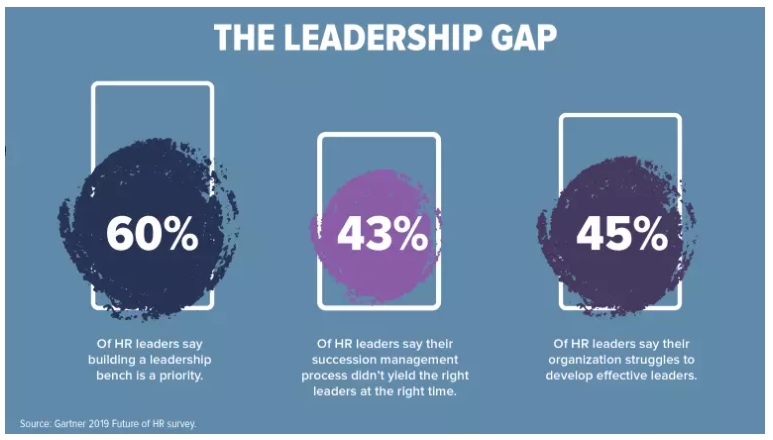
Ensure That Your Team is Skilled Enough to Accomplish the Goal(s)
Either employing workers with the necessary skill set or retraining current employees can ensure that the team has the right set of skills.
The cost of hiring individuals with the necessary skill set tends to be higher. However, having the right skillsets on a project will ensure that you produce a superior product. When your ultimate goal is business expansion, your people resources can be some of your most valuable assets in accomplishing that.
Conversely, training current personnel can be less expensive, but achieving the desired competency levels can take longer as there may be associated learning curves.
Once you have selected the ideal candidates and set them up properly, it is crucial to ensure that you can monitor their progress. By developing a product roadmap and making investments in it, you can monitor the development.
The ultimate objective of this organizational structure is to grant autonomy to individuals at each functional tier and encourage team productivity. At no point during the development of these internal benefits, should the end user (customer) be considered to be of a lesser priority.
Your Users Should Take Center Stage in This Process
Product teams should be set up to represent the objectives and preferred working methods of the organization. Think about these three aspects when structuring your product team:
• One, keep an eye out for those who are deeply concerned about an issue.
• Second, focus on giving them the tools they need to solve it on their own.
• Third, throughout this process, keep your end user in mind.
Sometimes, certain stakeholders have a propensity to feel a bit disconnected from the project. They’re may be unsure of their particular endgame and what they will ultimately be responsible for.
The organizational structure of the product team should match the business’ goals. It is your duty as a product manager to see to it that this occurs.
The utilization of Objectives and Key Results (OKR’s) is one method to empower your team and maintain their attention on the end user. This approach helps to ensure that all stakeholders will remain focused on the project’s goals.
Four Key Benefits When OKRs are Strategically Aligned
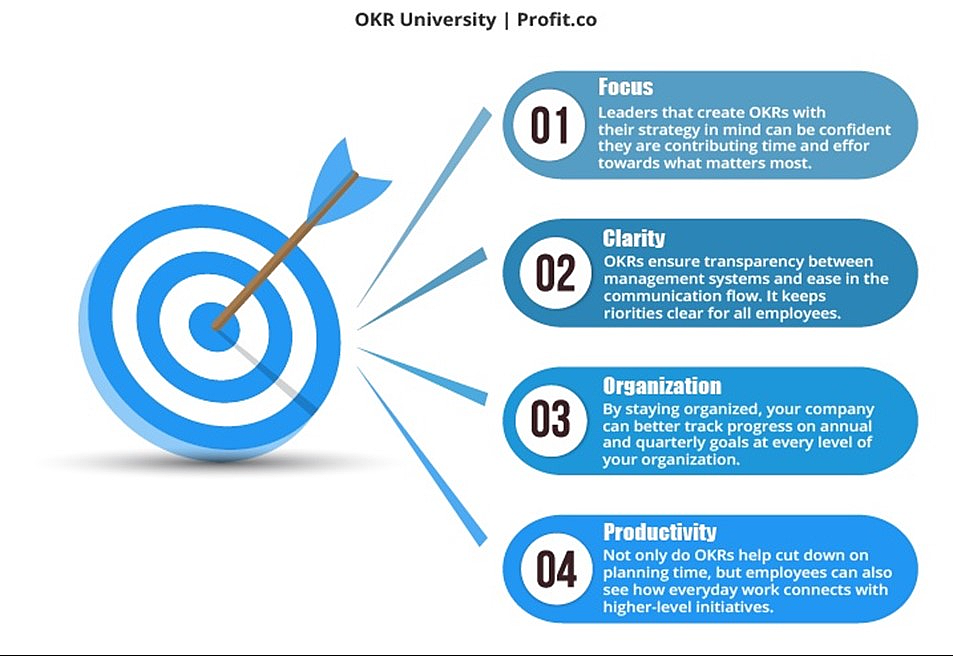
Embrace Your Team’s Potential with Mini-Projects
As they advance through the project, this strategy will help them feel a feeling of ownership for the outcome. Personas and user stories are the best tools for maintaining end-user focus. It enables you to comprehend their requirements and how to meet them.
It’s acceptable to occasionally need to make changes as you go. It’s crucial that you’re always learning and refining your process.
It’s acceptable to make mistakes occasionally. What matters, though, is understanding your errors and learning how to prevent them in the future.
All businesses, no matter how big or little, may benefit from empowered teams. The secret to success is being able to alter and evolve with your business.
Monitor your Discovery Sessions for Signs of a “Cargo Cult”
Be aware of this phenomenon– This is essentially a mindset that copies an existing, successful approach to a different issue without properly analyzing and understanding the workflow and/or the real outcome. Or in other more layman’s terms, it’s when we copy an existing project’s workflow onto another one without necessarily understanding how it works in the hope of achieving the same results. Obviously, it is a poor approach to designing a solutions-based project with its own unique set of challenges.
You should give ample consideration to understanding your team’s motivations, as well as your own. Additionally, you should comprehend how these motivations fit into the organization’s overarching goals.
When activities become a bit too repetitive or habitual, it is common to feel less creative. If leadership within the organization is consistently pushing for progress, you can take the necessary precautions to prevent this within your team.
Knowing The Advantages of Optimization
Companies do not implement business process optimization just because it is a trendy term in the business world. Knowing the advantages it offers your company gives you a yardstick for gauging your progress.
Your time and resources are extremely valuable and limited as a business owner or CEO. As a result, it is of utmost importance to learn of real-world success stories where business process optimization has greatly impacted a company’s bottom line.
Consider the success of the US-based, e-commerce logistics startup, ShipCalm. Through business process optimization, this company was able to resolve and get beyond many of its more notable problems. When you decide to optimize your processes, your company will get a number of advantages, including the following:
1. Adherence to Regulations
Industry regulations are in place to uphold law and order for the benefit of society as a whole. Businesses that violate the set norms and regulations can ultimately be prohibited from operating within the US market and/or can be subject to strict penalties.
When processes are disorganized, regulatory criteria tends to not be followed consistently. When you streamline your business processes and take regulatory compliance into mandatory consideration, your business will operate more efficiently and greatly minimize and/or hopefully eliminate regulatory shortfalls.
2. Lessening of Risks
When there is an optimal process to accomplish a goal, there is also a suboptimal process. And the risks tend to increase in the presence of a suboptimal workflow.
Some negative outcomes, if they occur, can be more far-reaching than others depending on the nature of your business. Regardless of a risk’s severity, it can be avoided by strengthening your procedures and, inherent to those procedures, you are accounting for worst-case scenarios.
At a minimum, as a business owner or executive, it is of utmost importance to ensure the safety of your workers and clients. Through the development of an enhanced technique of operations, business process optimization detects hazards resulting from the execution of your current processes and aids in minimizing or eliminating them.
With standard operating procedures (SOP’s) that have been validated and been deemed risk-free or minimal, you can provide your staff with the assurance that their safety is key as they perform their tasks. They will be more able to contribute at their optimal capacity.
3. Simplified Operation
Every business process is most effective if there were no bottlenecks or constraints. A constraint is any input into a process that impedes workflow or throughput, simply by its presence.
Task turnaround times are prolonged by bottlenecks. Finding accommodations or solutions/workarounds for constraints is a major component to streamlining a workflow.
When business procedures are improved, even the most complicated ones can become the simplest. By accommodating and/or eliminating bottlenecks, optimization enables the connection of separate operations into a single, fluid workflow.
Automation is a wonderful example of optimizing business operations especially when it comes to repetitive tasks. Automation of these repetitive tasks can then free up resources for concentrating on optimizing more crucial ones.
By 2024, 69 percent of typical managerial labor will likely be automated, according to Gartner, a company that provides executives and their teams with actionable, unbiased insights. Therefore, suffice it to say, automation is not only a viable optimization option in the present, but will continue to be in the future.
4. Continue to uphold consistency and quality control
Are you hoping to attract more clients and boost your client retention rate? In addition to marketing, perhaps you might focus more on boosting the caliber of your products or services by streamlining your operational procedures.
The value of your product(s) and/or the quality of your service(s) will influence whether or not you retain new or existing clients.
Your ability to consistently provide high-quality products or services provides you with a competitive edge. Your ability to replicate superior quality throughout your portfolio gives your clients confidence. Customers will feel confident to call you whenever they need you because they know they can always count on you to provide the value they are paying for.
You can automate some of your more complex procedures to reduce human error while you improve your business processes for consistency and quality assurance. There are fewer errors when complicated operations can be reduced down to only the most minimal inputs.
5. Better Resource Management
Your resource management procedures should indicate for how long those resources can be maintained. Inefficient processes tend to require that you spend more resources than necessary to complete tasks. Further, the outcomes will not be optimal, which, as a result, necessitates an even greater investment of resources. Ultimately, inefficient operations will be depleting your resources, and more importantly, eating into your profits.
Eliminating redundancy is one approach to stop your processes from consuming all of your resources. For every stage of a process that serves a clear purpose, there should also be a process around it that eliminates waste, whether it is in activities or resources.
Lastly, because every layer of your process is results-driven, business process optimization aids in the creation of efficient processes with clear goals. By eliminating bottlenecks, i.e., constraints, resource utilization tends to be optimized. You get optimal use out of your resources more effectively and maximize their benefits.
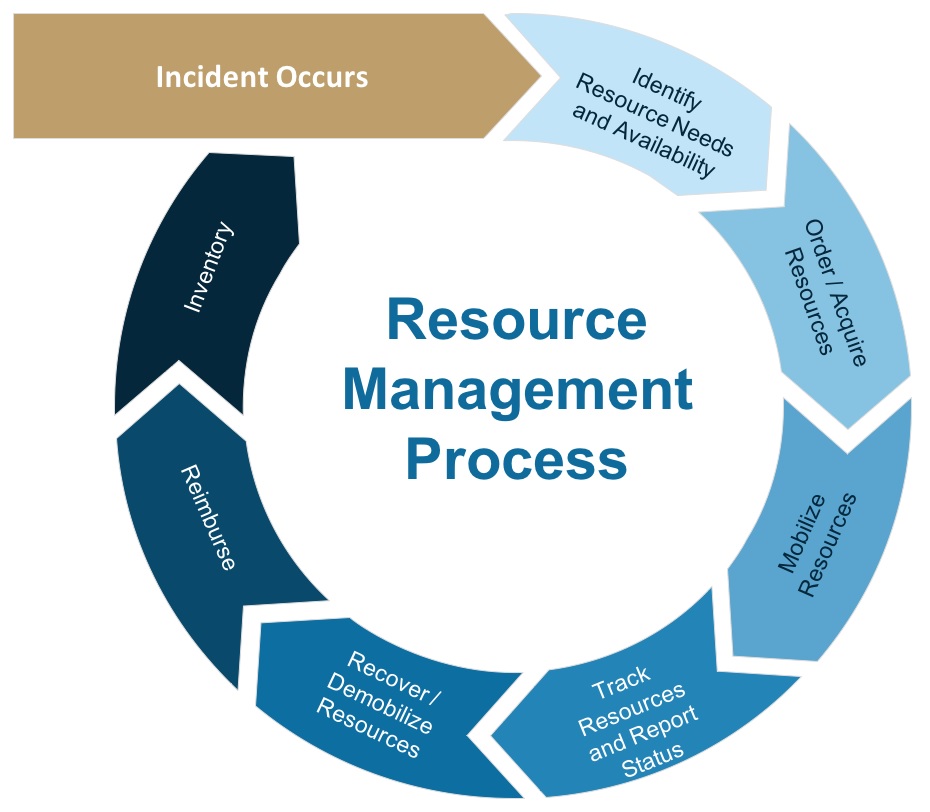
6. Increased Client Satisfaction
The goal of the majority of tasks performed at work should be to please your customers and ultimately, your shareholders.
Customers tend to purchase a given product or service when their requirements are addressed in exchange for the perceived value given.
The “how-to” of gratifying your customers is defined in the implementation and ongoing nature of effective business processes. Achieving customer delight is challenging if your operations are inefficient.
Perhaps some of your current business procedures cause you to fall short of putting a smile on your customers’ faces. Not to worry, you can correct that shortcoming by optimizing your business processes.
Where are you and your customers failing to meet one another’s expectations right now? What are the complaints of your clients? Examine the procedures that are utilized to accommodate them in those areas of your business and perform research for a more effective way to carry them out.
As you’ve read here, business process optimization has several advantages. However, is optimization truly necessary for your company? The answer is a resounding, “Yes!” and we will continue to examine that in the upcoming segments of this program.
Conclusion
When it comes down to it, there is no ideal template to set up a product team. However, part of the overall strategy is comprehending your company’s objectives and adapting them where necessary to meet those objectives. Reorganizing and restructuring as necessary is beneficial.
Therefore, it may not be judicious to cut costs on the labor involved in reorganizing. In order to realize the full potential of your business, it may be a necessary element of further success.
Making sure that the appropriate individuals are in place to successfully deliver on optimization tasks is also crucial. If your current team seems to already have its redundancies, you may consider reallocation of resources early on. Consider applying their individual value towards other areas of the project.
A reorganization may be necessary if there is limited opportunity for expansion inside your organization, or if interacting with other teams is challenging due to organizational structure.
These are just a few indications that it may be time to reorganize your business. However, being proactive rather than waiting until things drift further out of control is key.
Having a defined framework and maintaining organization are two of the best methods to be productive as a product team. It may be vital to continue to reallocate your team so they may work on many projects at once as your business expands.
Executive Summary
Chapter 1: Baseline Assessment
The Nature of Baseline Assessments and the Different Types
There are four main Baseline applications with several variations for other business applications.
The key areas are:
1. A Comprehensive Organizational Analysis gives firms a way to measure their entire organization objectively and quickly identify their best opportunities for organization optimization programs. Think of it as an “MRI” that swiftly and easily assesses business disciplines. This is a fantastic tool for assessing general management and employee alignment as well as the extent of executive alignment or misalignment. You will assess factors that are important for building high-performing, long-lasting companies, such as competitive advantages, marketing, finance, sales effectiveness, execution, required technologies, building teams, rewards/compensation, values, and credibility.
2. The Sales Baseline for a “deep dive” into topics pertaining to sales and marketing specifically. You’ll go over areas where better marketing, sales tools, procedures, work habits, and environments will result in more productive salespeople and more sales.
3. Leadership Development for your present and your up-and-coming leaders. You assess leadership competence (what a leader knows) and leadership character (who a leader is), two crucial competencies. Competence without character can raise moral concerns, result in some of the most recent business-related headlines in American history, and cost shareholders billions of dollars in value. Character without competence may lead to companies that are moral but underwhelming because they are too laid back. or which are missing out on important changes in their business because they are going down the wrong path.
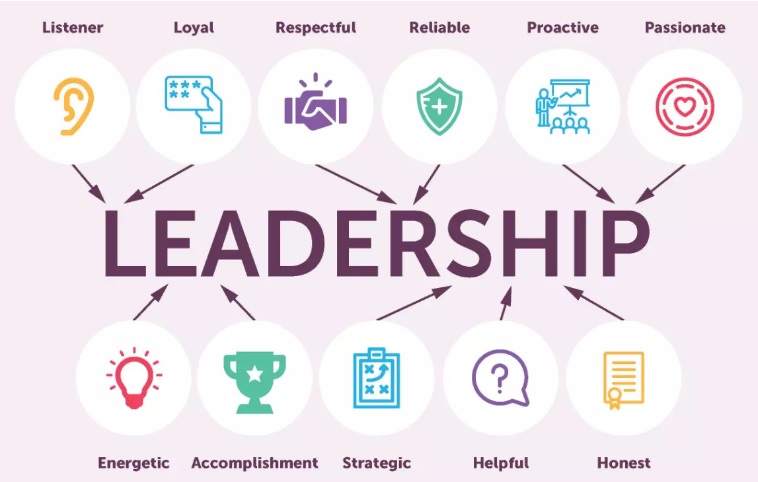
4. A Board Baseline is a board of director’s assessment that quickly assesses a board of directors’ overall effectiveness from two perspectives:
(1) their capacity for collaboration, and
(2) the extent to which they are in compliance with governance best practices and significant regulations like Sarbanes-Oxley.
Organizations in the governmental, corporate, and nonprofit sectors can benefit greatly from this type of assessment.
In summary, I am sure that you have heard the phrase, “If I only knew then what I know now”? You may get the information you need right away from the Baseline Assessments to keep on top of your business.
From the assessment phase of the larger organizational optimization process:
• You will gain a more focused, motivated, and aligned organization that can address your greatest opportunities and threats after completing the baseline evaluation.
• You will gain clarity regarding the measures required to accomplish your goals within a given time frame
• You will learn to make decisions based on objective data instead of depending solely on educated guesses or gut feelings,

Chapter 2: Understanding Structure
Online communication has grown and improved in the last several years at a never-before-seen rate. Software has expanded the possibilities for business communication beyond email to include creative intranets and social media platforms. The workplace has been significantly impacted and is undergoing transformation as a result of the reduction in traditional communication techniques and the sharp increase in internet communication.
Optimizing communications via emerging technologies can help firms move to a successful new organizational structure as they continue to restructure in order to remain competitive. According to research, businesses can enhance their trust with employees by implementing several organizational communication initiatives.
Leadership must be aware of the benefits and drawbacks of communication technology in order to build internal communication channels that are appropriate for the organization’s objectives, strategic goals, and structure. Employers must be aware of and equipped to handle the typical communication difficulties that arise in different organizational systems. For instance, firms can now form virtual teams and offices thanks to communications technology. Members of a virtual team collaborate virtually while working on a job, using tools including email, instant messaging, teleconferencing, videoconferencing, and web-based workspaces. Although virtual teams have many benefits, including less travel expenses and flexibility in personnel and work schedules, they can present difficulties. Managing team logistics and learning new technology can be challenging for virtual teams. The lack of nonverbal cues like body language and intonation makes communication extremely difficult. According to research, firms can overcome these difficulties by providing efficient support and training.

Global Concerns
Organizational structures frequently need to be altered as businesses grow internationally. Before operating offices abroad, a company’s executives should make a thorough plan.
When an employer plans to establish a foreign branch, hire foreign personnel, and develop a globalized strategy, many problems come into play. The following are a few of the questions that need to be addressed:
• How do national legal standards and procedures for human resources differ from one another?
• Should a corporation open an HR office in the other country or should HR representatives at the headquarters handle the work?
• Should a company use consultants to handle personnel services and local hiring on the local level?
Employers risk failing if they enter another country without a solid HR strategy in place.
When a company creates an overseas office, HR specialists and other business executives should be able to connect with employees there just as successfully as those nearby. That might be difficult. Face-to-face communication can be replaced by using videoconferencing and a strong intranet.
Employees must be aware of language, cultural, religious, and social distinctions among coworkers and business contacts due to the rapid developments in technology that effect worldwide communication. All staff members should receive cultural literacy training at the company, not just managers and CEOs who travel.
Employers should also be aware that global virtual work is much more complex than local structures due to language limitations, time and distance issues, the lack of face-to-face interaction, and, most importantly, the barriers provided by cultural variations and individual communication styles. These procedures can improve connections between international virtual teams:
• Using video and audio conferencing, online chats, and e-mail in addition to one-on-one communications.
• Publishing team member profiles that describe their backgrounds and responsibilities inside the company.
• Being aware of the level of engagement team members may provide if they are required to meet at unfavorable times across several time zones.

Chapter 3: Structural Assessment
Products for Organizational Assessment
The following are the main outputs from the organizational assessments:
• Organizational Impact Assessment (OIA): Offers details on the readiness of organizational entities and staff to implement the transformation. The OIA will identify the direct and indirect effects of the transformation on the workforce, direct and indirect stakeholders, and the sponsor’s mission.
• Organizational Risk Assessment (ORA): This tool gives sponsor executives information on the nature and seriousness of transformation risks and concerns, as well as viable mitigation strategies. An overall organizational impact assessment may include the ORA.
NOTE: Sponsor executives are given the business intelligence to design the organizational change management (OCM) direction by the organizational change strategy generated from the OIA and ORA.
• Optional Deliverable: Workforce Transformation Strategy: Describes the transformation plan and how it will be integrated with the sponsor’s technical and deployment teams. It also outlines how the transformation program management team will oversee daily OCM activities and briefings.
• Communications Planning: Systems engineers must be aware that a system science approach entails communications planning and outreach techniques to begin and maintain communications with impacted organizational entities and significant transformation actors (e.g., internal and external stakeholders). The creation of short-term communications and subsequent implementation of the plans are required for communication planning. The SEG article “Effective Communication and Influence” provides additional details on implementing and creating communication strategies and plans.

Chapter 4: Team Structure
Team structure is a type of organizational structure where workgroups or teams make up the entire organization. Employee empowerment is essential within this organizational structure since there is no clear chain of management authority running from top to bottom.
Additionally, “team structure” refers to the make-up of a single team or a system of multiple teams. It is fundamental to the teamwork process. Effective leadership, communication, mutual support, and situation monitoring are ensured by a well-structured team.

Today, a company’s everyday operations are distributed among teams rather than the traditional organizational structures where each business activity was handled by a different department. Teams are adaptable and capable of creating products, striking deals, negotiating pricing, offering services, coordinating projects, etc. There are production teams, marketing teams, sales teams, research and development teams, etc.
Every business uses one of the following six main team structures:
• Problem-Solving Teams: Typically, this kind of team consists of five to twelve people. The group meets once a week to discuss and resolve issues pertaining to the functioning of one particular department.
• Cross-Functional Teams: These teams are known as cross-functional teams when officials from diverse business operations but from the same organizational level work together to complete a shared operation.
• Self-Managed Teams: While problem-solving teams may provide recommendations, they lack the power to put those recommendations into action. Self-managed teams are created to address this issue because they are responsible for putting solutions into action and for the results as well.
• Virtual Teams: The idea of a virtual team makes it easier to manage remote members in the age of internet and mobile technology.
• Matrix Framework: The majority of firms establish their teams using this structure. Basically, it blends functional departmentalization with product departmentalization.
• Bureaucratic Teams: These groups are organized around formally regulated, largely regular tasks. The duties carried out by these teams are extremely specialized, and decision-making occurs along a particular line of command.

Chapter 5: Executive Leadership
How to Improve Your Executive Presence in Five Key Areas
“I’m a top performer, I’m doing great, and my company is meeting its goals, yet it seems like people think I’m a jerk, and I have no idea why.”
This is coming from a rock star executive whose company was producing amazing results for her business while also leaving “dead bodies” and a trail of tears in its wake.
Believe it or not, this is not unusual. You have the combination of excellent work, incredible talent, and amazing people but you still have a struggle with unforeseen consequences or outcomes. However, if the person wants the outcomes to consistently be different, it’s not a difficult fix.
Three things can help to determine a leader’s leadership style and the culture (team, organizational, or both) they are cultivating:
• Their presence and the way they “show up,”;
• The value they place on others;
• And the size of the “container” they hold for them, as well as their desire to be honest with themselves, take responsibility for their actions, and go for what they want.
These are not an insignificant set of characteristics, so let’s start with the first one, which has to do with being present and also the application of self-management. The hidden ingredient that determines whether a leader has an influence is called IEP (Intentional Energetic Presence). Whether or not the leader realizes it, it is constantly in motion and having an effect on those in the leader’s vicinity. In the majority of cases, the leader’s IEP needs to be given consideration when talented individuals are feeling burned out or aren’t quite having their usual impact.
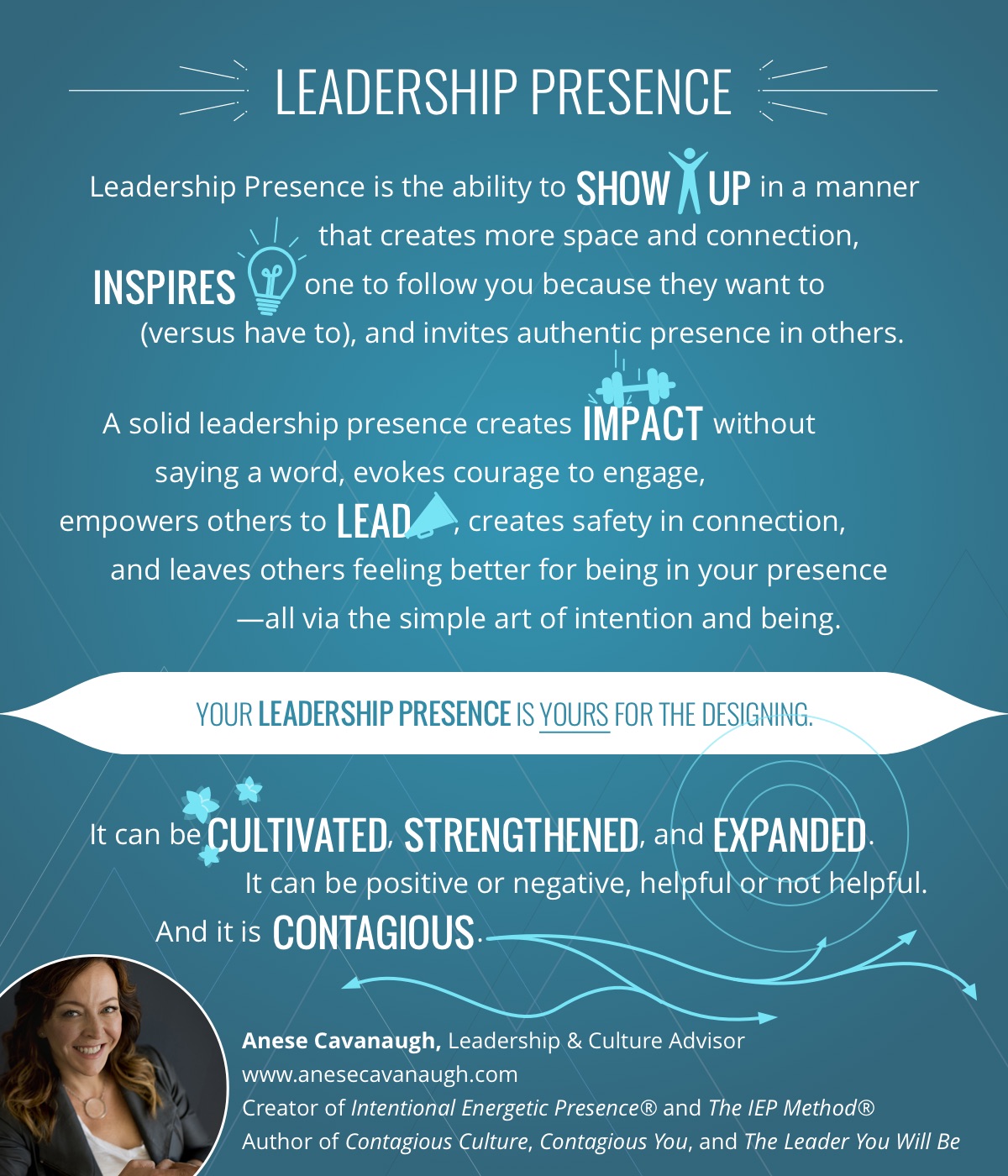
IEP has two components:
• The internal: This is in regards to how you feel, how you feel energetically, how much room and joy you have for yourself
• The external: This is in regards to how you make other people feel, your presence, your ability to have people follow you because they want to, not because they have to.
The internal side of IEP, which serves as the basis for leadership, often feeds the external side of IEP, which is obviously the most visible aspects of leadership. The external will be simpler and more effective as the internal component becomes more robust. This interaction of internal to external is like a skillful dance. This dance is continually occurring through one’s level of intention, energy, and self-care as well as through the quality of one’s presence with others. This includes how one perceives the individual leader in their physical presence and the atmosphere they create (which is really just their underlying attitude, intention, and energy).
Here are five suggestions for improving your leadership presence so that your IEP serves as both an invitation to others and a source of support for you.
1. Your Physical Presence
How do you present yourself physically? Pay close attention to your tone, posture, breathing, and facial expressions.
2. Your Mental Presence
How fully engaged are you in this conversation, with this person, and even with this article right now? Remain alert.
3. Your Presence Emotionally
How attentive are you to the events taking place in your life? Are you living your life and giving yourself permission to feel and act authentically? Repressed feelings have a habit of surfacing, frequently at the strangest times. Allow yourself some room to feel.
4. The Extent of Your Accountability
Are you experiencing your life or simply existing? Or are you making it happen? Is everything that is not currently going right in your life seen as someone else’s fault? Accept responsibility for your role in contributing to subpar outcomes, strained interpersonal connections, and/or simply not receiving what you desire.
5. Your Purpose
How deliberate are you about your influence, the way you want others to perceive you, who you want to be, and the way you want to live your life? Make some resolutions. Also, take note of your intentions for other people. A little bit of self-awareness and deliberation can go a long way.
All of these factors affect one’s internal and external presence, which in turn affects one’s efficacy and power as a leader and as a person. Finding the areas in which we contribute to our own difficulties or negative influence and presence can be difficult, and even painful at times. However, taking the responsibility to address these areas can also be wonderfully freeing since we have the power to change these outcomes as we lead ourselves.

Chapter 6: Resource Optimization
How To Use Resource Optimization Techniques Successfully
Resource optimization approaches will aid managers in making sure that there is always the appropriate number of processing, memory, storage, and network resources available to handle the workload in IT-driven organizations. As a result, these organizations may use current resources more effectively by scaling their IT infrastructure up or down in response to demand.
Studying your organization by examining its problems, strengths, and future objectives is another technique to successfully apply resource optimization. Can you identify any untapped resources? Are there any instances where departments have an excess that eventually degrades and becomes waste? You can properly manage and utilize resources by analyzing these types of areas of your business.
Selecting The Best Resources
You should maximize the following five resources as a leader:
1. Time
2. People
3. Money
4. Technology
5. Processes
Utilizing resource optimization technologies will aid you in the successful optimization of each of these categories.
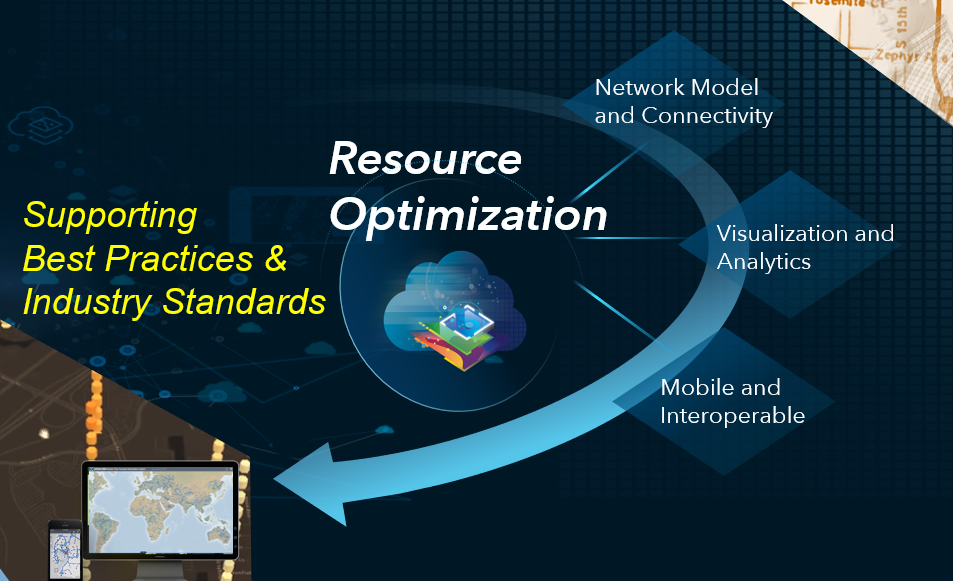
Tools For Resource Optimization
The days of managing projects manually are long gone. Today, you can greatly benefit by employing resource optimization technologies. Utilizing resource optimization software makes it simple to see how the project is progressing and who the stakeholders and contributors are. As examples, you can determine whether there is a demand for personnel and also whether there is a specific constraint, simply by reviewing the dashboard of job scheduling software.
Resource optimization software is an advanced set of tools that streamline projects by helping to identify areas of need (and surplus as well) in order to minimize human error and/or oversight.
As another example of a resource monitor, the review of employee skillsets enables you to determine whether you need to acquire more personnel rather than assigning highly skilled activities to workers who lack the necessary qualifications. This will aid in keeping product and/or service quality at a maximum.
Software for project resource planning is used by many professional services businesses. By employing this software instead of antiquated project management techniques, leaders can make decisions faster and thereby fulfill their goals more efficiently.
Final Reflections
It is advisable to employ resource management tools and procedures to make sure even single tasks are completed when you are managing multiple projects. Utilizing these technologies will facilitate work while maximizing resource and employee potential.
Because the resource management systems can forecast manpower based on historical data it has stored over time, you will be able to manage resource restrictions better by viewing trends. Operations can be maintained by managing your projects on a portfolio level.

Chapter 7: Best Practices
Guidelines for Improving Performance
As stated earlier, it is a recommended practice to monitor for problems and analyze performance, but if your technology doesn’t enable you to prioritize and optimize inputs into a given process that are adversely affecting that process’ performance, you still have some work to do.
Get Everything in Order
Establishing your internal performance best practices is step one. Considering the vast array of front-end performance optimization techniques available, it may at first seem daunting to define your best practices. Don’t worry, just begin modestly. Similar to how you defined your business KPI’s, start by posing a few questions to your team. Keep in mind that there is no such thing as a one-size-fits-all approach to a given system’s performance. Use the inquiries you generate to identify the performance best practices that most closely match your company’s needs and the way you want to use the output (such as a website). You can always add to your list of best practices as you go, so start out by asking just a few questions.
Additionally, think about assembling a group of various organization stakeholders to assist in figuring out how your best practices may completely fit with and support your business needs. Obtain viewpoints from various divisions of your company, such as development and/or operations. Together, develop your list and decide what constitutes “mission essential” issues vs performance losses that are tolerable.
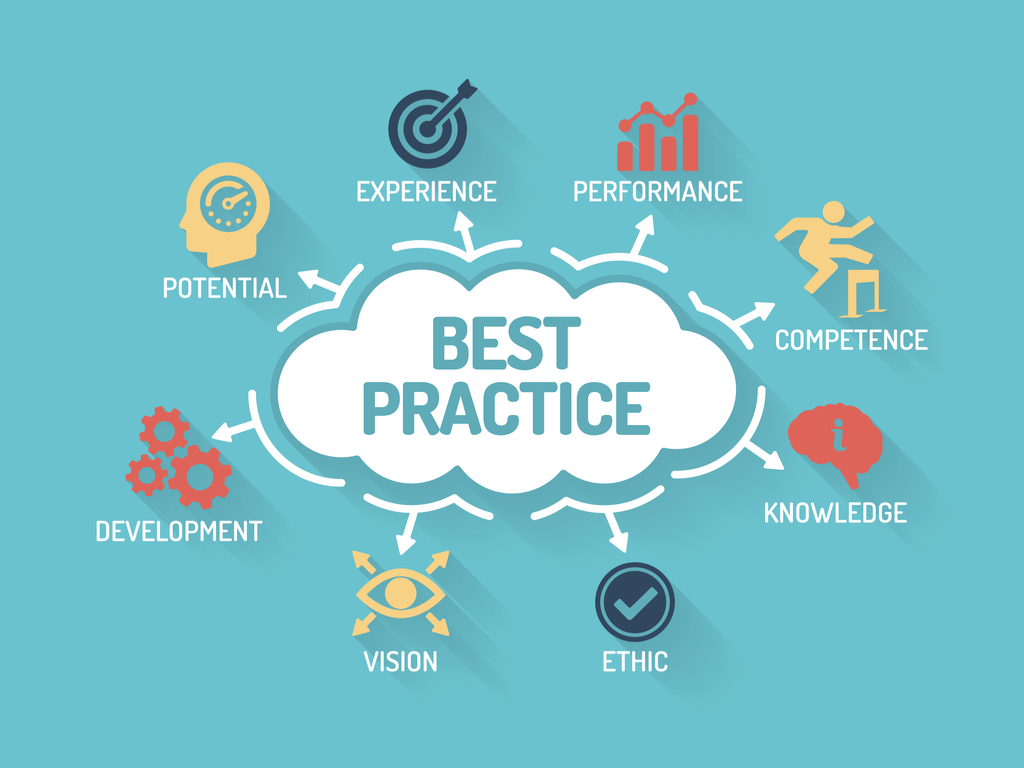
The following are some possible discussion topics around our website optimization example:
• How many resources are we loading per page? Should there be a cap on that amount that we never go over?
• Are content delivery networks being used? If not, should we go that route?
• Is there a desired page load speed?
• Is every image and piece of media optimized?
• Do we use caching for resources that are static? If so, how long are the items cached for?
• What kinds of performance lags are deemed tolerable? What do we consider to be “critical”?
Not even sure where to begin with questions? Make a list of your best practices and begin analyzing your website using online tools like Google PageSpeed Insights, YSlow analyzer (based on Yahoo!’s rules for high performance websites), and Rigor monitoring and optimization.
Be The Performance Policing Force
It’s time to put your best practices into action after you’ve decided what they are. Build an internal tool or use a commercial optimization tool similar to functionality on the above optimization websites to test your best practices as part of your continuous integration process. You’ll require a tool that can evaluate your best practices in light of policy parameters, suggest a fix, and notify you of any performance flaws or issues that fall inside your pre-specified thresholds.
1. Review Your Policies: Once your best practices have been established, you should continue to evaluate your website, taking care to consider any ongoing changes. You can also set thresholds that correspond to your defined restrictions and develop custom check criteria to flag areas that could use improvement. Run your test, and if any component of a page deviates from your best practices, your website optimization test should indicate the error when the error threshold for reporting is met.
You can integrate optimization into your build system or continuous integration processes to automate regression detection which will allow you to find any new bugs right away, and most importantly, before they are published.
2. Address the Issue: Your analytical tools aren’t very useful if they don’t assist you in solving the issue, as previously stated. At length, a prioritized list of optimizations from a library of industry best practices can be found online.
3. Produce Smart Alerts: When individuals get too many alerts, those alerts are eventually perceived as noise and get ignored, due to the effects of notification fatigue. Further, no one wants to open an inbox full of low-priority messages and have to manually separate the crucial messages from the somewhat irrelevant ones. Create your own alert criteria depending on the thresholds you set in your performance best practices to reduce noise. Determine who and when to warn for the most urgent and important concerns by setting alert parameters.

Chapter 8: Tribe Leads
Since the first commercial enterprises adopted the United States Navy’s organizational structure in the 17th century, this classical organizational structure has served as the standard model for the ideal organizational structure, giving rise to titles such as chief executive officer. Many businesses are still structured using this idea today. This top-down hierarchy, however, can hinder agility and hamper workflows. Additionally, there can be a lack of client focus, with the executives’ particular ambitions and aspirations taking precedence.
The network organization avoids using conventional structures. It is structured in a process-oriented way and does not call for a traditional management approach. Teamwork and the advantage to the consumer are always prioritized in this situation.
Individual teams take initiative and responsibility for their respective contributions towards the goal(s). This approach selects for flexibility and independence.
There are various types of network organizations utilizing pathways to better team agility other than the Spotify model, and are implementing such model concepts as holacracy and sociocracy 3.0. In these pathways, teams self-organize in rings by way of their roles. Further, there is a hierarchy within the circles. A circle of a higher level is comprised of circles of a lower level.
The unique position of the lead link/circle lead (holacracy) or leader (sociocracy), which is best comparable to the position of the product owner or the position of a project or team coordinator, is one example of how this pathway is different. She or he keeps tabs on the objectives, plans, and tactics of his or her circle. The parent circle’s interests are also represented through the main link.
There isn’t a manager. The organizational structures are extremely comparable. Holacracy is a model with a paid license, while Sociocracy 3.0 is available under a 4.0 International Creative Commons Attribution license. Compared to the Spotify model, both are far more complex.
All of these types of corporate organization pathways allow for some degree of agile working methods.
The use of management techniques, such as OKR (Objectives and Key Results), and agile techniques, such as Scrum or Kanban, does not alter the traditional organizational structure, but gives teams the ability to work more autonomously and with a results-oriented approach.
The OKR technique can be used by businesses already using agile methods as a productive way for implementing strategies and setting goals. As the “successor” of MbO (Management by Objectives), OKR is applicable to all organizational structures.

Chapter 9: Skills Assessment
How To Use Your Organization’s Talent To Its Fullest Potential In Order To Develop And Expand In The Market
Maybe you have come to the realization that some team members aren’t quite reaching their full potential. Have you taken the time to consider whether or not these unique individuals actually fit in these positions within your organization? Perhaps your best achievers are beginning to look restless, which only tends to exacerbate the situation. It may be vital to look at your time allocations to these sorts of issues around getting your staff in peak performance shape.
According to Meghan Bilardo, director of Organizational Strategy and Assessment at Corporate College, “Talent optimization is so important today because businesses and the economy are starting to recover, and now business leaders are challenged by a new concern: talent,” the author said. “No longer are they cost-cutting and trying to survive; they’re really looking to innovate and grow, and that takes a new strategy and approach to talent.”
Why Is Talent Management So Crucial?
Organizations need qualified and motivated personnel to succeed in the coming year and beyond. Either they may develop the talent they already have on staff through training, mentoring, and assessment procedures, or they can try to lure talent away from rival companies. Be able to provide employees with the capabilities to innovate and having opportunities to grow and advance within an organization are very crucial this year, especially for those in supervisory and mid-level manager positions. For the sake of assisting the company in achieving its goals, managers must be aware of their staff members’ aptitude for new and evolving skill sets.
What Are Some Repercussions For Corporations If They Ignore This?
Businesses that only use the outdated hierarchical structures are going extinct. Our business climate is more skill-based than ever, and we are more and more aware that performance is driven by ability. Some challenging aspects are that businesses (and leadership) do not clearly scope where their talent is, what their employees are capable of, and what they need them to be able to do differently in order to succeed. Talent optimization must be incorporated into an organization’s strategic planning procedure.
The selection process, which entails everything from identifying the important positions required to accomplish company objectives, to sourcing candidates, and finally recruiting them, are other key factors to consider. Many organizations lose out on opportunities to succeed because they lack the procedures and resources necessary to take these important steps optimally.

Chapter 10: Employee Buy-In
Getting the support of the staff who will implement and utilize new optimization measures is essential if you want the deployment of new optimization programs in your company to go as smoothly as possible.
Most workers are aware that change is a constant in today’s workplace. However, adopting new structures, processes and workflows can still be challenging for employees, who must balance new workplace initiatives along with the challenges of completing existing projects.
As stated above, if your company is introducing optimization processes, you want the transition to go as smoothly as possible. To do this, you must gain the support of the staff members who will be using the new procedures. Take into account these suggestions for considering employee needs in order to win over your team:
Make Your Intentions Known
Early and frequent communication is essential. You want to give all team members who will use the system as much lead time as you can, regardless of the changes you’re making. You can do this via workplace assessments or leveraging the collaborative functions of other platforms such as Trello, Confluence, or Slack. You can start the process of getting buy-in by simply announcing that a change is on the horizon. Keep in mind to consider collaborative platforms that best accommodate any remote teams as well.
Early On In The Process, Solicit Input
Take the time to solicit employees to learn more about their needs and how they view the optimization strategic plan before you construct your official implementation strategy. If it is not possible to speak with every team member, attempt to at least sample a few different departments to get a sense of how the new solution might impact workflow. Tech-savvy departments will obviously contribute more in any technological adoption, and they will most likely have more insightful ideas to share.
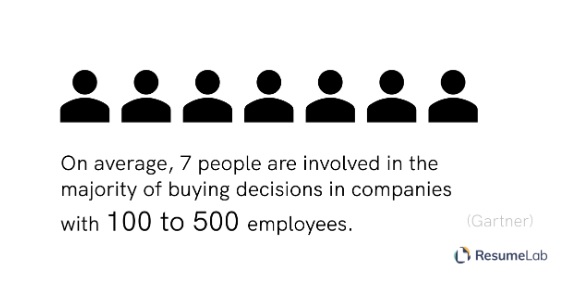
Make A Practical Plan
You can create a plan with an acceptable rollout timeline after obtaining data from various stakeholders. Without a detailed, step-by-step plan, your implementation will suffer. Even if you can’t plan for every eventuality, you can brainstorm with your team about potential problems and different scenarios/outcomes.
Take Your Time Implementing
Don’t give in to the need to hasten the implementation once you’ve created a timeline that works for the majority of your team. There will be numerous things that pop up during rollout that you could not have foreseen during preparation, so you will need some degree of buffer to react without overworking your staff.
Give Proper Instruction
Once the measure is installed and tested, your implementation is still not finished. Providing adequate, continuing training is essential for maintaining staff engagement and gaining support for upcoming rollouts. Provide specialized training so that employees can integrate the new solution into existing workflows with the least amount of disruption feasible. Employees will need flexibility to adjust to their new roles and accompanying tasks when a new program is introduced.

Chapter 11: Goal-Setting
The Guide to Optimize Your Goal-Setting Skillset
Only around 20% of business owners actively track business goals, per a recent “Inc.” magazine poll.
Only 23% of businesses succeed in achieving their strategic goals. If these two percentages are related, then consider the following: Monitoring a company’s development in relation to its strategic goals has inherent value. The overall accumulation of best practices for goal setting, however, has been contested, criticized, and even resisted over the years. Goal-setting is actually a combination of art and science, and different management teams will approach it in different ways. The following are responses to typical inquiries concerning goal-setting:
Why Even Bother Making Goals?
A team can come together around shared objectives. People often feel fairly ecstatic after accomplishing their objectives. The foundation for the budgeting and performance management processes can also be accounted for by corporate goals.
How Do SMART Goals Work?
The meaning of the SMART acronym varies depending on the interpretation, although it is universally acknowledged as a standard for goal planning. One widely accepted definition is:
• Specific
• Measurable
• Attainable
• Relevant
• Time Bound
Should I Set Attainable Or Challenging Goals?
Your response to the first question will heavily influence how aggressively a company wants to pursue its goals, i.e., why are we setting goals in the first place. In situations where growth is a priority and as a result, there is a need to push departmental capabilities and personnel, some businesses set aggressive growth targets that serve as the basis for incentive plans, etc. Realistic objectives must be set in order to create a budget. For this reason, many businesses establish lower targets for their budgets and stretch goals to inspire employees. It’s crucial to create goals that are actually attainable since persistent failure to achieve them can be quite demotivating.
What is a BHAG?
Big Hairy Audacious Goal, or BHAG, is a term that was initially popularized by Jim Collins in his number-one bestselling book, “Good to Great”. The ultimate stretch goal is a BHAG, which unites a management team and an organization around a highly ambitious long-term objective, frequently with a 10-year or longer time horizon.
What Should The Ideal Time Horizon Be?
Once more, the goal-setting purpose determines the suitable time frame. Companies have shifted their attention more to the short term in recent years due to increased perceived market volatility. The most common time frames for setting goals are five years, three years, and one year (short term).
What Occurs if My Team Doesn’t Succeed in Reaching Our Objectives?
It is crucial to understand that encountering obstacles does not automatically equate to failure. It’s possible that the market has changed, or that success will require new and/or additional resources. Setting goals helps a business concentrate on a value driver, among other things. By tracking your progress, you can give a problem area more attention while looking for solutions like retraining or enlisting the help of other experts. Only when an uncontrollable external component has changed should a goal be reformulated, e.g., an unexpected increase in raw material cost.

Chapter 12: Vision Statement
Even the most articulate business owners may find writing a vision statement to be a difficult undertaking. You can write a purposeful vision statement using the advice, instructions, and examples provided here.
One requirement is that it must identify your business and, more crucially, its future.
You don’t want your Vision Statement to be so non-descript that it gets reduced to a forgotten poster in the foyer of a corporate office. A compelling mission statement, like Disney’s “to make people happy” or Instagram’s “capture and share the world’s moments,” sticks with you. Your organization’s essential beliefs can be captured in a vision statement that offers a blueprint for where it wishes to go if you are intentional in your efforts and dedicated to putting in the hard work.
What Is A Vision Statement?
Similar to a mission statement, a vision statement offers precise information about the meaning and goals of your company to its stakeholders, and more particularly, its employees. A vision statement highlights the anticipated long-term outcomes of your company’s activities, as opposed to a mission statement, which outlines the who, what, and why of your organization. An early vision for Microsoft, for instance, called for “a computer on every desk and in every home.”
According to Katie Trauth Taylor, CEO of the writing firm, Untold Content, “a company vision statement indicates, at the highest levels, what an organization most hopes to be and achieve in the long run.” It accomplishes the relatively high goal of condensing all the business’s wisdom into a single, powerful statement.
Why is this important? According to research, employees who believe that their company’s goals are important have engagement levels of 68 percent, which is 18 points higher than the national average. Employees that are more engaged tend to be more productive and also be better representatives of the company in the community.
Given the influence a vision statement can have on a business’s long-term success and bottom line, it is important to take the time to create a statement that captures your desire and inspires your team.
Curriculum
Organizational Optimization – Workshop 1 – Optimization Overview
- Baseline Assessment
- Understanding Structure
- Structural Assessment
- Team Structure
- Executive Leadership
- Resource Optimization
- Best Practices
- Tribe Leads
- Skills Assessment
- Employee Buy-In
- Goal-Setting
- Vision Setting
Distance Learning
Introduction
Welcome to Appleton Greene and thank you for enrolling on the Organizational Optimization corporate training program. You will be learning through our unique facilitation via distance-learning method, which will enable you to practically implement everything that you learn academically. The methods and materials used in your program have been designed and developed to ensure that you derive the maximum benefits and enjoyment possible. We hope that you find the program challenging and fun to do. However, if you have never been a distance-learner before, you may be experiencing some trepidation at the task before you. So we will get you started by giving you some basic information and guidance on how you can make the best use of the modules, how you should manage the materials and what you should be doing as you work through them. This guide is designed to point you in the right direction and help you to become an effective distance-learner. Take a few hours or so to study this guide and your guide to tutorial support for students, while making notes, before you start to study in earnest.
Study environment
You will need to locate a quiet and private place to study, preferably a room where you can easily be isolated from external disturbances or distractions. Make sure the room is well-lit and incorporates a relaxed, pleasant feel. If you can spoil yourself within your study environment, you will have much more of a chance to ensure that you are always in the right frame of mind when you do devote time to study. For example, a nice fire, the ability to play soft soothing background music, soft but effective lighting, perhaps a nice view if possible and a good size desk with a comfortable chair. Make sure that your family know when you are studying and understand your study rules. Your study environment is very important. The ideal situation, if at all possible, is to have a separate study, which can be devoted to you. If this is not possible then you will need to pay a lot more attention to developing and managing your study schedule, because it will affect other people as well as yourself. The better your study environment, the more productive you will be.
Study tools & rules
Try and make sure that your study tools are sufficient and in good working order. You will need to have access to a computer, scanner and printer, with access to the internet. You will need a very comfortable chair, which supports your lower back, and you will need a good filing system. It can be very frustrating if you are spending valuable study time trying to fix study tools that are unreliable, or unsuitable for the task. Make sure that your study tools are up to date. You will also need to consider some study rules. Some of these rules will apply to you and will be intended to help you to be more disciplined about when and how you study. This distance-learning guide will help you and after you have read it you can put some thought into what your study rules should be. You will also need to negotiate some study rules for your family, friends or anyone who lives with you. They too will need to be disciplined in order to ensure that they can support you while you study. It is important to ensure that your family and friends are an integral part of your study team. Having their support and encouragement can prove to be a crucial contribution to your successful completion of the program. Involve them in as much as you can.
Successful distance-learning
Distance-learners are freed from the necessity of attending regular classes or workshops, since they can study in their own way, at their own pace and for their own purposes. But unlike traditional internal training courses, it is the student’s responsibility, with a distance-learning program, to ensure that they manage their own study contribution. This requires strong self-discipline and self-motivation skills and there must be a clear will to succeed. Those students who are used to managing themselves, are good at managing others and who enjoy working in isolation, are more likely to be good distance-learners. It is also important to be aware of the main reasons why you are studying and of the main objectives that you are hoping to achieve as a result. You will need to remind yourself of these objectives at times when you need to motivate yourself. Never lose sight of your long-term goals and your short-term objectives. There is nobody available here to pamper you, or to look after you, or to spoon-feed you with information, so you will need to find ways to encourage and appreciate yourself while you are studying. Make sure that you chart your study progress, so that you can be sure of your achievements and re-evaluate your goals and objectives regularly.
Self-assessment
Appleton Greene training programs are in all cases post-graduate programs. Consequently, you should already have obtained a business-related degree and be an experienced learner. You should therefore already be aware of your study strengths and weaknesses. For example, which time of the day are you at your most productive? Are you a lark or an owl? What study methods do you respond to the most? Are you a consistent learner? How do you discipline yourself? How do you ensure that you enjoy yourself while studying? It is important to understand yourself as a learner and so some self-assessment early on will be necessary if you are to apply yourself correctly. Perform a SWOT analysis on yourself as a student. List your internal strengths and weaknesses as a student and your external opportunities and threats. This will help you later on when you are creating a study plan. You can then incorporate features within your study plan that can ensure that you are playing to your strengths, while compensating for your weaknesses. You can also ensure that you make the most of your opportunities, while avoiding the potential threats to your success.
Accepting responsibility as a student
Training programs invariably require a significant investment, both in terms of what they cost and in the time that you need to contribute to study and the responsibility for successful completion of training programs rests entirely with the student. This is never more apparent than when a student is learning via distance-learning. Accepting responsibility as a student is an important step towards ensuring that you can successfully complete your training program. It is easy to instantly blame other people or factors when things go wrong. But the fact of the matter is that if a failure is your failure, then you have the power to do something about it, it is entirely in your own hands. If it is always someone else’s failure, then you are powerless to do anything about it. All students study in entirely different ways, this is because we are all individuals and what is right for one student, is not necessarily right for another. In order to succeed, you will have to accept personal responsibility for finding a way to plan, implement and manage a personal study plan that works for you. If you do not succeed, you only have yourself to blame.
Planning
By far the most critical contribution to stress, is the feeling of not being in control. In the absence of planning we tend to be reactive and can stumble from pillar to post in the hope that things will turn out fine in the end. Invariably they don’t! In order to be in control, we need to have firm ideas about how and when we want to do things. We also need to consider as many possible eventualities as we can, so that we are prepared for them when they happen. Prescriptive Change, is far easier to manage and control, than Emergent Change. The same is true with distance-learning. It is much easier and much more enjoyable, if you feel that you are in control and that things are going to plan. Even when things do go wrong, you are prepared for them and can act accordingly without any unnecessary stress. It is important therefore that you do take time to plan your studies properly.
Management
Once you have developed a clear study plan, it is of equal importance to ensure that you manage the implementation of it. Most of us usually enjoy planning, but it is usually during implementation when things go wrong. Targets are not met and we do not understand why. Sometimes we do not even know if targets are being met. It is not enough for us to conclude that the study plan just failed. If it is failing, you will need to understand what you can do about it. Similarly if your study plan is succeeding, it is still important to understand why, so that you can improve upon your success. You therefore need to have guidelines for self-assessment so that you can be consistent with performance improvement throughout the program. If you manage things correctly, then your performance should constantly improve throughout the program.
Study objectives & tasks
The first place to start is developing your program objectives. These should feature your reasons for undertaking the training program in order of priority. Keep them succinct and to the point in order to avoid confusion. Do not just write the first things that come into your head because they are likely to be too similar to each other. Make a list of possible departmental headings, such as: Customer Service; E-business; Finance; Globalization; Human Resources; Technology; Legal; Management; Marketing and Production. Then brainstorm for ideas by listing as many things that you want to achieve under each heading and later re-arrange these things in order of priority. Finally, select the top item from each department heading and choose these as your program objectives. Try and restrict yourself to five because it will enable you to focus clearly. It is likely that the other things that you listed will be achieved if each of the top objectives are achieved. If this does not prove to be the case, then simply work through the process again.
Study forecast
As a guide, the Appleton Greene Organizational Optimization corporate training program should take 12-18 months to complete, depending upon your availability and current commitments. The reason why there is such a variance in time estimates is because every student is an individual, with differing productivity levels and different commitments. These differentiations are then exaggerated by the fact that this is a distance-learning program, which incorporates the practical integration of academic theory as an as a part of the training program. Consequently all of the project studies are real, which means that important decisions and compromises need to be made. You will want to get things right and will need to be patient with your expectations in order to ensure that they are. We would always recommend that you are prudent with your own task and time forecasts, but you still need to develop them and have a clear indication of what are realistic expectations in your case. With reference to your time planning: consider the time that you can realistically dedicate towards study with the program every week; calculate how long it should take you to complete the program, using the guidelines featured here; then break the program down into logical modules and allocate a suitable proportion of time to each of them, these will be your milestones; you can create a time plan by using a spreadsheet on your computer, or a personal organizer such as MS Outlook, you could also use a financial forecasting software; break your time forecasts down into manageable chunks of time, the more specific you can be, the more productive and accurate your time management will be; finally, use formulas where possible to do your time calculations for you, because this will help later on when your forecasts need to change in line with actual performance. With reference to your task planning: refer to your list of tasks that need to be undertaken in order to achieve your program objectives; with reference to your time plan, calculate when each task should be implemented; remember that you are not estimating when your objectives will be achieved, but when you will need to focus upon implementing the corresponding tasks; you also need to ensure that each task is implemented in conjunction with the associated training modules which are relevant; then break each single task down into a list of specific to do’s, say approximately ten to do’s for each task and enter these into your study plan; once again you could use MS Outlook to incorporate both your time and task planning and this could constitute your study plan; you could also use a project management software like MS Project. You should now have a clear and realistic forecast detailing when you can expect to be able to do something about undertaking the tasks to achieve your program objectives.
Performance management
It is one thing to develop your study forecast, it is quite another to monitor your progress. Ultimately it is less important whether you achieve your original study forecast and more important that you update it so that it constantly remains realistic in line with your performance. As you begin to work through the program, you will begin to have more of an idea about your own personal performance and productivity levels as a distance-learner. Once you have completed your first study module, you should re-evaluate your study forecast for both time and tasks, so that they reflect your actual performance level achieved. In order to achieve this you must first time yourself while training by using an alarm clock. Set the alarm for hourly intervals and make a note of how far you have come within that time. You can then make a note of your actual performance on your study plan and then compare your performance against your forecast. Then consider the reasons that have contributed towards your performance level, whether they are positive or negative and make a considered adjustment to your future forecasts as a result. Given time, you should start achieving your forecasts regularly.
With reference to time management: time yourself while you are studying and make a note of the actual time taken in your study plan; consider your successes with time-efficiency and the reasons for the success in each case and take this into consideration when reviewing future time planning; consider your failures with time-efficiency and the reasons for the failures in each case and take this into consideration when reviewing future time planning; re-evaluate your study forecast in relation to time planning for the remainder of your training program to ensure that you continue to be realistic about your time expectations. You need to be consistent with your time management, otherwise you will never complete your studies. This will either be because you are not contributing enough time to your studies, or you will become less efficient with the time that you do allocate to your studies. Remember, if you are not in control of your studies, they can just become yet another cause of stress for you.
With reference to your task management: time yourself while you are studying and make a note of the actual tasks that you have undertaken in your study plan; consider your successes with task-efficiency and the reasons for the success in each case; take this into consideration when reviewing future task planning; consider your failures with task-efficiency and the reasons for the failures in each case and take this into consideration when reviewing future task planning; re-evaluate your study forecast in relation to task planning for the remainder of your training program to ensure that you continue to be realistic about your task expectations. You need to be consistent with your task management, otherwise you will never know whether you are achieving your program objectives or not.
Keeping in touch
You will have access to qualified and experienced professors and tutors who are responsible for providing tutorial support for your particular training program. So don’t be shy about letting them know how you are getting on. We keep electronic records of all tutorial support emails so that professors and tutors can review previous correspondence before considering an individual response. It also means that there is a record of all communications between you and your professors and tutors and this helps to avoid any unnecessary duplication, misunderstanding, or misinterpretation. If you have a problem relating to the program, share it with them via email. It is likely that they have come across the same problem before and are usually able to make helpful suggestions and steer you in the right direction. To learn more about when and how to use tutorial support, please refer to the Tutorial Support section of this student information guide. This will help you to ensure that you are making the most of tutorial support that is available to you and will ultimately contribute towards your success and enjoyment with your training program.
Work colleagues and family
You should certainly discuss your program study progress with your colleagues, friends and your family. Appleton Greene training programs are very practical. They require you to seek information from other people, to plan, develop and implement processes with other people and to achieve feedback from other people in relation to viability and productivity. You will therefore have plenty of opportunities to test your ideas and enlist the views of others. People tend to be sympathetic towards distance-learners, so don’t bottle it all up in yourself. Get out there and share it! It is also likely that your family and colleagues are going to benefit from your labors with the program, so they are likely to be much more interested in being involved than you might think. Be bold about delegating work to those who might benefit themselves. This is a great way to achieve understanding and commitment from people who you may later rely upon for process implementation. Share your experiences with your friends and family.
Making it relevant
The key to successful learning is to make it relevant to your own individual circumstances. At all times you should be trying to make bridges between the content of the program and your own situation. Whether you achieve this through quiet reflection or through interactive discussion with your colleagues, client partners or your family, remember that it is the most important and rewarding aspect of translating your studies into real self-improvement. You should be clear about how you want the program to benefit you. This involves setting clear study objectives in relation to the content of the course in terms of understanding, concepts, completing research or reviewing activities and relating the content of the modules to your own situation. Your objectives may understandably change as you work through the program, in which case you should enter the revised objectives on your study plan so that you have a permanent reminder of what you are trying to achieve, when and why.
Distance-learning check-list
Prepare your study environment, your study tools and rules.
Undertake detailed self-assessment in terms of your ability as a learner.
Create a format for your study plan.
Consider your study objectives and tasks.
Create a study forecast.
Assess your study performance.
Re-evaluate your study forecast.
Be consistent when managing your study plan.
Use your Appleton Greene Certified Learning Provider (CLP) for tutorial support.
Make sure you keep in touch with those around you.

Tutorial Support
Programs
Appleton Greene uses standard and bespoke corporate training programs as vessels to transfer business process improvement knowledge into the heart of our clients’ organizations. Each individual program focuses upon the implementation of a specific business process, which enables clients to easily quantify their return on investment. There are hundreds of established Appleton Greene corporate training products now available to clients within customer services, e-business, finance, globalization, human resources, information technology, legal, management, marketing and production. It does not matter whether a client’s employees are located within one office, or an unlimited number of international offices, we can still bring them together to learn and implement specific business processes collectively. Our approach to global localization enables us to provide clients with a truly international service with that all important personal touch. Appleton Greene corporate training programs can be provided virtually or locally and they are all unique in that they individually focus upon a specific business function. They are implemented over a sustainable period of time and professional support is consistently provided by qualified learning providers and specialist consultants.
Support available
You will have a designated Certified Learning Provider (CLP) and an Accredited Consultant and we encourage you to communicate with them as much as possible. In all cases tutorial support is provided online because we can then keep a record of all communications to ensure that tutorial support remains consistent. You would also be forwarding your work to the tutorial support unit for evaluation and assessment. You will receive individual feedback on all of the work that you undertake on a one-to-one basis, together with specific recommendations for anything that may need to be changed in order to achieve a pass with merit or a pass with distinction and you then have as many opportunities as you may need to re-submit project studies until they meet with the required standard. Consequently the only reason that you should really fail (CLP) is if you do not do the work. It makes no difference to us whether a student takes 12 months or 18 months to complete the program, what matters is that in all cases the same quality standard will have been achieved.
Support Process
Please forward all of your future emails to the designated (CLP) Tutorial Support Unit email address that has been provided and please do not duplicate or copy your emails to other AGC email accounts as this will just cause unnecessary administration. Please note that emails are always answered as quickly as possible but you will need to allow a period of up to 20 business days for responses to general tutorial support emails during busy periods, because emails are answered strictly within the order in which they are received. You will also need to allow a period of up to 30 business days for the evaluation and assessment of project studies. This does not include weekends or public holidays. Please therefore kindly allow for this within your time planning. All communications are managed online via email because it enables tutorial service support managers to review other communications which have been received before responding and it ensures that there is a copy of all communications retained on file for future reference. All communications will be stored within your personal (CLP) study file here at Appleton Greene throughout your designated study period. If you need any assistance or clarification at any time, please do not hesitate to contact us by forwarding an email and remember that we are here to help. If you have any questions, please list and number your questions succinctly and you can then be sure of receiving specific answers to each and every query.
Time Management
It takes approximately 1 Year to complete the Organizational Optimization corporate training program, incorporating 12 x 6-hour monthly workshops. Each student will also need to contribute approximately 4 hours per week over 1 Year of their personal time. Students can study from home or work at their own pace and are responsible for managing their own study plan. There are no formal examinations and students are evaluated and assessed based upon their project study submissions, together with the quality of their internal analysis and supporting documents. They can contribute more time towards study when they have the time to do so and can contribute less time when they are busy. All students tend to be in full time employment while studying and the Organizational Optimization program is purposely designed to accommodate this, so there is plenty of flexibility in terms of time management. It makes no difference to us at Appleton Greene, whether individuals take 12-18 months to complete this program. What matters is that in all cases the same standard of quality will have been achieved with the standard and bespoke programs that have been developed.
Distance Learning Guide
The distance learning guide should be your first port of call when starting your training program. It will help you when you are planning how and when to study, how to create the right environment and how to establish the right frame of mind. If you can lay the foundations properly during the planning stage, then it will contribute to your enjoyment and productivity while training later. The guide helps to change your lifestyle in order to accommodate time for study and to cultivate good study habits. It helps you to chart your progress so that you can measure your performance and achieve your goals. It explains the tools that you will need for study and how to make them work. It also explains how to translate academic theory into practical reality. Spend some time now working through your distance learning guide and make sure that you have firm foundations in place so that you can make the most of your distance learning program. There is no requirement for you to attend training workshops or classes at Appleton Greene offices. The entire program is undertaken online, program course manuals and project studies are administered via the Appleton Greene web site and via email, so you are able to study at your own pace and in the comfort of your own home or office as long as you have a computer and access to the internet.
How To Study
The how to study guide provides students with a clear understanding of the Appleton Greene facilitation via distance learning training methods and enables students to obtain a clear overview of the training program content. It enables students to understand the step-by-step training methods used by Appleton Greene and how course manuals are integrated with project studies. It explains the research and development that is required and the need to provide evidence and references to support your statements. It also enables students to understand precisely what will be required of them in order to achieve a pass with merit and a pass with distinction for individual project studies and provides useful guidance on how to be innovative and creative when developing your Unique Program Proposition (UPP).
Tutorial Support
Tutorial support for the Appleton Greene Organizational Optimization corporate training program is provided online either through the Appleton Greene Client Support Portal (CSP), or via email. All tutorial support requests are facilitated by a designated Program Administration Manager (PAM). They are responsible for deciding which professor or tutor is the most appropriate option relating to the support required and then the tutorial support request is forwarded onto them. Once the professor or tutor has completed the tutorial support request and answered any questions that have been asked, this communication is then returned to the student via email by the designated Program Administration Manager (PAM). This enables all tutorial support, between students, professors and tutors, to be facilitated by the designated Program Administration Manager (PAM) efficiently and securely through the email account. You will therefore need to allow a period of up to 20 business days for responses to general support queries and up to 30 business days for the evaluation and assessment of project studies, because all tutorial support requests are answered strictly within the order in which they are received. This does not include weekends or public holidays. Consequently you need to put some thought into the management of your tutorial support procedure in order to ensure that your study plan is feasible and to obtain the maximum possible benefit from tutorial support during your period of study. Please retain copies of your tutorial support emails for future reference. Please ensure that ALL of your tutorial support emails are set out using the format as suggested within your guide to tutorial support. Your tutorial support emails need to be referenced clearly to the specific part of the course manual or project study which you are working on at any given time. You also need to list and number any questions that you would like to ask, up to a maximum of five questions within each tutorial support email. Remember the more specific you can be with your questions the more specific your answers will be too and this will help you to avoid any unnecessary misunderstanding, misinterpretation, or duplication. The guide to tutorial support is intended to help you to understand how and when to use support in order to ensure that you get the most out of your training program. Appleton Greene training programs are designed to enable you to do things for yourself. They provide you with a structure or a framework and we use tutorial support to facilitate students while they practically implement what they learn. In other words, we are enabling students to do things for themselves. The benefits of distance learning via facilitation are considerable and are much more sustainable in the long-term than traditional short-term knowledge sharing programs. Consequently you should learn how and when to use tutorial support so that you can maximize the benefits from your learning experience with Appleton Greene. This guide describes the purpose of each training function and how to use them and how to use tutorial support in relation to each aspect of the training program. It also provides useful tips and guidance with regard to best practice.
Tutorial Support Tips
Students are often unsure about how and when to use tutorial support with Appleton Greene. This Tip List will help you to understand more about how to achieve the most from using tutorial support. Refer to it regularly to ensure that you are continuing to use the service properly. Tutorial support is critical to the success of your training experience, but it is important to understand when and how to use it in order to maximize the benefit that you receive. It is no coincidence that those students who succeed are those that learn how to be positive, proactive and productive when using tutorial support.
Be positive and friendly with your tutorial support emails
Remember that if you forward an email to the tutorial support unit, you are dealing with real people. “Do unto others as you would expect others to do unto you”. If you are positive, complimentary and generally friendly in your emails, you will generate a similar response in return. This will be more enjoyable, productive and rewarding for you in the long-term.
Think about the impression that you want to create
Every time that you communicate, you create an impression, which can be either positive or negative, so put some thought into the impression that you want to create. Remember that copies of all tutorial support emails are stored electronically and tutors will always refer to prior correspondence before responding to any current emails. Over a period of time, a general opinion will be arrived at in relation to your character, attitude and ability. Try to manage your own frustrations, mood swings and temperament professionally, without involving the tutorial support team. Demonstrating frustration or a lack of patience is a weakness and will be interpreted as such. The good thing about communicating in writing, is that you will have the time to consider your content carefully, you can review it and proof-read it before sending your email to Appleton Greene and this should help you to communicate more professionally, consistently and to avoid any unnecessary knee-jerk reactions to individual situations as and when they may arise. Please also remember that the CLP Tutorial Support Unit will not just be responsible for evaluating and assessing the quality of your work, they will also be responsible for providing recommendations to other learning providers and to client contacts within the Appleton Greene global client network, so do be in control of your own emotions and try to create a good impression.
Remember that quality is preferred to quantity
Please remember that when you send an email to the tutorial support team, you are not using Twitter or Text Messaging. Try not to forward an email every time that you have a thought. This will not prove to be productive either for you or for the tutorial support team. Take time to prepare your communications properly, as if you were writing a professional letter to a business colleague and make a list of queries that you are likely to have and then incorporate them within one email, say once every month, so that the tutorial support team can understand more about context, application and your methodology for study. Get yourself into a consistent routine with your tutorial support requests and use the tutorial support template provided with ALL of your emails. The (CLP) Tutorial Support Unit will not spoon-feed you with information. They need to be able to evaluate and assess your tutorial support requests carefully and professionally.
Be specific about your questions in order to receive specific answers
Try not to write essays by thinking as you are writing tutorial support emails. The tutorial support unit can be unclear about what in fact you are asking, or what you are looking to achieve. Be specific about asking questions that you want answers to. Number your questions. You will then receive specific answers to each and every question. This is the main purpose of tutorial support via email.
Keep a record of your tutorial support emails
It is important that you keep a record of all tutorial support emails that are forwarded to you. You can then refer to them when necessary and it avoids any unnecessary duplication, misunderstanding, or misinterpretation.
Individual training workshops or telephone support
Please be advised that Appleton Greene does not provide separate or individual tutorial support meetings, workshops, or provide telephone support for individual students. Appleton Greene is an equal opportunities learning and service provider and we are therefore understandably bound to treat all students equally. We cannot therefore broker special financial or study arrangements with individual students regardless of the circumstances. All tutorial support is provided online and this enables Appleton Greene to keep a record of all communications between students, professors and tutors on file for future reference, in accordance with our quality management procedure and your terms and conditions of enrolment. All tutorial support is provided online via email because it enables us to have time to consider support content carefully, it ensures that you receive a considered and detailed response to your queries. You can number questions that you would like to ask, which relate to things that you do not understand or where clarification may be required. You can then be sure of receiving specific answers to each individual query. You will also then have a record of these communications and of all tutorial support, which has been provided to you. This makes tutorial support administration more productive by avoiding any unnecessary duplication, misunderstanding, or misinterpretation.
Tutorial Support Email Format
You should use this tutorial support format if you need to request clarification or assistance while studying with your training program. Please note that ALL of your tutorial support request emails should use the same format. You should therefore set up a standard email template, which you can then use as and when you need to. Emails that are forwarded to Appleton Greene, which do not use the following format, may be rejected and returned to you by the (CLP) Program Administration Manager. A detailed response will then be forwarded to you via email usually within 20 business days of receipt for general support queries and 30 business days for the evaluation and assessment of project studies. This does not include weekends or public holidays. Your tutorial support request, together with the corresponding TSU reply, will then be saved and stored within your electronic TSU file at Appleton Greene for future reference.
Subject line of your email
Please insert: Appleton Greene (CLP) Tutorial Support Request: (Your Full Name) (Date), within the subject line of your email.
Main body of your email
Please insert:
1. Appleton Greene Certified Learning Provider (CLP) Tutorial Support Request
2. Your Full Name
3. Date of TS request
4. Preferred email address
5. Backup email address
6. Course manual page name or number (reference)
7. Project study page name or number (reference)
Subject of enquiry
Please insert a maximum of 50 words (please be succinct)
Briefly outline the subject matter of your inquiry, or what your questions relate to.
Question 1
Maximum of 50 words (please be succinct)
Maximum of 50 words (please be succinct)
Question 3
Maximum of 50 words (please be succinct)
Question 4
Maximum of 50 words (please be succinct)
Question 5
Maximum of 50 words (please be succinct)
Please note that a maximum of 5 questions is permitted with each individual tutorial support request email.
Procedure
* List the questions that you want to ask first, then re-arrange them in order of priority. Make sure that you reference them, where necessary, to the course manuals or project studies.
* Make sure that you are specific about your questions and number them. Try to plan the content within your emails to make sure that it is relevant.
* Make sure that your tutorial support emails are set out correctly, using the Tutorial Support Email Format provided here.
* Save a copy of your email and incorporate the date sent after the subject title. Keep your tutorial support emails within the same file and in date order for easy reference.
* Allow up to 20 business days for a response to general tutorial support emails and up to 30 business days for the evaluation and assessment of project studies, because detailed individual responses will be made in all cases and tutorial support emails are answered strictly within the order in which they are received.
* Emails can and do get lost. So if you have not received a reply within the appropriate time, forward another copy or a reminder to the tutorial support unit to be sure that it has been received but do not forward reminders unless the appropriate time has elapsed.
* When you receive a reply, save it immediately featuring the date of receipt after the subject heading for easy reference. In most cases the tutorial support unit replies to your questions individually, so you will have a record of the questions that you asked as well as the answers offered. With project studies however, separate emails are usually forwarded by the tutorial support unit, so do keep a record of your own original emails as well.
* Remember to be positive and friendly in your emails. You are dealing with real people who will respond to the same things that you respond to.
* Try not to repeat questions that have already been asked in previous emails. If this happens the tutorial support unit will probably just refer you to the appropriate answers that have already been provided within previous emails.
* If you lose your tutorial support email records you can write to Appleton Greene to receive a copy of your tutorial support file, but a separate administration charge may be levied for this service.

How To Study
Your Certified Learning Provider (CLP) and Accredited Consultant can help you to plan a task list for getting started so that you can be clear about your direction and your priorities in relation to your training program. It is also a good way to introduce yourself to the tutorial support team.
Planning your study environment
Your study conditions are of great importance and will have a direct effect on how much you enjoy your training program. Consider how much space you will have, whether it is comfortable and private and whether you are likely to be disturbed. The study tools and facilities at your disposal are also important to the success of your distance-learning experience. Your tutorial support unit can help with useful tips and guidance, regardless of your starting position. It is important to get this right before you start working on your training program.
Planning your program objectives
It is important that you have a clear list of study objectives, in order of priority, before you start working on your training program. Your tutorial support unit can offer assistance here to ensure that your study objectives have been afforded due consideration and priority.
Planning how and when to study
Distance-learners are freed from the necessity of attending regular classes, since they can study in their own way, at their own pace and for their own purposes. This approach is designed to let you study efficiently away from the traditional classroom environment. It is important however, that you plan how and when to study, so that you are making the most of your natural attributes, strengths and opportunities. Your tutorial support unit can offer assistance and useful tips to ensure that you are playing to your strengths.
Planning your study tasks
You should have a clear understanding of the study tasks that you should be undertaking and the priority associated with each task. These tasks should also be integrated with your program objectives. The distance learning guide and the guide to tutorial support for students should help you here, but if you need any clarification or assistance, please contact your tutorial support unit.
Planning your time
You will need to allocate specific times during your calendar when you intend to study if you are to have a realistic chance of completing your program on time. You are responsible for planning and managing your own study time, so it is important that you are successful with this. Your tutorial support unit can help you with this if your time plan is not working.
Keeping in touch
Consistency is the key here. If you communicate too frequently in short bursts, or too infrequently with no pattern, then your management ability with your studies will be questioned, both by you and by your tutorial support unit. It is obvious when a student is in control and when one is not and this will depend how able you are at sticking with your study plan. Inconsistency invariably leads to in-completion.
Charting your progress
Your tutorial support team can help you to chart your own study progress. Refer to your distance learning guide for further details.
Making it work
To succeed, all that you will need to do is apply yourself to undertaking your training program and interpreting it correctly. Success or failure lies in your hands and your hands alone, so be sure that you have a strategy for making it work. Your Certified Learning Provider (CLP) and Accredited Consultant can guide you through the process of program planning, development and implementation.
Reading methods
Interpretation is often unique to the individual but it can be improved and even quantified by implementing consistent interpretation methods. Interpretation can be affected by outside interference such as family members, TV, or the Internet, or simply by other thoughts which are demanding priority in our minds. One thing that can improve our productivity is using recognized reading methods. This helps us to focus and to be more structured when reading information for reasons of importance, rather than relaxation.
Speed reading
When reading through course manuals for the first time, subconsciously set your reading speed to be just fast enough that you cannot dwell on individual words or tables. With practice, you should be able to read an A4 sheet of paper in one minute. You will not achieve much in the way of a detailed understanding, but your brain will retain a useful overview. This overview will be important later on and will enable you to keep individual issues in perspective with a more generic picture because speed reading appeals to the memory part of the brain. Do not worry about what you do or do not remember at this stage.
Content reading
Once you have speed read everything, you can then start work in earnest. You now need to read a particular section of your course manual thoroughly, by making detailed notes while you read. This process is called Content Reading and it will help to consolidate your understanding and interpretation of the information that has been provided.
Making structured notes on the course manuals
When you are content reading, you should be making detailed notes, which are both structured and informative. Make these notes in a MS Word document on your computer, because you can then amend and update these as and when you deem it to be necessary. List your notes under three headings: 1. Interpretation – 2. Questions – 3. Tasks. The purpose of the 1st section is to clarify your interpretation by writing it down. The purpose of the 2nd section is to list any questions that the issue raises for you. The purpose of the 3rd section is to list any tasks that you should undertake as a result. Anyone who has graduated with a business-related degree should already be familiar with this process.
Organizing structured notes separately
You should then transfer your notes to a separate study notebook, preferably one that enables easy referencing, such as a MS Word Document, a MS Excel Spreadsheet, a MS Access Database, or a personal organizer on your cell phone. Transferring your notes allows you to have the opportunity of cross-checking and verifying them, which assists considerably with understanding and interpretation. You will also find that the better you are at doing this, the more chance you will have of ensuring that you achieve your study objectives.
Question your understanding
Do challenge your understanding. Explain things to yourself in your own words by writing things down.
Clarifying your understanding
If you are at all unsure, forward an email to your tutorial support unit and they will help to clarify your understanding.
Question your interpretation
Do challenge your interpretation. Qualify your interpretation by writing it down.
Clarifying your interpretation
If you are at all unsure, forward an email to your tutorial support unit and they will help to clarify your interpretation.
Qualification Requirements
The student will need to successfully complete the project study and all of the exercises relating to the Organizational Optimization corporate training program, achieving a pass with merit or distinction in each case, in order to qualify as an Accredited Organization Optimization Specialist (APTS). All monthly workshops need to be tried and tested within your company. These project studies can be completed in your own time and at your own pace and in the comfort of your own home or office. There are no formal examinations, assessment is based upon the successful completion of the project studies. They are called project studies because, unlike case studies, these projects are not theoretical, they incorporate real program processes that need to be properly researched and developed. The project studies assist us in measuring your understanding and interpretation of the training program and enable us to assess qualification merits. All of the project studies are based entirely upon the content within the training program and they enable you to integrate what you have learned into your corporate training practice.
Organizational Optimization – Grading Contribution
Project Study – Grading Contribution
Customer Service – 10%
E-business – 05%
Finance – 10%
Globalization – 10%
Human Resources – 10%
Information Technology – 10%
Legal – 05%
Management – 10%
Marketing – 10%
Production – 10%
Education – 05%
Logistics – 05%
TOTAL GRADING – 100%
Qualification grades
A mark of 90% = Pass with Distinction.
A mark of 75% = Pass with Merit.
A mark of less than 75% = Fail.
If you fail to achieve a mark of 75% with a project study, you will receive detailed feedback from the Certified Learning Provider (CLP) and/or Accredited Consultant, together with a list of tasks which you will need to complete, in order to ensure that your project study meets with the minimum quality standard that is required by Appleton Greene. You can then re-submit your project study for further evaluation and assessment. Indeed you can re-submit as many drafts of your project studies as you need to, until such a time as they eventually meet with the required standard by Appleton Greene, so you need not worry about this, it is all part of the learning process.
When marking project studies, Appleton Greene is looking for sufficient evidence of the following:
Pass with merit
A satisfactory level of program understanding
A satisfactory level of program interpretation
A satisfactory level of project study content presentation
A satisfactory level of Unique Program Proposition (UPP) quality
A satisfactory level of the practical integration of academic theory
Pass with distinction
An exceptional level of program understanding
An exceptional level of program interpretation
An exceptional level of project study content presentation
An exceptional level of Unique Program Proposition (UPP) quality
An exceptional level of the practical integration of academic theory
Preliminary Analysis
Online Article
By Florian Niedermann, Sylvia Radeschütz and Bernhard Mitschang
2010
Gesellschaft für Informatik
“Deep Business Optimization: A Platform for Automated Process Optimization
Abstract: The efficient and effective design, execution and adaption of its core processes is vital for the success of most businesses and a major source of competitive advantage. Despite this critical importance, process optimization today largely depends on manual analytics and the ability of business analysts to spot the “right” designs and areas of improvement. This is because current techniques typically fall short in three areas: they fail to integrate relevant data sources, they do not provide optimal analytical procedures and they leave it up to analysts to identify the best process design. Hence, we propose in this paper a platform that enables (semi-)automated process optimization during the process design, execution and analysis stages, based on insights from specialized analytical procedures running on an integrated warehouse containing both process and operational data. We further detail the analysis stage, as it provides the foundation for all other optimization stages.
1 Introduction
In this section, we first briefly discuss the reasons for and our understanding of process optimization within Business Process Management (BPM) and the role of analytics within this context. Based on this, we briefly analyse weaknesses in today’s optimization tools and techniques and introduce our deep Business Optimization Platform as a means to address these weaknesses.
1.1 Business Process Optimization
In the past decade, businesses have moved from tweaking individual business functions towards optimizing entire business processes. Originally triggered by the growing significance of Information Technology and increasing globalization [HC93], this trend has – due to the increasing volatility of the economic environment and competition amongst businesses – continued to grow in significance. Hence, achieving superior process performance through BPM is nowadays one of the key sources of competitive advantage for businesses.
Historically, process optimization in BPM has its roots in Business Process Reengineering (see [HC93], [Cha95]). Within this context, process optimization was often considered to be an exercise, where one static (process) model would be transformed into another static model. Within our work, we also include dynamic optimization – that is, optimization during process execution – so that we (similarly to e.g., [WVdAV04]) arrive at the following three stages of optimization within BPM:
1. Design: Design refers to determining the a priori (i.e., before execution) structure of the process. The goal is to design an optimal process based on “best practice” knowledge and experience/data from similar processes.
2. Execution: During the process execution, the goal of the optimization is to make optimal choices within the given process structure (e.g., allocation of optimal resources).
3. Analysis: The goal of this a posteriori redesign of the process is to change its structure in order to achieve optimal results with respect to the execution results.
1.2 Motivation for a Deep Business Optimization Platform Despite the importance of process optimization, it is still often conducted in an ad hoc manner. Typically, when designing or analyzing a process, analysts try to get as much data about the process as possible (often in an unstructured way). Then, they try to “find” deficiencies as well as implement appropriate optimizations. There are a number of challenges associated with this approach that are at least partially linked to missing capabilities of current tools (such as [Ora10] and [IBM10]).
First, there is a high chance that even a capable business analyst is not able to identify all improvement levers, especially in complex processes. This is partially due to the fact that BPM tools (and for that matter, most books on optimization, as discussed in [SM08]) offer no guidance as to how to actually change the process to achieve optimal results. Second, as current tools typically fail to provide data integration capabilities, the analysis does not take into account all relevant data sources [RML08]. This might mean that some improvement opportunities are missed, since they can’t be inferred from a single data source. Third, during the design and execution stage, optimization decisions typically rely on either static models or artificially generated data from simulation. Hence, experiences and improvements already made in existing processes might not be applied to new processes. Finally, since analysts have to “find” all the improvement areas themselves, the analysis requires significant time and resources. This incurs both costs for the analysis itself and opportunity costs due to delays in the implementation of the optimized process [Hac02].
To address these challenges, a deep1 Business Optimization Platform (dBOP) is required, that supports optimization within BPM during process design, execution and analysis. Figure 1 gives a brief comparison of this approach to “traditional” optimization approaches.
In this paper, we first sketch the architecture and the requirements for such a platform (Section 2). Then, we move on to provide the details about the analysis stage of the optimization cycle: in Section 3, we discuss methods and techniques used for integrating and analyzing the data pertaining to the process. Next, we take an in-depth view in Section 4 on how the actual process optimization is conducted during the analysis stage. In Section 5 we discuss this paper in the context of related work before providing the conclusion and the outlook on future work in Section 6.”
If you would like to know more, Click Here

Online Article
By Geoff Simmons, Gillian A. Armstrong and Mark G. Durkin
February 2011
Sage Journals
”An exploration of small business Website optimization: Enablers, influencers and an assessment approach
Abstract
The literature reveals a need for more integrated research contributions to small business Internet adoption and theoretical development. There is also a need for these developments to relate more closely to effective, or optimized, use of web applications in business processes and growth. To address this, and building upon recent integrated theoretical developments, the aim of this study is to explore the determinants and outcomes relating to small business Website optimization. Five determining variables isolated from recent theoretical developments relate to small business Website adoption outcomes. Utilizing an optimization rating instrument with these variables a methodological approach produced four key findings. From these findings we develop an optimization model and focus important contributions as propositions. These propositions provide a new understanding of the enablers and influencers of small business Website optimization and a basis for research to develop further insights in this area.
Introduction
For small businesses, Internet opportunities and threats have led to a research focus on what determines adoption and adoption outcomes (Poon and Swatman, 1999; Raymond, 2001; Houghton and Winklehofer, 2002; Pflughoeft et al., 2003; Jones et al., 2003; Fillis et al., 2003; Fillis and Wagner, 2005; Bengtsson et al., 2007; Parker and Castleman, 2009). However, small business Internet adoption is not clearly understood with limitations relating to its determinants and outcomes (Houghton and Winklhofer, 2002; Downie, 2003; Fillis et al., 2003; Martin and Matlay, 2003; Harindranath et al, 2008). Additionally, a compelling argument positions marketing centrally within theoretical development (Jones et al., 2003; Martin and Matlay, 2003; Elliott and Boshoff, 2005; Bengtsson et al., 2007; Simmons et al., 2008). However, the role of marketing has yet to be adequately positioned and explained.
A major criticism of extant literature relates to its fragmented nature, which constrains theoretical development (Fillis et al., 2003; Pflughoeft et al., 2003; Fillis and Wagner, 2005). Previous work has integrated several theories (e.g. resource-based view; theory of planned behaviour; technology acceptance model; diffusion of innovation), without synthesis. Only very recently has research begun to grapple with the need for a more integrated theoretical framework, providing preliminary insights (Simmons et al., 2008; Parker and Castleman, 2009). Additionally, there have been calls for a closer association between Internet adoption research and adoption outcomes related to business processes and growth (e.g. Tagliavini et al., 2001; Levy and Powell, 2003; Mendo and Fitzgerald, 2005; Webb and Schlemmer, 2006). This is particularly the case with the central application of small business Internet adoption: Websites. For most small businesses Internet-based e-commerce is realized through Website adoption (Mendo and Fitzgerald, 2005; Fillis and Wagner, 2005; Simmons et al., 2007).
In addressing these issues, this article builds upon recent integrated theoretical developments, providing new insights into the determinants and outcomes of small business Website adoption. Specifically, the aim of this study is to explore the determinants and their outcomes relating to small business Website optimization. The optimization concept, presents a unique contribution through focusing adoption outcomes upon marketing tools and applications that can engage customers and create opportunities for business growth.
The first part of the article focuses on small business Internet adoption and adoption outcomes. We build on this by introducing the optimization concept. This is followed by the research methodology before presenting four key findings. We analyse these findings within an optimization model before presenting propositions that represents important study contributions and guide for further research.
Website adoption determinants and outcomes: Towards optimization
In addressing criticisms of the fragmented nature of small business Internet adoption research, recent work has attempted to create synthesis. Parker and Castleman (2009) critique a range of theories and their ability to explain small business e-commerce adoption and outcomes. Simmons et al. (2008) build upon extant work to conceptualize determinants of small business Website adoption, with outcomes again key. Given the stated importance of the marketing context, they positioned their conceptual framework within the unique small business marketing context. Determinants were identified within specific themes: Decision Area; Instigators; Influencers; and Industry, as well as specific Website adoption outcome areas.
This work holds particular relevance for this article, with its focus on marketing-focused Website adoption determinants and outcomes. From review of adoption determinants and outcomes, and the wider literature, we isolate five determining variables. These variables provide a focused basis for study within what is an extensive framework. The variables are: Owner-manager; eVision; Customer influence; Online value proposition; and Small business size. Due to their theoretical relevance to this study they are now developed, before moving to a concept that represents their outcome: optimization.”
If you would like to know more, Click Here

Online Article
By Farzad Kamrani, Rassul Ayani and Farshad Moradi
September 2011
Sage Journals
”A framework for simulation-based optimization of business process models
Abstract
The Assignment Problem is a classical problem in the field of combinatorial optimization, having a wide range of applications in a variety of contexts. In general terms, the Assignment Problem consists of determining the best assignment of tasks to agents according to a predefined objective function. Different variants of the Assignment Problem have been extensively investigated in the literature in the last 50 years. In this work, we introduce and analyze the problem of optimizing a business process model with the objective of finding the most beneficial assignment of tasks to agents. Despite similarities, this problem is distinguished from the traditional Assignment Problem in that we consider tasks to be part of a business process model, being interconnected according to defined rules and constraints. In other words, assigning a business process to agents is a more complex form of the Assignment Problem. Two main categories of business processes, assignment-independent and assignment-dependent, are distinguished. In the first category, different assignments of tasks to agents do not affect the flow of the business process, while processes in the second category contain critical tasks that may change the workflow, depending on who performs them. In each category several types of processes are studied. Algorithms for finding optimal and near-optimal solutions to these categories are presented. For the first category, depending on the type of process, the Hungarian algorithm is combined with either the analytical method or simulation to provide an optimal solution. For the second category, we introduce two algorithms. The first one finds an optimal solution, but is feasible only when the number of critical tasks is small. The second algorithm is applicable to large number of critical tasks, but provides a near-optimal solution. In the second algorithm a hill-climbing heuristic method is combined with the Hungarian algorithm and simulation to find an overall near-optimal solution. A series of tests is conducted which demonstrates that the proposed algorithms efficiently find optimal solutions for assignment-independent and near-optimal solutions for assignment-dependent processes.
1. Introduction
The demanding and complex task of improving the performance of a business process may be viewed from various perspectives. Different disciplines have provided a vast range of approaches to the problem, which have been employed by business and other types of organizations over the years with varying degrees of success. Among examples of suggested measures that may improve a business process, the following can be highlighted: (1) increasing the quality and performance of the workforce by education and training; (2) improving the structure of an organization and work process; (3) improving the quality of the management of organization; and (4) automation and introducing technical aids that can enhance the performance of the personnel. Common for these solutions is that they are more or less long-term measures, which are complex and costly to implement and may require changes to the organization and the business process.
Nevertheless, another equally significant approach, which is the focus of this paper, is to improve the performance of a business process by selecting the most qualified available personnel for each task, without refining the structure of the business process or hiring new employees.
This approach is appropriate for scenarios in which a given number of personnel within an organization are dedicated to perform a defined activity. For instance, consider military personnel who are appointed to positions in a command center, or a group of software engineers in a company that are assigned the task of developing a software system. These types of business processes consist of different tasks, which require various categories of expertise. Appointed personnel are usually in varying degrees qualified for the involved activities. However, since their performance may vary for different tasks, the outcome of the process depends heavily on which tasks are assigned to which employees.
The problem of optimally assigning tasks to workers, which is known as the Assignment Problem (AP), is not new and different variants of it have been discussed for more than 50 years, that is, since the introduction of the first algorithm that solved it in polynomial time. Pentico1 provides a valuable survey over variations of the AP. Despite similarities, these problems have varying degrees of complexity. While the optimal solution to some of them, such as the classical AP, has a polynomial time complexity, some others (such as the Generalized AP) are non-deterministic polynomialtime (NP)-hard combinatorial optimization problems2 and are usually solved by approximate methods.
Approximate methods do not guarantee an optimal solution. However, they usually find high-quality solutions in a significantly reduced amount of time. A very popular group of approximate methods, commonly called metaheuristics, try to combine basic heuristic methods in higher level frameworks to efficiently explore a search space. Metaheuristic algorithms are non-deterministic strategies that ‘guide’ the search process in order to find near-optimal solutions. They usually incorporate mechanisms to avoid getting trapped in confined areas of the search space.3 Metaheuristics include – but are not restricted to – the Genetic Algorithm (GA), Iterated Local Search (ILS), Simulated Annealing (SA) and Tabu Search (TS).”
If you would like to know more, Click Here
Course Manuals 1-12
Course Manual 1: Baseline Assessment
How To Make The Most Of Various Assessments To Improve Your Workplace
Work smarter, not harder is a maxim you’ve probably heard before. Your company will benefit from working more intelligently. Optimizing your workplace and staff is now simpler than ever thanks to new technologies and business tactics.
The term “workforce optimization” refers to a company approach that makes use of significant business performance data and insights in order to maximize employee productivity. In other words, workforce optimization involves knowing how your staff members function and how to best use their skills to advance your business objectives.
One of our favorite methods for strategically improving the workplace is assessment. The adaptability of personality tests and evaluations supports a variety of business optimization objectives. You can decide for your business with certainty thanks to the behavioral information provided by personality tests. Personality tests will provide your business a competitive edge, whether you’re trying to boost productivity, attract the top candidates, foster strong departmental ties, or assist your executives in managing their staff.
What Role Do Assessments Have In Finding Fresh Talent?
Utilizing personality tests throughout the hiring process is one approach to use assessments to increase workplace success. The Myers-Briggs Type Indicator (MBTI) personality test is used by about 80% of Fortune 500 organizations to assess the personalities of prospective new hires.
The MBTI assessment, developed by Katharine Cook Briggs and her daughter Isabel Briggs Myers, assigns subjects to one of 16 personality types. Its widespread use in hiring practices, especially by the CIA, suggests that it is a highly respected indicator.
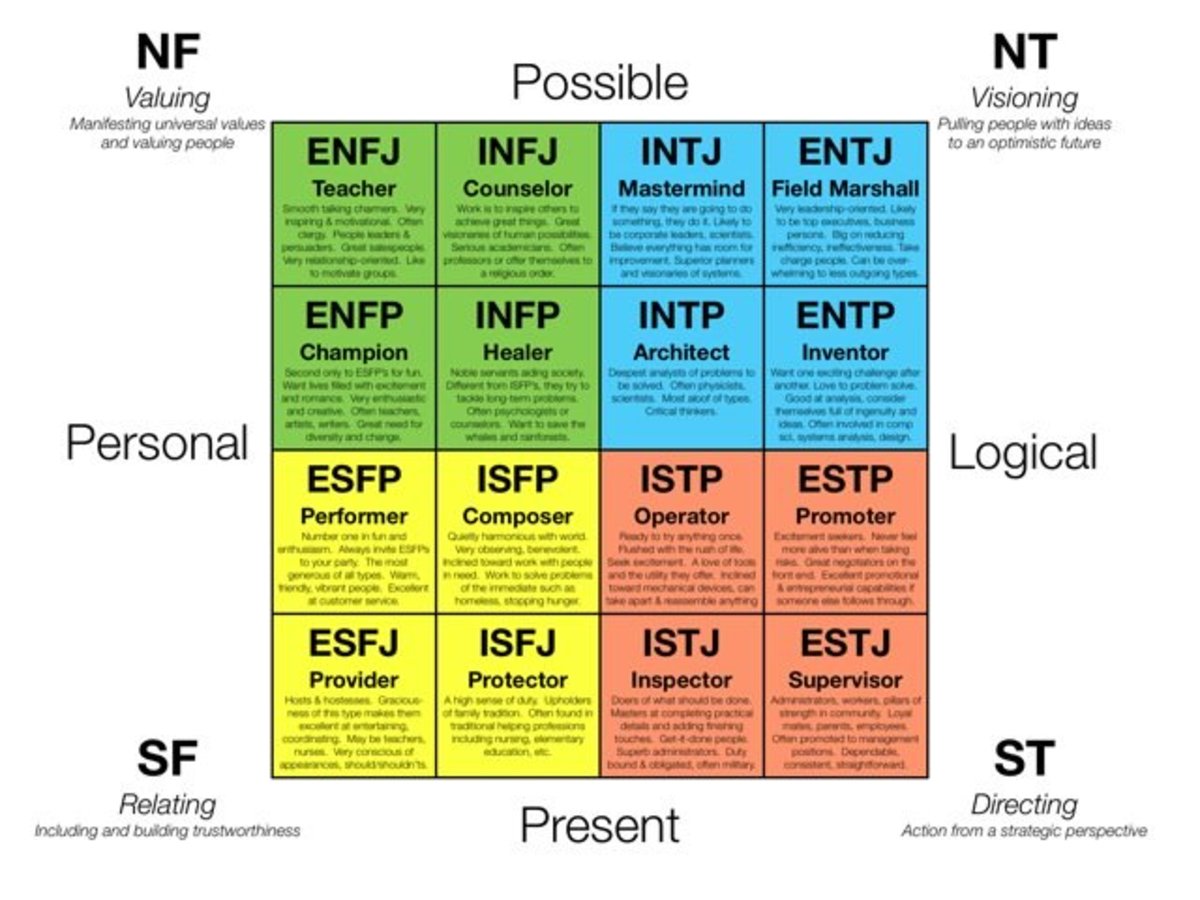
According to reports, 30 percent of new hires quit their jobs within 90 days of their start date. Company culture was one of the primary explanations offered for this low turnover rate. The productivity and role engagement of new hires who aren’t a good match for the position will eventually suffer. New workers who are not a good fit for your business may be inclined to depart soon after starting because of this gap with the company culture.
Personality assessments, like the MBTI, can be useful for your company because they show you a candidate’s strengths, limitations, and ability to fit in with the team dynamic. You can enhance your hiring process by using personality tests to filter job applicants in the initial phases of the hiring process. Amtrak discovered that only 2,000 out of 5,000 applicants were considered to be a “strong fit” for their firm after applying personality tests in their hiring procedure. You may learn more about a candidate and determine if they’ll be a good fit for your company by combining personality testing with resume analysis and in-person interviews.
Can Evaluations Help You Boost Employee Engagement And Productivity?
A better talent fit between employer and employee, according to PwC’s global analysis, led to a higher return on an organization’s investment in people and unlocked an extra $130 billion in productivity for the 11 nations they looked at. What steps can you take to ensure you keep the talent you acquire if personality tests conducted during recruiting can assist you pick workers who are the best fit for your business?
It may be beneficial to periodically incorporate personality tests into your employee training programs or performance evaluations in order to increase employee engagement and productivity. You can examine an employee’s emotional intelligence with the aid of some personality evaluation tools. The performance of employees can therefore be developed, managed, and motivated using this understanding of emotional intelligence. According to research, emotional intelligence can significantly improve an employee’s performance levels and increase productivity.
How Can Leadership Development And Succession Planning Be Aided By Employee Assessments?
Make sure your staff is working to the best of their abilities if you want to stay ahead of the competition. Although employees are employed based on a specific set of abilities, skills, and knowledge, it is the employer’s duty to further foster and develop those abilities.
Planning for corporate success involves:
• Being aware of a person’s innate abilities
• Assigning each worker to a position that plays to their strengths
• Providing specialized possibilities for development
• Aiding in the coaching and motivation of front-line managers
You can learn more about an employee’s skills, drives, and habits via personality testing. Knowing how a worker interacts with people or reacts in particular circumstances allows you to draw on your most valuable resources and design a professional development strategy that is specifically catered to that worker’s temperament.
You can use employee personality tests to determine whether a candidate has the necessary leadership qualities. The ideal personality attributes of a productive leader are covered in the Ignite Leadership Development Program. Professionals can benefit from this training by improving their impact, influence, leadership, and resilience while also learning emotional intelligence skills.
How May Employee Evaluations Improve Departmental Organization And Teamwork?
You may enhance professional connections by being aware of your personality and the characteristics of the individuals you work with. A well-liked personality test for figuring out the unique personalities on your team is the DISC profile.
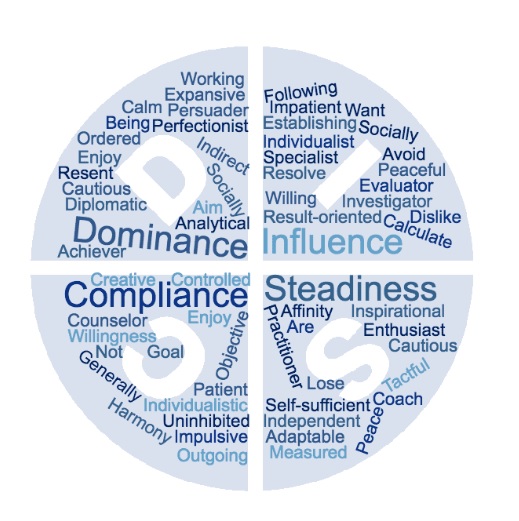
Teams also benefit from having support and assessment opportunities, just like individual employees do. The Everything DISC Workplace profile comes with a comparison report that lets you contrast the relationship behaviors, relationship problems, and strengths of two individuals. The results of this study can then be used to pinpoint any potential obstacles to effective teamwork or communication and to provide remedies to help those people do so.
You won’t want every employee to have the same personality while creating the best team or departmental structure. One of our greatest strengths is our individuality, and personality tests can help you create well-balanced teams inside your firm. The Big Five personality test is used by the IT business Buffer to create more harmonious work teams.
Final Comments On Using Personality Tests To Improve Your Workplace
It is totally up to you whether you decide to use personality assessments into your hiring, training, and retention strategies. It is clear that there are many business advantages to having a greater grasp of an employee’s temperament, working style, behavior, and talents. By identifying the possible advantages of personality tests, you may review various aspects of your organization and decide whether integrating personality tests into your current structure could provide your business culture and expansion a competitive edge.
To Achieve Consistent And Predictable Execution, Create A Maintenance Planning And Scheduling Road Map
Analyze your organization’s performance in relation to best-in-class techniques. Get a clear view of the problems that might be preventing you from moving forward. An effective optimization road map can be made once the problems have been located.
To get started, you should analyze the following three maintenance-related areas in conjunction with your reliability and maintenance objectives and goals:
• Workflows;
• SAP® PM (Plant Management) / EAM (Enterprise Asset Management) system;
• Setup of the maintenance organization
1. Identify And Define The Deficiencies In The Work Process
Are your team members providing consistent and peak performance? Does everyone, right down to the completion of tasks, know what they are intended to do? Are all participants competent and possess the fundamental abilities required to carry out their roles? Do they possess the abilities and resources required for sap pm success?
Effective maintenance execution with reasonable workloads will be supported by evaluations and work procedures that are optimized based on tried-and-true concepts and best-practices. It is crucial to contrast the actual situation with the intended business outcomes during the assessment process.
2. Identify Gaps And Problems With The SAP® PM System
• How well do you utilize the SAP® PM/EAM system?
• Are work orders still going to be single-liners?
• Are the majority of your work orders “open” or “standing”?
• Can you accurately identify maintenance activity by systems, manufacturing areas, or individual pieces of equipment or equipment groups?
• Do you count notifications or orders when gauging your workload?
• Do you currently employ a schedule solution that promotes the effective performance of jobs?
3. Specify The Roles And Responsibilities Of Your Maintenance Organization
Without recognizing it, it’s simple to burden people with duties that contradict with one another and overwhelm them. The majority of businesses operate “lean,” and resources are scarce.
Here is a scenario that occurs frequently:
Planners are charged with making plans, but they frequently also have to take care of other duties. For instance, they may need to: locate the person who made the work request (notification) for more details; expedite materials; coordinate work being done; support contractors; and handle both routine and break-in work.
The planner only has a finite amount of time to make effective plans. It is absurd to assume that the same function or person will spend their entire day performing reactive tasks while also expecting proactive planning outcomes.
These situations are common in maintenance and operations, therefore it’s critical to understand how your company should be structured and what each role’s responsibilities should be. But keep in mind that there isn’t just one answer because every company is unique in some way. Therefore, you probably need to alter the organizational structure if you are in a reactive maintenance mode rather than a proactive one.
Methodology for optimization assessments:
Define the assessment’s scope and expected results. Review and modify the assessment’s current scope and questionnaire.
• Interact: hold interviews, work sessions, and system analyses
• Formulate: note findings, analyze them, and compile a final report
A Summary Of The Evaluation Methodology:


Course Manual 2: Understanding Structure
A firm’s organizational structure connects and aligns its various components for optimum performance. The choice of structure has an impact on how well an organization executes its strategy and goals. To help with this strategic alignment, leadership should be aware of the traits, advantages, and restrictions of different organizational structures.
These organizational structure-related issues are covered in this course manual:
• The argument in favor of organizational structure being in line with company strategy.
• Elements that make up the organizational structure.
• Different organizational structure types, together with each one’s potential advantages and disadvantages.
• How an organization’s structure is affected by its stage of growth.
• Concerns with communications, technology, metrics, the world, and the law.
Background
The way that work moves through an organization is determined by its organizational structure. It enables teams to manage tasks within the confines of their respective responsibilities. Employees are typically grouped by area, product line, or function (such as finance or operations) under traditional organizational structures, which have a more formalized feel. Less conventional structures have a looser weave, are more adaptable, and can react swiftly to shifting business situations.
Since the 1800s, organizational structures have changed. People were organized during the Industrial Revolution to produce parts for the product that was moving down the assembly line. According to Frederick Taylor’s scientific management approach, workers only completed one task in the most effective way possible. General Motors established a ground-breaking organizational structure in the 20th century in which each significant division produced its own automobiles.
Today’s organizational structures are evolving quickly, moving from traditional structures to flexible ones like virtual organizations. Future organizations may incorporate a fluid, free-forming organization, member ownership, and an entrepreneurial mentality among all members as businesses continue to change and expand their global presence.
Enterprise Case
The ability of an organization to adjust and realign as necessary is a sign of how well it is aligned. An organization’s structure must be changed to reflect the changing economic realities while maintaining core competencies and competitive difference in order to secure long-term existence. Closing structural gaps that hinder organizational effectiveness is part of organizational realignment.
Issue Due To Misaligned Organizational Structure Problems
Ineffective, misaligned organizational structures that do not support the business might result from the quick redesign of corporate units, divisions, or functions. Reorganizations that were poorly planned could lead to the following issues:
• When businesses eliminate middle management levels without reducing the job, they may create structural gaps in roles, work processes, accountabilities, and vital information flows, causing employees to take on more responsibility.
• When lower-level employees fill in for middle management and are ill-equipped to perform the necessary tasks, as well as when higher-level executives must take on more tactical responsibilities, reducing the value of their leadership skills, issues with diminished capacity, capability, and agility can occur.
• A company’s cost structure, cash flow, and capacity to provide products and/or services can all be impacted by disorganization and poor staffing. People can be quickly deployed by agile businesses to meet changing business needs. However, with little resources, most staff employees of organizations are only able to concentrate on their present obligations, having little time, energy, or motivation to work outside the parameters of their current positions. In the end, a company’s ability to remain competitive is impacted by decreasing capacity and slow reaction times.
• Declining staff engagement can affect shareholder value and organizational performance. It can also affect customer loyalty and retention.
The Need For Structure And Business Strategy Alignment
The degree to which four company aspects are coordinated is the secret to successful performance.
Leadership: the people in charge of creating, implementing, and evaluating the plan.
Organization: The framework, procedures, and methods used to carry out the strategy.
Roles and responsibilities that must be filled.
People, as well as the knowledge, abilities, and competences required to carry out the plan.
Success in the high-performance organization depends on these business components’ ability to quickly and strategically adjust to change, as well as their knowledge of their interdependencies. The likelihood of exceptional performance increases when these four factors work together.
It takes time and careful consideration to achieve alignment and maintain organizational capacity. The outcomes that the new structure or process is supposed to deliver must be identified by organizations. Typically, to do this, the following must be recalibrated:
• Which tasks can be removed, cut back, and/or are mission-critical.
• Current position requirements, while also outlining any new or updated responsibilities that are required.
• Important metrics and responsibilities.
• Critical information flows.
• Organizational authority for making decisions.
• Developing Collaborative Teams: Meeting the Challenges for Future Success.
• Important Organizational Structures Components
An organizational structure is made up of the following five components: job design, departmentalization, delegation, span of control, and chain of command. These components make up an organizational chart and establish the actual organizational structure. The term “departmentation” describes how a company sets up its positions to organize work. The number of people who report to a manager is referred to as the “Span of Control.” A line of authority is referred to as a “chain of command.”
Organizational structures are influenced by the company’s managerial centralization or decentralization policy. A pyramid structure is often the result of “centralization,” or the extent to which decision-making power is constrained to higher levels of management. When operating units need a common policy due to competing aims and tactics, centralization is typically advised. A leaner, flatter organization is often the result of “decentralization,” or the extent to which lower levels of the hierarchy have decision-making authority. When competing strategies, ambiguity, or complexity call for local flexibility and decision-making, decentralization is advised.
Organizational Structure Types
Organizational structures have changed from inflexible, vertically integrated, hierarchical, autocratic systems to largely boundary-less, empowered, networked organizations built to quickly adapt to consumer needs with specialized products and services.
Today, most businesses have a vertical, vertical and horizontal, or open boundary structure. Within each of these categories, specific forms of structures include the following:
• Vertical: divisional and functional.
• Matrix, both vertically and horizontally.
• Boundary-less, modular, virtual, and cellular (also known as “open boundary”).
Vertical Structures (Functional And Divisional)
Functional and divisional vertical structures are the two main forms. By specialization, the functional structure divides the job and the workforce. It has a hierarchical structure that is typically vertically integrated. It places a focus on standardizing procedures and organizational structures for specialized workers in relatively specific occupations.
Departments including production, sales, research & development, accounting, human resources, and marketing are formed in this conventional sort of organization. Each department does a distinct task and specializes in it. For instance, all HR specialists fall under the same function and answer to a senior HR executive. Other functions, including finance or operations, would follow the same reporting approach.
Employees in functional structures report directly to managers in those functional areas, who in turn report to the organization’s chief officer. The specialist departments must be centrally coordinated by management from above.
An effective organizational chart might resemble this:

A functional structure has the following benefits:
Individuals only undertake jobs in which they are most skilled, the business develops expertise in its corresponding fields, the form is logical and simple to comprehend.
The lack of coordination is the main disadvantage:
Cross-functional activity is more challenging to encourage, people frequently fail to coordinate or interact with other departments, and the structure is frequently resistant to change.
Because there are few shared interests or goals between functional domains, this structure works best for organizations that remain centralized (i.e., the majority of decision-making takes place at higher levels of the organization) (e.g., marketing, production, purchasing, IT).
Given that decision-making is centralized, the company can benefit from economies of scale because centralized purchasing functions are probably present.
To coordinate the departments, a suitable management system is necessary. A unique leader, such as a vice president, a computer system, or another format could make up the management system.
A divisional structure, which is also a vertical organization, typically separates work and personnel by output, though it could also divide them by another factor like market or area. For instance, a company that sells men’s, women’s, and children’s clothes in the Northeast, Southeast, and Southwest through retail, e-commerce, and catalog sales may use a divisional structure in one of three ways:
• By product (Men’s, women’s, and children’s apparel)
• By retail stores, e-commerce, and catalogs are the markets.
• By Northwest, Southeast, and Southwest regions.
An organizational structure for a division might resemble this:

These are the benefits of this kind of structure:
• It gives each division’s core skill more emphasis and flexibility.
• It enables the divisions to utilize information acquired from affiliated divisions while concentrating on manufacturing specialized products.
• In comparison to the functional structure, it permits more coordination.
• Decision-making power being delegated to lower organizational levels allows for quicker, more specialized decisions.
The following are some of this structure’s drawbacks:
• Since each division must obtain the same resources, it may create a loss of efficiency and unnecessary work.
• Research and development, marketing, and other departments that could cooperate with one another are frequently exclusive to each division.
• Employees who have followed comparable technical career trajectories interact less.
• Divisions could compete with one another for the same clients.
• Each division frequently purchases comparable items in smaller amounts at a higher cost per item.
This kind of structure is advantageous as the product base grows in size or complexity. However, the organization may need a more complex matrix structure when divisional competition becomes considerable, the organization is not evolving rapidly enough, or when economies of scale are insufficient.
Organizational Matrix Structures
The divisional and functional structures are combined to form a matrix structure, which results in a dual-command scenario. An employee in a matrix organization reports to two managers who share accountability for the employee’s performance. In most cases, one manager works in an administrative area like finance, human resources, information technology, sales, or marketing, while the other manager is assigned to a business unit that is focused on a specific product, service, client, or region.
An example of a typical matrix organizational structure might be:

The matrix structure has the following benefits:
• It fosters functional and divisional cooperation and places more emphasis on the work than the people.
• Sharing essential personnel reduces costs.
• It provides a better picture of a product that is produced in several locations or marketed by numerous subsidiaries in various markets.
• It improves the balance between completion time and cost.
The following are some disadvantages of matrix organizations:
• Uncertainty about responsibilities could make governance and control more difficult.
• Both employees and managers may find it confusing to report to multiple managers at once.
• The dual chain of command calls for two direct supervisors to work together to decide on a worker’s work priorities, tasks, and performance expectations.
• When an individual is subjected to expectations from both the function leader and the product leader, their stress level rises and their performance may suffer.
• Meetings and collaborating with coworkers take up more time for employees.
These drawbacks may worsen if the matrix is multidimensional rather than two-dimensional, e.g., when employees report to two managers, or when employees can even report to three or more managers.
In businesses that are highly project-driven, like construction firms, matrix arrangements are typical. These structures evolved from project structures, in which workers from various functions collaborated until a project was finished, at which point they returned to their original roles. Each project manager in a matrix organization answers to the vice president and general manager directly. Since each project is essentially a small profit center, general managers are typically the ones to make business decisions.
In large, complicated enterprises, the matrix-structured organization also offers better visibility, stronger governance, and more control. Additionally, it works well for the coordination of intricate operations with complicated dependencies and the development of business areas.
Professionals tasked with maintaining equity and justice within the business face challenging obstacles as a result of matrix arrangements. If the matrix structure violates these goals, managers who work in it should be ready to act through training and communication. Leadership should also keep an eye on interactions amongst managers who have similar direct reports. The success of a matrix structure depends on the quality of the relationships between an employee’s managers.

Course Manual 3: Structural Assessment
A Structure Assessment of Your Organization
Determine whether your organizational structure needs to be modified by evaluating your company’s mission and strategy.
The organizational structure of a corporation serves as a road map for its communication methods. As the firm expands, a well-designed structure might also make it simpler to spot inefficiencies and brand-new issues. Regularly reviewing your organizational structure will assist you make sure that you are prepared for long-term growth.
Any organizational structure’s most important component is communication. In actuality, formalizing channels of communication is the main goal of an organizational structure. After considering the type of communication you want your staff to have, put a system in place that supports that goal.
Does your company’s organizational structure hinder change and give it a competitive advantage? Should you think about altering it? Yes, but how?
The following topics are covered in this course manual:
• How to determine if you need to change your structure.
• How to determine when to change your structure.
Solution
There isn’t one organizational structure that works for all businesses. Prior to creating your organizational structure, you must assess the mission and strategy of your business. Depending on your objectives, certain organizational structures appear to function better than others, but there is no one ideal approach to set up your workforce.
The three fundamental concepts on which the majority of organizational systems are based are:
3. The functional organizational structure, in which corporate function divides hierarchical responsibilities. This classic organizational style allows for the support of rigidly hierarchical, line-based units (such as production and marketing) by centrally managed staff units outside of the line structure (for example, human resources, data processing).
2. The organizational structure in which job tasks are separated by department (for instance, by distinct product line or factory), with parallel HR, marketing, and finance activities for each department.
3. An arrangement called a matrix that combines the two above. Greater flexibility and cross-functional opportunities are offered by the matrix organization, but this structure has the drawback of having employees report to two different bosses—one functional and one departmental—each of whom may have conflicting goals.
These three organizational patterns are typically modified in other organizational frameworks. Who has the best? It relies on the objectives of your firm and the management philosophy to which you adhere.
Let’s examine some of the regulations to take into account while assessing organizational structure:
• How should your staff communicate with one another? Do you want your president to speak with frontline employees? Do you want marketing to speak with finance?
• How much leeway and creative flexibility should your staff have to carry out their duties? A top-down hierarchy might function well if the frontline workers are arranged in an assembly line. If your product is made by creative teams, a more independent departmental organization can be appropriate. How much specialist knowledge is often required for jobs? Are employees swappable? Ought they to be?
• Is this a manufacturing or a service company? The requirement for regularity and high-quality production outweighs the benefits of some autonomy and creative decision-making in manufacturing groups. A Subaru built in Indiana ought to be identical to a Subaru made in Japan.
• Which characteristics matter more to your market share: Product continuity over the long term and stability vs flexibility and quick change?
An expanding business must take particular organizational structure concerns into account. Recognize that your needs for organizational structure will vary as business expand and the market changes. Barriers to group engagement and performance are created by size. People now specialize, as opposed to the past when everyone did a little of everything. A larger team may lead to misguided, widely dispersed, and impersonal communication. To ensure that workers receive the information they require when they require it, think about establishing formal frameworks to define lines of communication and responsibilities.
“The wisest course of action for an entrepreneur is to concede that the conflict between structure and freedom can never be resolved. It won’t leave,” In his book Beyond the Wall of Resistance: Unconventional Strategies That Build Support for Change, Rick Maurer makes this claim.
In the beginning, ask yourself, “How can we expand while preserving the culture that makes this business such a terrific place to work?” Work to eliminate communication obstacles, but be aware that it becomes increasingly difficult to keep a loose structure without allowing important details to slip through the gaps as the number of participants increases.
Reducing reliance on the pyramid’s top level is one method to improve the organizational structure of your company. All decisions must go via the president, which creates a bottleneck and slows down growth. Give the task to dependable staff members. The flexibility of the organization to adapt and respond to change is increased by establishing independent business units with increased individual accountability for those distinct units.
At the beginning of the twenty-first century, there is a clear tendency toward outsourcing everything else and avoiding complex organizational structures by concentrating staff on the company’s essential objective. A common and wise strategy for reducing the expense of setting up and running service and support departments is outsourcing.

Case Study
The second-largest architectural firm in the United States, NBBJ was founded in Seattle in 1943 and went back to the drawing board in the early 1980s to completely redesign its organizational structure in order to foster an environment that would bring in, inspire, and keep top-tier architects.
NBBJ determined that their organizational structure is strengthened by the workplace structure. Executives don’t sit at beautiful desks and comfortable seats in executive offices; instead, they work at desks that are similar to everyone else’s and are located in open areas where they can be approached and engaged. The CEO’s workstation is located at the top of a stairwell.
NBBJ established independent design “studios” each with 25-40 persons, to further dismantle hierarchies. Each studio is solely accountable for a specific project.
Wyatt contends that the studio’s intimate size aids in making individuals feel secure more quickly. Working with a smaller group fosters a closeness that allows a new employee to realize their effect more rapidly than working with a bigger group would.
Act
1. Describe the current structure of your business. Is it departmental, functional, or matrix?
2. Does that organization operate effectively, or does it require modification? To find out whether your product and its marketing are superior to or inferior to those of competitors, examine market studies and 10-k reports from rival companies.
• How cost-effective is your production?
• What competitive advantages and disadvantages exist in the current system?
• How much of each depends on the structure, and how much depends on the rules and regulations rather than the structure?
3. Include every member of the staff in the evaluation project at every stage. The lowest-level employees’ team membership and support will make or break the current system, as well as any new one. They not only have a different viewpoint on the merits and drawbacks of the current system. The management-labor interaction is by far the most crucial factor in determining whether an organizational structure will succeed or fail.
4. Take into account enlisting an outside team to assess the operation’s advantages and disadvantages. The staff employees you may promote or remove will have more reasons to hold back than the outsiders will. Specialized consultants, owners or board members other than the president or CEO, or even customers, may offer insightful critique.
5. Be aware that after considering your options, you might decide that changing the organizational structure would hurt rather than help the business. DON’T RUSH. Your business has arrived to this point thanks to the current system. If there isn’t solid proof that a change will significantly improve your company’s competitive position, don’t plan to make it.
Organizational Assessment
System science is used in organizational assessments to evaluate the dynamics at play in the sponsor’s organization. The strategy is to gather information and examine variables that affect organizational performance in order to pinpoint areas of strength as well as potential. The Burke-Litwin Model of Organizational Performance and Change, seen in Figure 2, is one of several great models for comprehending and evaluating data during an organizational change assessment. According to this paradigm, a variety of interrelated external and internal elements exist concurrently and have an impact on an organization’s success. These interrelated factors include anything from external budgetary constraints to the leadership style and organizational culture to the capabilities and conduct of the lowest-level employee. A framework for efficiently analyzing, interpreting, formulating recommendations, communicating, and managing change within an organization is provided by the Burke-Litwin model.
Best Practice for Organizational Assessment—Assessment Method
Figure 1 depicts one organizational evaluation strategy employed by MITRE. The assessment uses social behavioral best practices that have been created and shown to be efficient in both the public and private sectors. It is a repeatable process. This method is intended to assist executives in determining where their organization stands in the change process, identifying organizational gaps, identifying transformation risks and difficulties, and deciding what to do next.

Figure 1.
Approach to Organizational Assessment
It is advised to use the following five-step process:
Phase 1 Project Mobilization – Review background material, plan the project, and hold early client meetings to gather information and go over the project strategy at the project’s start-up phase.
Deliverables: A kickoff briefing and a work plan.
Phase 2 Data Collection (Big Picture): This phase of data collection will offer a comprehensive, overall evaluation of the company. Select the important stakeholders for an organization’s leadership to interview. Create interviewing guidelines based on a model of organizational systems, and look into things like the external environment, mission and strategy, leadership, organizational culture, organizational structure, management practices/processes, etc.—plus any other areas the organization deems particularly important or necessary. Gather information, analyze it, and pinpoint the main problem areas.
Deliverable: Initial conclusions—key issues
Phase 3 Data Collection (Targeted) – Following discussion and agreement with organizational leaders, execute a second phase of data collection to gain a deeper understanding of the main problem areas and to direct the creation of potential solutions.
Deliverable: Extensive conclusions
Phase 4 Analysis and Identification of Strategic Changes – Following a thorough analysis of the more in-depth data, involve the management team of the organization in a process to identify strategic changes (via working sessions and/or offsites).
Deliverable: Evaluation and suggestions
Phase 5 Action Planning – If requested, work with the management team of a company to create action plans to address change priorities.
NOTE: Prior to conducting the study of the workforce, all organizational assessments call for sponsor involvement and guidance on the goals and objectives of the transformation.
Burke-Litwin Model of Organizational Performance and Change: Organizational Modeling as a Best Practice for Organizational Assessment
Burke-Litwin Model Overview
Burke-Litwin is a system science model that explains how the relationships between the important variables that influence performance and control how change happens in an organization interact. Engineers can get information on what organizational factors to modify and why by using this model system. When it comes to affecting organizational change, higher level elements (the blue boxes) have more weight because any adjustment to one variable will eventually have an impact on all the others. The system science method is shown in Figure 2 of the Burke-Litwin Model of Organizational Performance and Change:

Figure 2.
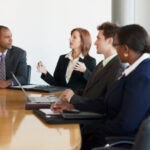
Course Manual 4: Team Structure
Team Structure: How Do I Form a Team?
Employees are any company’s most precious asset, and establishing an effective team structure gives you the chance to make the most of their abilities. A company’s success can be attributed to its multi-talented team members working together effectively.
Three out of four workers feel that cooperation and collaboration are “extremely vital,” yet sadly, 39% of workers worldwide say that their companies don’t collaborate enough.
Conversely, there is a sweet spot for how much collaboration is effective for your particular team, and you do reach a point of diminishing returns for the positive, productive benefits of collaboration.
The cause of inadequate team dynamics? Either a company is lacking in regards to a culture for teamwork, or it hasn’t yet developed/defined what it is to be an efficient team.
If you’re in the same situation, we’ll show you how to build a successful team that enhances the health and prosperity of your business.
How Does a Team Structure Work?
The organizational structure known as a “team structure” is one in which workgroups make up the entirety of a company. They outline the connections between group members, teamwork, and leadership.
You can decide what your employees will do, to whom they will report, and how decisions will be made throughout the entire organization by developing a team structure. The team structure you decide on will have a significant impact on how your employees cooperate and work to grow your business, whether you work from a real or virtual office.
So, you need to build a team, but there are many approaches to take, and some of them can be a little intimidating.
Which strategy is the best fit for your unique organization? Do you prefer a decentralized structure or do you want to concentrate on centralized decision-making? What about the command structure?
Taking a closer look at organizational structures will make it clear which is best for your business.
Guidelines for Creating a Successful Team
Although organizational structures provide the framework for creating great teams, there are a few guidelines you should keep in mind to build a more efficient team.
A successful team is directly related to the expansion of your company; thus, it is not a good idea to put off creating one.
Goal Alignment
Whatever organizational structure you choose, you need to have specific goals in place.
You may communicate what you anticipate from the teams and individual members by clearly defining your objectives in a timely manner. This makes people responsible for accomplishing their goals.

You must work together with your team as a leader to solve issues and develop solutions. It not only clears up any misunderstandings, but it also inspires the team to strive toward a specific objective.
According to the Harvard Business Review, having goals that are clearly stated and understood helps employees concentrate on their work and reduces the likelihood that they would waste energy.
Additionally, it enhances collaboration, which ultimately helps the organization.
Roles And Obligations
As an executive, what do you anticipate from the customer service team? Do you want them to be more courteous when speaking with clients, or do you prefer their use of positive language because you think it would be good for your business?
Of course, until you interact with them, your customer service staff won’t know what you’re expecting of them.
Your team cannot establish accountability if you don’t set expectations.
As a result, there is less trust among the employees of your company.
However, when you set expectations and people fulfill or exceed them, it fosters motivation and a culture of trust.
You can appoint team leads in each department to simplify the assignment of tasks and responsibilities. You can clarify duties to team leaders and hold them responsible for outlining expectations rather than assigning roles to individual team members.
Solution-Focused Team Organization
A successful team—and organization—must have a mindset focused on finding solutions. However, how can you know whether your team has one?
Watch how they behave after setting a goal for your team. Do they discuss reasons why they can’t accomplish a certain goal or do they discuss strategies they might use to do so?
Your staff may need a significant attitude change because the prior way of thinking may not have been solution-focused. But not everyone finds it simple to provide solutions.
You should also consider whether your organization fosters an environment where members’ ideas are valued and supported.
If you don’t foster this kind of climate, your staff members may become less willing to take chances and come up with solutions to problems as they arise.
This scenario is accurately explained by the Psychological Safety Theory. This theory clarifies the idea that people shouldn’t be humiliated or punished for expressing their concerns, opinions, and blunders. You must allow your workers room to breathe and foster a supportive environment so they can express their thoughts and offer solutions to a particular problem.
Promote a Feeling of Belonging
According to a 2020 survey, workers who feel like they belong at work are more likely to produce successful results. Does your company encourage employees’ ease and comfort, or does it unknowingly encourage the opposite?
Keep in mind that it’s a warning sign for change if a company’s leader isn’t promoting this culture. When managers and team members treat employees fairly, they feel at ease. Making employees feel welcome and appreciated is crucial. To do this, it’s necessary to acknowledge their efforts, show appreciation for their accomplishments, and motivate them further by rewarding and gifting them.
All members of the group will act with respect and fairness out of a sense of belonging when members in positions of power foster that behavior.
The likelihood that an organization will accomplish or exceed its target goals and perform significantly better in order to achieve business outcomes increases with the development of this method.
Additionally, a study by the Center for Creative Leadership revealed that trust in a business encourages employees to offer their best and do tasks more effectively. The team in this environment works together to achieve a common objective, thinks creatively, takes calculated risks, and is aware of each other’s support.
Of course, trust and a feeling of belonging go hand in hand. Regardless of their status, your team members will encourage comfort and develop trust within an organization as long as they appreciate and support one another.
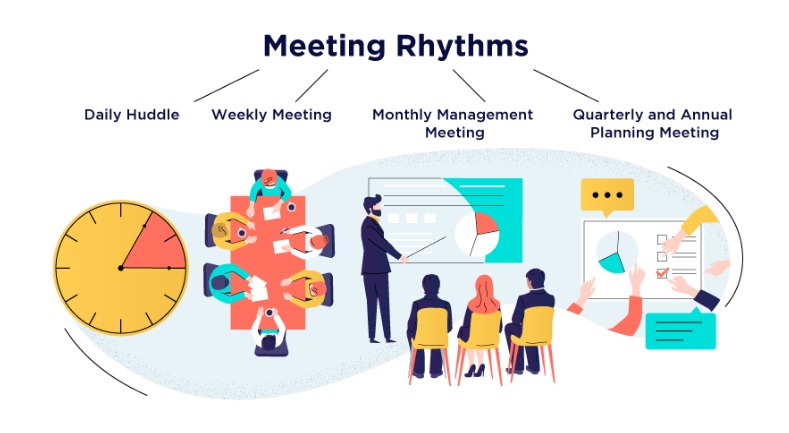
Final Words
Organizational structure is the first step in creating an effective team, and atmosphere and culture are close behind in priority.
Although structures provide a mechanism to assemble and arrange team members, downplaying the value of a productive workplace is undoubtedly ineffective. Each employee serves as the foundation of your company; thus, it is important to treat them fairly to increase production.
Additionally, cooperation and goal alignment are essential for obtaining better business outcomes since they reduce conflict and facilitate teamwork.
The Importance of Teams Settles In
Companies have come to the realization that hierarchies may not always promote the innovation that fuels growth and market distinction, suggests Rise. The problem was lately made worse by the entry of more millennials into the labor field. The initial concerns about the team structure seem to be fading as organizations continue to implement and experiment with it. Researchers from major firms like Deloitte, whose 2019 Global Human Capital Trends report of 10,000 companies found:
• 31% of respondents claimed “nearly all” or “most” of their work is now done in teams, may have contributed to the acceptance.
• 53% of respondents claimed that switching to a team-based organizational structure resulted in a “substantial improvement” in performance.
Teams Are Allowed To “Circle The Perimeter”
Deloitte decided to support team-based organizational structures as a result of the findings. When it said, “The global trend toward team-based organizations is growing for a reason: It is a more effective model for operating in the dynamic, unpredictable business environment typically seen today. In the long term, we believe there will be no leading organization that does not work primarily on the basis of teams.”
If there is a cautionary note—and there nearly always is—it is that many businesses may adopt the movement gradually as their team expands. That might be especially true for small enterprises, whose talent pools aren’t as extensive as those of big corporations. In other words, there may be no other option for small firms. Even if they wanted to, many firms cannot fully accept a structure centered on teams.
Deloitte also sees the possibility of organizations mostly maintaining the hierarchical structure and embedding a team when a great opportunity arises, as when the organization needs to take on a unique project.
The dice might be thrown either way, according to Deloitte: “One of the fundamental changes in business today is the steady shift away from hierarchical models of management.”
Examine the Benefits
It is understandable why some businesses could discount the value of team-based organizational structures because some of its benefits may appear obvious. Even the most cynical business owner must recognize, according to a list by Sandler Training, that employees could learn more from one brief team experience than they could from two years of solitary work. And who stands to gain the most in the long run? The proprietor of a small business. When you collaborate, think of this.
A team-based organizational structure:
• Clarifies the skill sets of employees. Nothing illustrates where employees’ strengths lie and how team members must play to each other’s strengths like a roundtable discussion involving, say, a graphic designer, a writer, and a social media strategist.
• Sparks employee creativity and brainstorming, and promotes knowledge sharing. No one is claiming that your social media strategist should (or should be able to) take over as your primary writer, but it makes sense that the quality of the writing will rise if the two work together and constantly analyze each other’s output.
• Promotes innovation and smart risk-taking. Even the most absurdly dangerous ideas may be refined when people find strength and support in numbers. High-risk areas are sometimes where the most creative ideas are born.
• Encourages excellence among those who are competitive. They will probably start observing each other attentively in a positive way even if they weren’t previously competing with one another.
• Fosters relationships and builds trust unlike any other work environment. As soon as a team realizes that their fortunes rise and fall together, they usually stand up to support, encourage, and watch out for one another. And what happens if someone dares to procrastinate or miss a deadline? They react by giving the offender a stern look or scolding so the company owner doesn’t have to.
• Develops negotiation skills. Even members of very successful teams might get bogged down in conflict. One of the greatest advantages of working as a team is learning how to put out embers before they ignite a roaring fight and consume the team.
• Encourages pride of ownership, involvement with the firm, and a sense of belonging, all of which are invaluable assets for an employer that genuinely wants to keep their staff members content, devoted, and invested in the business’ success.
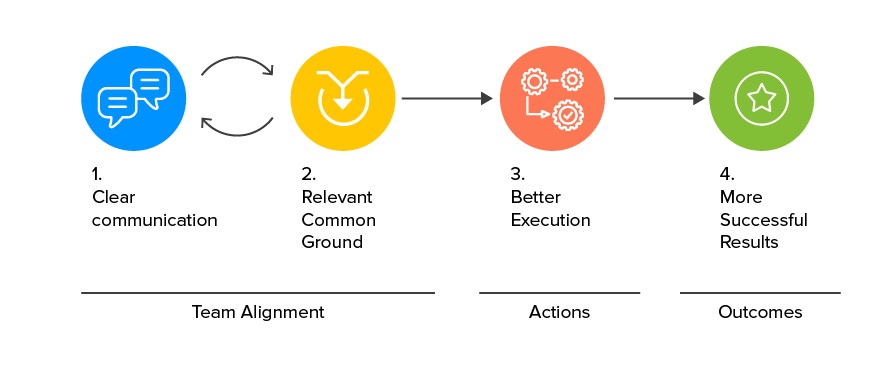
You’re Up For The Challenge
If there is a drawback to the ongoing transition to team-based organizational structures, Deloitte found it in the small proportion of respondents (7%) who felt ready to make the change. Only 6% of respondents said they were confident in their capacity to lead cross-functional teams.
The company’s approach is that reluctant business owners should first take the first step toward establishing the value of “team-based thinking” among:
• Individuals
• Team members as a whole
• Organization
• External stakeholders or the business’ ecosystem
Everyone is covered by this except for you, who might already be a team concept convert. While there isn’t a “I” in “team,” there is one in “opportunity,” two in “vision,” and so on.
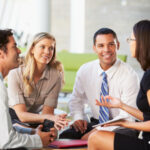
Course Manual 5: Executive Leadership
Strategic Leadership: The Crucial Competencies
Nathan Rothschild, a renowned British banker and financier, once said that big fortunes are made when cannonballs land in the harbor rather than when violins are played in a ballroom. Rothschild recognized that, if you have the leadership qualities to take advantage of it, opportunities are larger in unexpected environments. Rothschild discovered six skills—the capacities to anticipate, challenge, interpret, decide, align, and learn—that, when mastered and used in tandem, enable leaders to think strategically and navigate the unknown, through his research at the Wharton School. The leadership literature has given attention to each, but typically in isolation and rarely in the unique setting of high stakes and profound uncertainty that may make or destroy both businesses and careers.
These six skills are thoroughly discussed in this course manual. An adaptive strategic leader, who has mastered the application of all six at once, is someone who is both firm and adaptable, relentless in the face of setbacks but also capable of responding strategically to environmental shifts.
Are you connected in the correct places to help you spot possibilities before your rivals do? Do you feel confident criticizing your own and other people’s presumptions? Can you persuade a heterogeneous group to embrace a shared vision? Learn from your mistakes? You can determine your skills in each area by responding to questions like these. You can assess your strengths and weaknesses, fill in any gaps, and maximize your entire set of leadership competencies by taking the self-test at the end of this course manual.
Let’s examine each ability one at a time.
Anticipate
The majority of businesses and CEO’s struggle to identify unclear risks and opportunities that exist on the edge of their industry. Famously, Coors officials were slow to recognize the popularity of low-carb beers. The electrical revolution in games and toys was overlooked by Lego management. In contrast, strategic leaders maintain a constant state of alertness, improving their capacity for anticipation by looking out for signs of change in their environment.
To enhance your anticipatory skills:
• To learn about their difficulties, speak with your clients, vendors, and other partners.
• To comprehend the viewpoints of your competitors, determine how they are likely to respond to new initiatives or items, and foresee potentially disruptive offerings, conduct market research and business simulations.
• To prepare for the unexpected and envisage many futures, use scenario planning.
• Examine the steps a quickly expanding competition has performed that confound you.
• Make a list of the clients you’ve lately lost and try to determine why.
• Attend conferences and events for different functions or sectors.
Challenge
The status quo is questioned by strategic thinkers. They welcome different points of view and question presumptions, both their own and those of others. They don’t make decisions until they have given a situation significant thought and examined it from various angles. Patience, bravery, and an open mind are characteristics of strategic thinkers.

Case Study
Consider Bob, a division president at an energy company who had rigid routines and shied away from perilous or uncomfortable circumstances. When presented with a challenging issue—like how to combine business divisions to reduce costs—he would gather all the information at his disposal and withdraw to his office by himself. Despite being well-considered, his answers lacked originality and were frequently predictable. Instead of considering a more radical reorganization that would synchronize operations across the entire division, he concentrated solely on two comparable and underperforming businesses in the consolidation scenario. When he sought outside counsel, he went to a small group of seasoned consultants in one reliable business who offered tried-and-true remedies rather than raising fundamental industry presumptions.
Through coaching, Bob learned how to allow competing viewpoints to question both his own and his advisors’ opinions. At first, he felt uncomfortable, but he soon realized that he could come up with novel answers to old issues and sharpen his strategic decision-making. He even tasked a coworker to play devil’s advocate for the organizational streamlining; this strategy led to a hybrid solution: For a short while, several emerging market teams were permitted to continue using their local HR and financial assistance while utilizing the completely centralized model for IT and legal support.
To strengthen your capacity for challenge:
• Put more emphasis on a problem’s underlying causes than its outward symptoms. Utilize Toyota’s founder Sakichi Toyoda’s “five whys.” (“This month’s product returns rose by 5%.” “Why?” “Because the product occasionally breaks down,” “Why?” and so forth.)
• Ask a wide range of people whether long-held beliefs about a component of your business such as “High switching costs prevent our consumers from defecting” are real.
• Encourage discussion by hosting “safe zone” meetings where candid conversation and conflict are encouraged.
• Establish a rotating post with the sole objective of challenging the existing quo.
• Include doubters in the decision-making process to identify problems early.
• Obtain feedback from those who won’t be immediately impacted by a decision but may have an excellent understanding of its effects.
Interpret
Correctly challenging leaders will elicit complex and possibly contradictory information. The more experienced skillsets can interpret this information. You should synthesize all of the information you get rather than reflexively seeing or hearing what you anticipate. You’ll need to be able to spot trends, work through uncertainty, and look for fresh perspectives. J. K. Paasikivi, a former president of Finland, was fond of saying that wisdom begins with “re-cognizing,” or rethinking, the facts to reveal their hidden significance.

Case Study
A few years ago, Liz, the CMO of a U.S. food firm, was creating a marketing strategy for the brand’s low-carb cake collection. At that time, everyone had a low-carb strategy since the Atkins diet was so well-liked. Liz observed, however, that none of the customers she spoke with said they shunned the company’s snacks because they were following a low-carb eating plan. Instead, a rapidly expanding group of diabetics avoided them because they contained sugar. Liz believed that if her business started catering to diabetics rather than faddish dieters, sales may increase. Her ability to make connections finally resulted in a profitable switch from low-carb to sugar-free cakes in the product mix.
To enhance your interpreting skills:
• List at least three interpretations for your observations when analyzing unclear data, and seek the opinions of other stakeholders.
• Zoom out to see the big picture and in to focus on the minutiae.
• Actively hunt for information that is lacking and data that refutes your theory.
• Observation should be complemented by quantitative analysis.
• To encourage an open mind, take a break by taking a stroll, viewing art, listening to unconventional music, or playing Ping-Pong.
Decide
Decision-makers may need to make difficult decisions in uncertain times with insufficient knowledge, and they frequently need to do so fast. However, strategic thinkers insist on having several options available right now and avoid becoming too hastily ensnared in binary decisions. Instead of acting on impulse, they adhere to a structured procedure that strikes a balance between speed and accuracy, takes into account the trade-offs involved, and takes both short- and long-term objectives into account. Strategic leaders ultimately need to have the guts to stand by their decisions, guided by a sound decision-making process.

Case Study
Janet, the division president of a technology company who prioritized execution, preferred to make choices swiftly and keep things straightforward. This worked successfully when the market was well-known and the options were clear. Unfortunately for her, the market was swiftly changing as unconventional rivals from Korea started capturing market share with lower-priced products.
In order to maintain the company’s competitive price position and market share, Janet’s impulse was to make a strategic purchase in a low-cost geography—a yes-or-no proposition. She pushed for a quick approval as the plan’s champion, but the CEO and CFO balked due to a lack of funding. She convened the decision-making stakeholders after being taken aback by this and tasked them with coming up with alternatives. The group decided to proceed cautiously and investigate the viability of a joint venture or strategic alliance. Janet finally pursued an acquisition, albeit of a different firm in a more strategic market, based on the findings of her investigation.
To make decisions more effectively:
• By directly asking your team, “What alternative possibilities do we have?” you can reframe binary decisions.
• Break down major decisions into manageable components to comprehend individual aspects and better detect unexpected implications.
• Create different decision criteria for long-term and short-term projects.
• Share your decision-making process with others. Are you still looking for disagreement and discussion, or are you heading for resolution and making a decision?
• Decide who needs to be actively involved and who can affect whether your decision is successful.
• Instead of placing large bets, think about trial projects or tests.
Align
Strategic leaders must be skilled at bringing together stakeholders with different goals and points of view and winning their support. Active outreach is required here. Building trust, communicating proactively, and engaging frequently are essential for success.

Case study
One CEO was the president of a chemical company who was in charge of the Chinese market. He worked nonstop to grow his company. However, he had trouble securing assistance from colleagues abroad. He drove ahead alone, further alienating them since he was frustrated that they didn’t share his enthusiasm for the potential in China. According to a study, his coworkers had trouble understanding his plan and were hesitant to support him.
The president changed the course of events. He started holding frequent face-to-face meetings with his other executives where he explained his growth strategies and asked for input, involvement, and dissenting viewpoints. They gradually started to recognize the advantages for their individual roles and economic sectors. Sales improved as a result of the increased cooperation, and the president started to view his coworkers as strategic collaborators rather than roadblocks.
To strengthen your alignment:
• Avoid the two most frequent complaints in organizations: “No one ever asked me” and “No one ever told me” by communicating early and frequently.
• Choose important internal and external stakeholders, chart their perspectives on your endeavor, and identify any areas where their interests are not aligned. Look out for coalitions and hidden motives.
• Use assisted, organized talks to identify areas of resistance or misunderstanding.
• Communicate with resisters directly to learn about their issues so that you can then resolve them.
• As your initiative or strategy is implemented, keep a close eye on the positions of your stakeholders.
• Colleagues who encourage team alignment should be commended and otherwise rewarded.
Learn
Organizational learning is centered on strategic leaders. They encourage an environment of inquiry and look for lessons in both successful and bad results. To uncover the hidden lessons, they openly and constructively analyze failures—their own and those of their teams.

Case Study
40 senior executives from a pharmaceutical firm, including the CEO were given a self-assessment aptitude test. The results showed that learning was their team’s lowest leadership competency. It became clear that executives frequently went to considerable measures to hide their own transgressions since there was a tendency at all levels of the organization to penalize transgressions rather than learn from them.
The CEO understood that for the business to become more innovative, the culture needed to alter. The group began three projects under his direction: a) a program to involve cross-divisional teams in novel experiments to solve customer problems—and then report the results regardless of outcome; b) a program to publicize stories about projects that initially failed but ultimately led to creative solutions; c) an innovation tournament to spur fresh thinking from across the organization. The CEO himself changed his approach to admitting his errors. He explained to a group of high potential employees, for instance, how his failure to sell a legacy business unit on time had stopped the company from acquiring a diagnostics firm that would have increased its market share. He said the lesson was to be more willing to cut losses on poor assets. Over time, the corporate culture changed to emphasize more collaborative learning and audacious innovation.
To increase your capacity for learning:
• Establish after-action reviews, note the lessons gained from significant decisions or milestones (such as the cancellation of a failing project), and widely disseminate the conclusions.
• Managers who make admirable attempts but fall up short should be rewarded.
• To determine where decisions and team interactions may have gone short, conduct annual learning audits.
• Identify projects that are not yielding the desired results and investigate the underlying issues.
Establish a culture that values inquiry and sees mistakes as opportunities for growth. Finding and fixing any shortcomings in the six talents mentioned above is necessary to develop into a strategic leader. Our research demonstrates that a skill’s strength cannot readily make up for a skill’s weakness, making it crucial to methodically maximize each of the six skills.

Course Manual 6: Resource Optimization
Resource optimization is a collection of procedures and techniques used to match the organization’s needs with the resources (human, material, and financial) that are available. The goal of optimization is to produce desired results with the least amount of resource use possible within a certain schedule and budget. When the organization’s demands start to overload and/or exceed the resources currently on hand, the necessity to optimize resources is very clear.
Resource optimization is inextricably tied to the idea of constraints and a holistic vision of the organization when a company is managed utilizing a systemic approach. In fact, without a holistic view of the business, it is challenging to assess the overall effectiveness of resource allocation and run the risk of using the available resources primarily to address emergencies that arise on a daily basis in the various parts of the organization.
In contrast to the hierarchical vision of a corporation that is broken up into silos and unable to discern specific patterns and rules of interdependencies, intelligent management sees an organization’s structure as a network of projects that cut across company “functions.”
When we run a business as a network of projects, we must be able to deploy the available resources as effectively as possible while constantly keeping in mind that we must accomplish the overall objective.
A project is a system all by itself. It consists of a network of interrelated and interdependent pieces (tasks) that come together to accomplish a specific objective. The fact that the activities are performed by a pool of limited resources makes it difficult to optimize the order of the jobs (See the well-known P vs. NP dilemma, where P constitutes a set of relatively simpler problems, and NP involves a set that includes what seem to be quite difficult problems).
The human element involved in calculating the duration of each activity adds another layer of complexity. It is common knowledge that when our supervisor asks us how long it typically takes us to finish a task, we tend to overestimate our time requirements in order to protect ourselves. Multitasking (the tendency to do several things in parallel) makes this situation worse. While multitasking is extremely beneficial for computers, it is a bit more challenging to the human mind. Last but not least, there is the so-called “student syndrome” effect, which states that whenever we have more time than we require to complete a task, we always put it off until the very last minute (procrastination).

For a project to be carried out effectively, we must:
• Have a common understanding of the overarching objective(s) to be attained and remove unnecessary protection from individual tasks
• Discontinue multitasking (increased effectiveness in the tasks)
• Identify the restriction (the critical chain) and provide a time buffer to safeguard it thus protecting the project from variation
• Take great care managing the project’s operational phases (capitalize on time gained)
• Utilize Statistical Process Control (SPC) to conduct a statistical analysis of the project buffer usage (more effective project management)
When many projects need to be managed, even by different persons, the challenge becomes more complicated. There must be alternatives to just postpone the associated duties when a resource–let’s say they are ill–becomes unavailable. Although the project manager ultimately makes the choice, a solid information system can offer helpful data to support such choices. A pool of resources with some degree of interchangeability and a channel for communication across projects are the proper ways to manage several projects so that work can be partially reallocated.
What Does Project Management Resource Optimization Involve?
Making the best use of every component is what is meant by optimizing a process. We humans tend to understand the need to use everything to its fullest potential. In addition, we are continually coming up with innovative solutions that save time without sacrificing quality.
Utilizing readily available resources, such as equipment, money, or human efficiency, to achieve the objectives of the business is known as resource optimization in project management. This must also be accomplished within a set time and financial limit.
So how do project management and resource optimization relate to one another?
Resource optimization synchronizes projects and completion deadlines with the available resources in order to sustain the workload and manage project activities. In the event that finances tend to surpass available resources, this will assist an institution in staying inside the budget.
Resource leveling, resource smoothing, and reverse resource allocation are a few examples of resource optimization approaches used by decision-makers in resource management.
Top Methods For Resource Optimization
The next step is how to implement resource optimization now that we understand why it’s crucial. The top resource optimization methods that digital firms and IT companies should employ are listed below:

Resources Leveling
As a project manager, you sometimes have to accept that projects might not proceed as expected owing to resource limitations. To guarantee that project deliverables are not impacted in these situations, you must determine how to adapt to the current scenario.
By employing the necessary resources, a project can be completed by adjusting the start and end dates, which is a process known as resource leveling. This method lessens employee burnout and aids resource managers in striking the correct balance between the demand for a certain resource and the supply that may or may not be readily available.
The resource levelling technique aids project managers in assigning tasks to the appropriate resources, which are typically competent workers who are familiar with the task at hand.
Resource leveling benefits:
• Capacity to reduce deficits
• Effective resource management
• Prevents excessive allocation
• Ensures successful production of high-quality results
Resource leveling has the following drawbacks:
• May result in delays for other projects
• Budget overruns
• Could require more resources than originally expected
Resources Smoothing
The resource smoothing technique is used by project managers when time limitations are a major factor. Resource smoothing, also known as time-constrained scheduling, makes sure that the demands remain within the budget to keep the project from using up all the resources allotted for it.
To determine how they can guarantee that project outputs are delivered on time, project managers must evaluate the workload of the resources.
Benefits of resource smoothing
• Successful and on-time project completion
• Resource utilization is efficient and economical
Resource smoothing has the following drawbacks:
• Project managers will have to put off some tasks in order to give the specific project top priority
• The schedule typically offers little flexibility in order to avoid delays
Resource Allocation In Reverse
With the two methods mentioned above, the reverse resource allocation method can be applied, but it requires coming at it from a different angle. With this method, you’ll start with the last or most important item and work your way backward through your schedule.
This method is effective when the project has a definite completion date or when there are important activities that must be completed on particular days. For instance, you would allocate tasks so that the subject matter expert could work on the designated project on that specific day if you had a project that required an expert for one task that was considered to be critical to the completion of the project.
Resource Optimization’s Advantages For Service Businesses
Save Money
For IT companies and digital firms, resource optimization is a critical procedure. By enabling you to reduce spending on unused staff, equipment, and software licenses, it can help you save a lot of money.
Tools for resource optimization assist clients in maintaining a balance between costs and capacities throughout time. This enables them to take preventative action and prevent unexpected spending surges or declines.
Understand Your Resources
You may be better able to manage upcoming initiatives, opportunities, and challenges if you have a thorough understanding of where your resources stand. It enables you to make future plans. Resource optimization, for instance, will assist you in locating the most qualified people if you intend to hire new employees or contractors.
Know The Status Of The Company
Resource management enables companies to monitor their progress over time. It enables you to determine the costs and requirements for upcoming projects so that you may decide how to proceed.
Make Selections That Are Economical
Resource optimization can assist IT companies in making decisions that are both economical and practical about ongoing difficulties and new projects. The application of resource optimization may reveal how to free up the resources you need to accomplish the project or it may signal that the project is not possible if a project arises that demands more resources than anticipated, whether they be money or talents.
Opens Up Opportunities For Corporate Growth
Resource optimization can result in corporate growth and scaling. Additionally, it is essential for these kinds of businesses that provide customers with a broad range of services. One way a business can maintain its competitiveness in the market is by having the capacity to manage any job.
More Potential For Expansion
You want to be ready to handle anything your clients throw at you as an IT company or digital agency. When a new kind of project arises, a company with a narrow focus has a hard time keeping its clientele. A company that can handle everything will have more room for expansion in the long run and be able to draw in more customers.
Transparency
The Project Management Institute (PMI) asserts that effective, on-time project outputs require transparency and confidence. Employee communication that is open and honest will help to avoid mistrust, project failure, confusion, and misunderstandings.
Other managers will find it simple to understand what is going on in the organization at any one time if there is transparency across all of the initiatives.
Increases Worker Effectiveness
The efficient use of resources also boosts the effectiveness and morale of employees. It enables employees to focus on their strengths and possibly reallocate tasks they find challenging to more capable contributors. Employees in companies that underutilize resources can sometimes be reassigned to perform tasks outside of their areas of expertise, which can result in errors and generally less competent work.
By making the most of your resources, you may expand the range of services your company offers, spend less time training staff members to use new services, and give them more time to focus on actual tasks. By doing this, money that might otherwise be used to retrain current employees or hire new personnel is retained for future use.
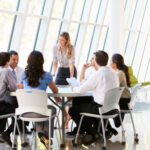
Course Manual 7: Best Practices
The Top Five Optimization Program Best Practices
Testing collisions, duplicative testing and personalization efforts, doubtful or inaccurate test results, uneven processes, or laborious operations. Sounds recognizable? If so, your optimization program may be lacking in governance. These problems are addressed through sound governance. Additionally, sound governance enables you to go beyond the straightforward adoption of an optimization tool and straightforward testing to realize the bigger picture of optimization. This larger picture of optimization involves optimizing and personalizing seamlessly across all delivery channels while utilizing all the market information you have, so as to offer the customer their next award-winning experience. Of course, while doing so, you are also enhancing important company KPI’s.
So what constitutes good governance? In a recent Personalization Thursdays webinar, Claire Schmitt and Ikong Fu of agency Brooks Bell discussed five essential best practices for governance of your optimization program.
Read further to learn more about them:
Determine the optimal program structure for you.
Before reviewing those best practices, think about which of the three alternative program structures you have or wish to implement: Centralized, Federated, or Decentralized. The structure of your optimization program affects your approach to governance.
Decentralized means that each product team manages optimization on their own. Although it is extremely nimble and requires no oversight, only large corporations like Amazon, which test and customize everything constantly, tend to employ it.
Most of you have or will have a centralized or federated structure that includes a Center of Excellence (CoE) for optimization in some way.
Product teams create and carry out their own optimization initiatives in a federated system. For businesses that have been optimizing for a while, this is perfect. They probably began with a centralized structure, but as the need for testing increased, the CoE turned into a bottleneck. They allowed product teams to take on optimization to address this problem.
The CoE defines best practices for optimization and is in charge of informing the company about the program’s performance and accomplishments in both centralized and federated structures.
Let’s get started with the governance best practices that your CoE should implement now that we’ve established that your program uses or will utilize a centralized or federated structure.
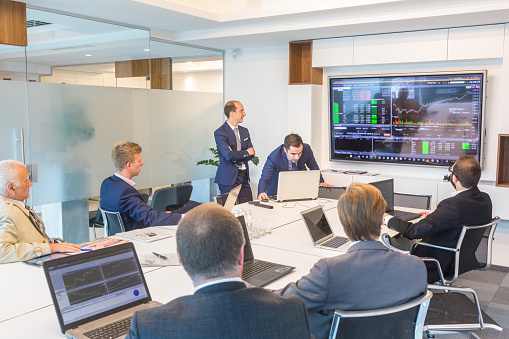
Best Practice 1: Make The Way Clear
Give them the knowledge and resources they need to get started with optimization to make it simple for them to get going right away.
Include a description of each phase in the activity execution process, from acquiring the data to guide your optimization approach to deciding what details to include in the final report. Additionally, specify who is in charge of each stage and how long it should take. Offer supporting materials and templates, such as activity plans that list the KPI’s to track and the audiences to serve, prioritized activity queues, road maps, and activity reports that gather data for creating insights. Stress the need of adhering to best practices for optimization, such as finishing a test, choosing the appropriate KPI’s, avoiding test collisions or duplicate tests, and utilizing data to inform what to test and how to personalize it.
Best Practice 2: Create And Sustain Excitement
Despite the fact that certain individuals may be hesitant to change, get them enthused about testing and personalization. Keep them interested once you’ve piqued their interest.
Encourage enthusiasm by engaging with product teams and demonstrating the possibility for success that optimization brings. Start with the teams that have shown an interest in optimization or that are willing to give it a try. Go in with a grasp of what matters to them, and then provide examples of successful initiatives you’ve undertaken, along with an estimation of the additional income they can generate. Assure them that you are there to assist.
Once people become enthusiastic, maintain that enthusiasm by holding gatherings where they may discuss their test results and customizing activities. By letting users estimate which experience won or how much lift a personalization activity produced, optimization can become more personally rewarding. Reward those who made accurate assumptions. Give credit to those who came up with optimization concepts that led to significant positive outcomes. Be cognizant to highlight the successes of the program.

Best Strategy 3: Hire Specialists In Optimization
Develop your testing and personalization skills so you can confidently shift the optimization solution’s control over to the recipient.
Create a training program tailored to different expertise levels and job responsibilities, such as developer and marketing, that includes regularly scheduled in-person or self-paced video courses. Think about introducing a certification program and compensating staff for developing competence in optimization. You’ll also be aware of who is qualified to carry out particular tasks as an additional benefit for future reference. Maintaining enthusiasm when new employees want to begin optimizing requires starting them right away with a required onboarding course. The fundamentals of the optimization process, as well as how to use templates and tools, should be covered in that course. Give everyone access to resources on optimization that covers the fundamentals and includes solutions to frequently asked questions.
Best Approach 4: Spread Awareness Of The Initiative To Progress It
Get buy-in and support for your optimization program by showcasing its effects in order to get more funding and support for future expansion.
Your program’s long-term goals, short-term objectives to achieve those goals, and success measures related to those objectives should all be documented. Run optimization processes that are intended to significantly raise such performance indicators. Increased income or engagement may be the main objectives, but it’s also important to create objectives and monitor metrics that show program progress, such as the number of activities executed annually and the activity win rate. Share this program performance data with executives, the program, and business stakeholders. Make extra sure to share it with your executive sponsor, who can assist you overcome any obstacles to program success and get funding for and buy-in to the program.
A program dashboard is a fantastic tool for communicating. Measures like win rate, bust rate, overall test volume, number of teams testing, and revenue effect should be tracked through these dashboards. Additionally, you ought to be able to examine them for the entire organization as well as for different teams. David Graves, an Adobe Target specialist, recently gave a fantastic webinar on creating a program dashboard. Ikong also gives a demonstration of Illuminate by Brooks Bell, a great online platform that allows you to document and communicate out the activities of your optimization program, as seen toward the end of the governance best practices webinar.
Best Practice 5: Provide Teams With The Resources They Need To Succeed
Make sure your team has the resources necessary to succeed so that the program may be successful.
Examine the optimizing tools your company is currently using to determine which are effective and which are rarely used. Identify any additional tools you require, such as an analytics solution or a data management platform, avoiding any products that aren’t helpful. Make sure your tools are correctly integrated so that users may have confidence in the information they produce. This confidence is crucial for program success. To avoid the problems outlined at the beginning of this instruction, make sure users are properly instructed on how to use the tools and best practices for their use. Consider adopting a program like Illuminate or one of the many other tools available to log your activities, report on the performance of your program, and offer a database of actions that users may access for testing ideas and insights.

Course Manual 8: Tribe Leads
Tribal Managers Not Tribe Leaders
At the risk of stating the obvious, hiring the appropriate individuals to manage agile transformations is essential to their success since people and culture have a significant impact on the performance of any organization. However, it’s challenging since organizations have always promoted managers when they needed leaders.
It was once said that a good tribe leader is like an umbrella–Their role consists of giving the team the direction they need to succeed, the tools they need to get there, and a focused environment in which they can carry out their work. Developing this focus for the team entails protecting them as much as possible from the many project redirects and coaching them to be the most productive team that they can be.
What are the essential contributions and qualities of a great tribe leader?
1. They provide a clear vision that can be broken down into short-term goals. An effective tribe leader is able to convey a clear, uncomplicated vision to his or her followers that serves as their “north star.” This vision must capture the “hearts and minds” of the team, but the tribe leader must also be able to break it down so that each squad understands its goal and critical outcomes. These must be precise and quantifiable so that the teams can monitor their development. The tribal leader must set goals for the upcoming quarter after reflecting on the group’s accomplishments and lessons learned from the previous quarter.
2. Business mindset. A smart tribe leader is aware of how his or her territory fits into the overall business. They acknowledge that they do not entirely “own” all of the employees, but rather depend on the chapters’ domain knowledge–There is no tolerance for building shadow capabilities which is so common in more traditional, hierarchical organizations. He or she promotes cross-domain cooperation and is open to resource sharing, even if it means compromising some of their tribe’s short-term objectives in order to make the best trade-off for the organization. For example, the tribe leaders at one of the major Dutch banks alternate hosting a monthly dinner and drinks event where they get together and candidly discuss who needs assistance and what they can do as a group to support one another.
3. Specialization. Having a thorough awareness of their clients, their key competencies, and the entire process is essential for a successful tribe lead. They must have a thorough awareness of IT systems and operational risk because they are responsible for managing the portfolio (P&L) and bringing about all change in their area. They must set an example for the behaviors they want from their teams in order to earn their respect. I am aware of some senior executives who regularly service customers, code, or do focus groups for their tribes (instead of just acting in a leadership capacity).
4. Coaching gives teams power. Tribal leaders have less management to do but more leading to do than more conventional organizations. To do this effectively, they must fight the impulse to make decisions for themselves and instead empower their employees to do so while providing guidance. Although it seems simple in theory, it is actually very challenging for many senior leaders who have previously been elevated according to their capacity for making judgments. The teams will be able to reflect on what they have learned and express what they can do better the next time if the leaders refrain from outlining what needs to be done and instead focus on asking the proper questions. Additionally, it entails being quite open to criticism, for example, by posing the question, “What could I have done differently to help you better?”
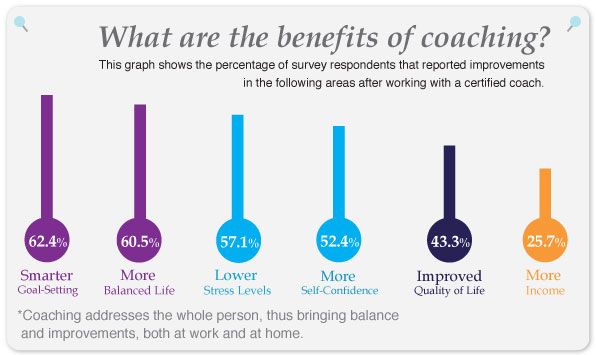
5. Having an intrapreneur mindset Companies and individuals who are successful have learned to shrewdly utilize the resources at their disposal in a market that is changing quickly. One of an entrepreneur’s important skills is inspiring teams to go further with the resources they have, and tribe leaders shouldn’t be any different. This calls for them to provide sufficient room and push their employees to consider other methods on a regular basis. A good tribe lead can collaborate with their teams and other tribe leads to collaboratively solve these limits, since Agile at Scale won’t just magically produce extra resources.
The speed and quality of an organization’s transformation to agile methodologies are greatly influenced by the selection of the appropriate candidates for tribe and chapter lead positions. But even the most gifted people occasionally find themselves in unfamiliar and inherently challenging situations, which is why anyone can benefit from strong coaching support. Companies starting an Agile at Scale journey should ensure that their leaders have the necessary skills and access to the appropriate resources, both from within the organization and from seasoned coaches.
The Spotify Organizational Model
This section takes a closer look at the components of the Spotify model.

Squads
A multifunctional team that operates autonomously is referred to as a squad. A team should have all the skills necessary to create and carry out a project or objective. Agile squads often have eight to ten members, similar to Scrum teams.
Squads operate independently and lack a team leader. However, a “product owner” (also known as a “PO”) is chosen and is responsible for setting priorities for the task. Squads operate freely and autonomously; they select their own structure and operational procedures.
A roadmap that outlines the strategic future of the business is created by the product owners of the various squads. The product backlog for each product owner’s team is derived from this roadmap.
The so-called Agile Coaches provide assistance to the squads.
Tribes
A Tribe is made up of a collection of Squads engaged in the same good or service. They have one or more Tribe leads who are in charge of fostering the best work environment. To facilitate effective teamwork, a tribe’s squads typically have their offices in the same building.
The fact that Tribes don’t exceed 100 members contributes to a positive work environment. When there are more than 100 employees, relationships are no longer considered sustainable.
The squads of a tribe present their work at scheduled meetings.
Chapters
As was already said, squads are multidisciplinary, meaning they are made up of people with a variety of skills. Employees with the same competence, or the same field of expertise, make up the so-called chapters. For instance, a chapter might be made up of programmers.
The goal of chapters is to give workers with similar skills a way to communicate their successes and setbacks while coordinating their efforts, for instance in terms of technologies, tools, procedures, and methodologies. A chapter lead arranges regular gatherings. The chapter lead is also in charge of assisting staff members with their ongoing education.
The chapters resemble the specialized divisions that are known in organizational systems in several ways. The employee’s squad, however, is their main team. However, the disciplinarian is the chapter lead. There is no hierarchy or team leader in the squad.
Guilds
Similar to chapters, guilds are made up of workers with related fields of study or hobbies. However, they engage the entire staff of the organization and are not only limited to specific Tribes.
Guilds can be thought of as volunteer groups. They don’t follow managerial orders and don’t just talk shop when exchanging information.
Compared to other types of organization, the Spotify concept is distinguished primarily by its rejection of conventional hierarchies. Here, autonomy is of utmost importance. There is a servant leadership approach, and managers still have a disciplinary role—just not in the primary team (squad), but in the chapter.
There is no leader on the squad’s principal leadership team; instead, the Product Owner (PO) fills a unique position. The PO assigns business value—value, result, and benefit for the company—to each team member’s activity. The cross-functional team makes its own decisions regarding how the tasks should be carried out.
The model used by Spotify is referred to as a “redesigned matrix organization.”
The squads’ multidisciplinary structure avoids the formation of silo structures. Without team members competing, client demands and happiness may be prioritized in this way. Everyone shares the same boat and has a single desire– to create worth.
A company culture that is open to learning from mistakes or experimenting is another aspect of the Spotify approach. Because squads are fully capable of acting and are not dependent on the decisions of a manager, risks can be taken in order to try out new things.
He who has never made a mistake has never attempted something new, as Albert Einstein famously said.
This error-friendly environment goes beyond just failure-based learning:
At Spotify, every employee has the option to experiment with new things for 10% of their working hours. Employees can test out new tools or techniques and so continuously improve their work processes during this so-called hack time.
Benefits And Drawbacks Of The Spotify Business Model
The Spotify agile model’s benefits and drawbacks are discussed below.
Squads, tribes, chapters, and guilds all have advantages. The Spotify business model has the following benefits.
• Basic organization that is straightforward: frequent meetings, assigning positions as needed, and establishing squads, tribes, chapters, and guilds.
• A squad can work independently on a good or service and operates like a miniature enterprise. More autonomy, teamwork, and production as a result.
• The interdisciplinary design of squads discourages the emergence of silos and fosters diversity and a focus on the needs of customers.
• Employee worth is increased by voluntary guilds based on interests. Individual squads can pick their own working styles and experiment to see what works best.
• Squads can be governed by objectives or OKR.
• Open error culture: no fines for mistakes and hack time for experimentation (Objectives and Key Results)
Squads, tribes, chapters, and guilds have drawbacks. The Spotify model has the following disadvantages:
• It doesn’t work for every business and is difficult to duplicate; customization and experienced advising are necessary.
• There are no guidelines or a plan of action, for example, to realize the goal. Complementary approaches address this issue.
• In addition to Scrum or Kanban, additional frameworks for steering, such as OKR or KPI’s, are required.
• If applied improperly, the Spotify approach might create conflicts of interest, much like a matrix structure because a team member cab a part of two groups: the squad, which is their primary team, and the chapter, which is their secondary team.
Conclusion
The Spotify business model has something to teach every organization. Anyone attempting to force their business into this framework without considering individual adaptability, without a transformation process, and without qualified professionals and coaches to guide them through the process, will have difficulty. However, for businesses, squads, tribes, chapters, and guilds can be a huge asset.
The organizational model’s success at Spotify and the failures of other businesses who hurriedly tried to adopt it teach us the following:
Copying so-called best practices will not instantly work in a setting as complex as a business organization. Analyzing the requirements and regulatory environment of one’s own business is required in order to create specialized solutions. Success depends on a number of factors, including the executives’ ability to coach in their new role, the executives’ best working manner, and the executives’ individual team responsibilities and composition.
Keep in mind that Megginson’s Theorem, also known as Darwin’s Law, does not just apply to species. It also holds true for businesses: “Those that adapt the quickest will survive, not the strongest or the wisest.” Additionally, for the majority of businesses, the agile approach used by Spotify is a far superior option than the conventional, rigid, and hierarchical organizational structure.
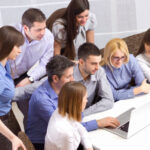
Course Manual 9: Skills Assessment
Optimize Your Organizational Talent with The People Paradox
Entrepreneurial CEO’s agree that the majority of their business problems are mostly caused by people. As an illustration, Rhythm Systems polled 900 CEO’s to identify the top 10 business difficulties. At least five of these ten are solely about people, while three more are motivated by people.
Most of us conceive of the individuals in our companies in terms of what they know, including their abilities, knowledge capacity, education, and even IQ. And yet, as the saying goes, we hire people based on their knowledge, but we sometimes fire them based on their character.

Case Study
Forbes concentrated on the company’s strategy and execution processes when they first began collaborating with a successful marketing firm to adopt the Entrepreneurial Operating System (EOS). They streamlined its organizational structure, established yearly and 90-day company goals, put in place a variety of management procedures, and produced a strategic vision and plan that the leadership team could agree upon.
Despite the fact that we are aware of how important people are to a company’s success, when we closely examine what CEO’s pay attention to, what they monitor, and how they prioritize their budgetary line items, we find that dealing with people issues is rarely the main priority. Isn’t this a widely accepted paradox? It is known as The People Paradox.
Why Is This The Case?
In addition to habits and inertia, there may be a variety of factors at work here. Gauging people is challenging. Aren’t “who individuals are,” “fitness for the job,” “team synergy,” and “cultural fit” simpler to assess than productivity, revenue, error rates, market penetration, or gross margins? It is simpler to think about improving a customer service procedure, the use of raw materials, or energy usage than it is to improve the performance of a team or the talent found throughout a company.
However, it doesn’t need to be that way. In truth, we already have the instruments in place to maximize organizational talent.

Resuming Our Case Study
Forbes quickly came to the conclusion that the client delivery division required personnel who would naturally approach their duties in a particular manner. They needed to precisely estimate how these individuals would approach their work because hiring and onboarding new personnel is expensive. They used the Kolbe tool package to accomplish that. Forbes established standards for every position in that division, evaluated both current employees and every applicant, and incorporated the findings into the selection, onboarding, and management of personnel.
The outcome? A department that over a three-year period doubled in size and was extremely functional and healthy. Not only did they get closer to the ideal of placing the right people in the appropriate seats, but they also gave managers the tools they needed to manage and lead their teams more effectively thanks to a deeper understanding of each member’s behavioral patterns. Forbes improved team cohesiveness by giving each team member the freedom to work with others while fully appreciating their individual mode of operation (MO).
Surprisingly, optimizing talent benefits the person as well as the business’s success, culture, and employee engagement. The advantages for workers have been observed to include greater happiness, career satisfaction, and advancement. According to The Predictive Index’s “The 2020 State of Talent Optimization” report, businesses that match talent with business strategy keep 30 percent more top performers on staff and achieve a 34 percent increase in employee productivity.
What exactly do instruments like The Predictive Index Behavioral Assessment and Kolbe A Index actually accomplish? They identify trends in how people and teams work. In particular, how they communicate, how people might tackle a challenge, what they need and want, and a lot more.
This knowledge enables us to reasonably forecast how each member of the team and/or the team as a whole will behave when performing their duties.
There are three vectors to take into account for one person within an organization:
1. The connection that individual has with themselves (self-awareness).
2. The connection between the individual and the position they occupy (fitness to the job).
3. How they get along with other people they frequently engage with, including their manager or coworkers (awareness of others).
Within an organization, we find the same three vectors as we move from one individual to an entire team:
1. The dynamics within the team (self-awareness).
2. The connection between the team’s objectives (fitness to the business strategy).
3. The connection between the team and other teams (awareness of others).
By optimizing our human capital at the individual and team levels, we can approach organizational operations with the same rigor, attention, care, and dedication we apply to our product lines, business financial structures (from capitalization to profit and loss), business processes (from documentation to enforcement), and marketing (from branding to campaign execution).

Here are five crucial strategic considerations to think about as you plan and implement elevating people optimization to the same level of concentration as the other parts of your business:
1. Who is in charge of making the most of the talent in your company? Does the CEO have accountability for that? The CHRO, or chief human resources officer? Or is it someone else on the executive committee?
2. Which platforms for talent optimization have you selected to employ?
3. How have you distributed the use of those tools across all teams?
4. How do you teach your organization’s managers and leaders to effectively employ them?
5. How will you measure the results for people?
Experience has shown that accommodating for The People Paradox significantly contributes to business success. It really doesn’t have to be one of the more difficult areas of business to manage and measure. Who doesn’t want their company to be better at managing their employees so they can handle opportunities and difficulties as they arise?
How Can Talent Optimization Help Employers Find And Keep The Best Employees?
Back to your employment brand again. The best workers on the market will want to work for you if you have a reputation for establishing clear expectations, coaching staff, rewarding outstanding performance, fostering professional development, and producing bottom-line outcomes. Businesses must comprehend what their employees must learn, why they must learn it, and the return on investment (ROI) in terms of improved performance and employee retention because the best employee talent base is continually learning and evolving. Another crucial element is alignment with training organizations and community colleges that offer programs and courses. Businesses will struggle to be adaptable and responsive to the market if they don’t recognize how quickly the entire skill acquisition process and learning environment are evolving.
Companies that nurture their talent and provide them with what they need to accomplish personal, social, and economic gain through their business will succeed. Talented individuals quickly realize that this is the main attraction to working there because they will have the chance to continuously learn and produce. When choosing a place to work, talented individuals will consider these factors, which also increase employee engagement. Employees that are engaged go above and beyond, which naturally improves the organization’s financial performance.
Although having a strong talent optimization system does not guarantee victory in every scenario, not having one means that you will most likely have an even more difficult challenge ahead of you.
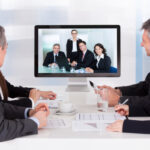
Course Manual 10: Employee Buy-In
Four Techniques to Increase Employee Engagement
Only 33% of workers are engaged, only 21% strongly agree that their performance is handled in a way that inspires them to produce excellent work, and only 13% think organizational leaders effectively communicate, according to Gallup’s 2017 “State of the American Workforce” study. On the other side, absenteeism is reduced by 41%, productivity is increased by 17%, sales are increased by 20%, and profitability is increased by 21% when employees are engaged.

Consider presenting your board of directors with these numbers. Who would disagree that it is worth the effort to increase employee engagement? Unfortunately, in order to motivate performance, organizations frequently concentrate on simpler incentive schemes, efficiency, and more measurable results.
Although not impossible, developing an engaged culture requires concentration and direction. To start forming your culture, adhere to these four strong recommendations.
1. Be A Better Leader
Realizing that you are not typical is the first step in becoming a great leader! Expecting that everyone will think, behave, and respond in the same way as you will only make you frustrated. Recognize that each person has unique talents, advantages, and weaknesses. Some people enjoy working alone, while others prefer teams. Others are strong “big picture,” theoretical thinkers, while some people excel at slogging through the specifics. Be aware of your communication style, your strengths, and your shortcomings, but more importantly, be aware that others will contribute a wide range of unique features and traits to the conversation. Respect what others have by acknowledging their individuality and assisting in the creation of situations where everyone’s talents and blind spots will contribute favorably to results.
Understanding what leadership is and how it affects the outcomes for your team is a necessary part of being a leader. It entails striking a balance between creating your own personal action plan and staying informed about what others are doing. Leaders build teams that function effectively together, balance the skills of the team members, and actively push team members to advance. Creating a secure atmosphere is leadership.
2. Establish the Environment
The typical person spends 328 days socializing with friends over the course of their lifetime and 4,806 days (13 years and two months) at work. Even though it isn’t required, since we spend the majority of our waking hours at work, the atmosphere is important. There aren’t many workplaces that have the ideal culture, where people skip in the front door, where yoga is offered after lunch, and where sleep rooms are encouraged. They’re all admirable goals to have, but developing the ideal environment is more about taking deliberate measures to make the current environment better than it is about becoming the ideal environment.
Establishing the environment involves determining when the team is worn out, angry, joyful, anxious, or run down. Put the phones on hold, arrange a tour of the facility, turn the music up loud for ten minutes, or just go sit on the front steps and take in the sunshine.
Too frequently, we believe that influencing the environment necessitates a costly program. Numerous, culture-shaping experiences are built up from small, repetitive gestures. The secret is to constantly, deliberately evaluate and work to create a favorable, not perfect, culture.
Understanding what leadership is and how it affects the outcomes for your team is a necessary part of being a leader.
3. Mentor
Be a mentor if you are not already one. Find a mentor if you don’t already have one. Being a sounding board and a mentor has incalculable worth and can increase both group and individual drive.
4. Create a Diverse Culture and Team

Case Study
Dr Peter Langton, organizational psychologist, began his work as the resident director of a Virginia college. From a leadership standpoint, the best part of working in student affairs was that he could fire his employees each year! The resident director quickly accumulates years’ worth of team-building expertise because one-third of your staff departs each year and residential life tends to progress toward better living options.
He hired his first crew, and they were a carbon copy of him. Why not hire people like yourself, after all? He was successful, interesting, and given this leadership role. After two weeks, He realized his mistake! His team was entertaining; however, they didn’t pay attention to details. As the 200 first-year students and their families arrived at the front door, they had room keys lying around, incomplete room condition papers, and no structure in place. He chose a group of employees for year two that were not like himself. What a difference!
Twenty-five years later, he spends time advising executives on how to create teams that represent a variety of ideas, backgrounds, cultures, races, and ethnicities. The more perspectives, the better. Varied points of view, however, necessitate a leader with excellent conflict resolution abilities and honed communication skills, as different ideas frequently result in divergent and varying opinions.
This kind of diversity produces creative solutions, superior results, and requires less revision when ideas are put into practice. An effective team is not a collection of identical individuals; rather, it is a frenzied and continuous interchange of knowledge, thoughts, and ideas that all work toward the same objective.
Another phrase for the leader’s responsibility to form the environment, establish the culture, and continuously hone his or her leadership skills is “optimizing employee engagement.” Always being supportive of others’ outcomes is what leadership is all about. Leadership is a combination of honing your own abilities while encouraging others to do the same.
For Staff Optimization Initiatives, A Tested Six-Step Process
A bottom-up strategy is basing personnel decisions on actual client need. Such an approach can be effective for workforce optimization when used in an organized manner. Such a program is composed of the following six steps.
1. Identify The Workforce And Activity Drivers
What tasks are carried out throughout daily operations, how much time is needed to complete each particular task, and what are the primary motivations behind these tasks? A DILO (day-in-the-life) analysis, in which a number of employees are observed for a few days and their activities are recorded
2. Establish Target Times And Work Procedures
The next stage is to determine how much time is needed for the activities that the analysis highlighted. By establishing goal times, processes may be standardized and personnel can be informed of the best practices. These instructions may include both thorough explanations of how to carry out each action and the recommended amount of time for each operation.
3. Construct A Model Of Staffing Demand
A staffing model that makes use of a common set of calculations, guidelines, and parameters is required to convert the study of activities and workforce drivers into a useful staffing requirement. The kind of input data used depends on what the primary workforce driver is, although the information obtained by the point-of-sale system is the most typical sort of input. In contrast to a scheduling tool that may be impacted by local circumstances and limits or by labor legislation, staffing demand is simply impacted by the workforce drivers.
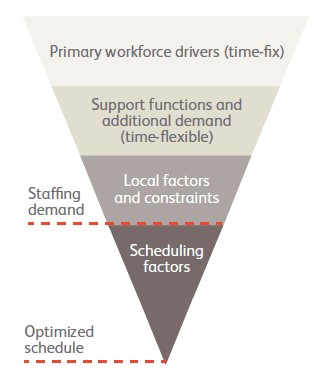
4. Match The Staffing Model To The Company’s Goals
Verifying that the desired levels of the parameters are in line with the organization’s business objectives is crucial when developing a staffing model. For instance, if a business sets a goal of cutting back on total hours worked by 10%, the target levels of the parameters will be changed to reflect this reduction.
5. Put The Staffing Strategy Into Action
Depending on the sort of business or even the specific site that is being evaluated, staffing optimization is accomplished in a variety of ways, but there are some general considerations that should be made in this stage. Make sure the site manager or shop manager comprehends the model’s logic, as well as its parameters and target levels. By giving the management statistics and the model’s results, you can increase buy-in and make its use easier.
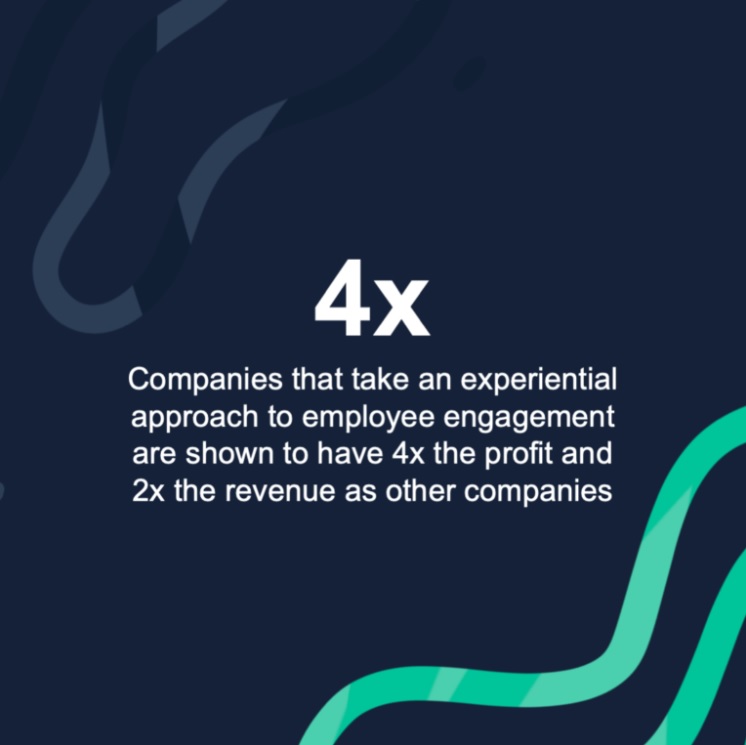
6. Follow Up And Apply The Model Consistently
It’s critical to keep an eye on the implementation’s results through data analysis and interactions with particular target groups. There are two types of follow-up phases: short term and long term. The measures to help ensure that the results and objectives of the first personnel optimization project are met should be the main focus of the short-term follow-up. Key performance indicators (KPI’s) for staffing should be included to the management system to enable long-term follow-up on workforce optimization.
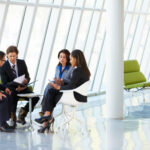
Course Manual 11: Goal-Setting
What Is A Goal-Setting Framework And How Might It Improve Business Outcomes?
Do you have business goals? How can you accomplish your company objectives? And why is a goal-setting framework useful? Every company requires a framework for creating goals. It involves choosing your company’s goals and the course of action to take to attain them. A goal-setting framework will make it easier to keep track of your progress and align the short- and long-term goals for your company. Setting goals is a key component of a company’s business strategy.
What Is a Framework for Goal Setting?
The goal-setting framework is a method that outlines specific steps for defining and achieving goals. Clarifying what you want, defining attainable goals, creating an action plan, and monitoring your progress are the four steps that make up this process.
You begin by stating your goals clearly. It might seem like a straightforward task, but it’s not. Many people neglect to consider what they truly desire in life. Every day, they simply go through the motions without having a specific goal or destination in mind. The next step is to create a plan of action and quantifiable goals. There should be indicators of your success, such as sales or measurable numbers of social media followers. The final step is to monitor your progress toward your goals.
Why Should You Use a Framework for Goal-Setting?
You should create a framework for your goals for a variety of reasons. Clarifying your goals and objectives will make it simpler for you to create an action plan for accomplishing them. A goal-setting framework can help you create goals more effectively than just writing them down without much thought as to how you’ll get there.
The goal-setting framework is designed to assist you in breaking down your objectives into more doable and more frequently resolved tasks. By doing this, you have a better chance of reaching your objectives and attaining the desired outcomes. It is more than just a simple to-do list because it includes a more specific technique to assess success and advancement.
How Effective Is the Business Goal-Setting Framework?
In business, goal-setting frameworks are often productive and successful. Using this approach to aid in your success in the business world has a wide range of advantages. Your organization will have a distinct vision and an organized strategy for accomplishing it if you use a structured goal-setting framework.
Any business’s goal is to achieve its financial targets through offering products and/or services in line with its strategic goals. As a result, they must establish a clear set of objectives that address every aspect of management, including marketing, finances, production, etc. To succeed in corporate operations, people must cooperate toward a common objective and adhere to clearly defined roles and duties. A larger team will become a well-oiled machine with a clear framework for goals.
7 Goal-Setting Frameworks for Your Business to Consider
Frameworks for setting goals come in a variety of forms and sizes. Some of the most well-liked and efficient goal-setting frameworks are listed in the following seven. Discover what will help your firm achieve its goals through reading.
OKR’s
Objectives and Key Results, or OKR’s, is a framework for creating goals that was first created by Intel. Since then, numerous more firms have also adopted it.
The fundamental tenet of employing the use of OKR’s is the division of established goals into objectives. These goals are then further broken down into quantifiable key results that will show whether they have been attained.
SMART Goals
SMART objectives are among the most well-liked and well-known frameworks for goal-setting. Specific, measurable, attainable, pertinent, and time-bound is the acronym for SMART goals.
• Specific – Be clear about what you hope to accomplish.
• Measurable – Track your development with measurements.
• Achievable – Don’t overextend yourself when setting goals.
• Relevant – Make the objective relevant to the expansion of your company.
• Time-bound – Establish a deadline for completing your goals and adhere to it.

Backward Goals
The backward goal-setting framework is one of the most intriguing ones. With this system, your objectives and key results are determined by starting with the desired outcome and working backward from there.
Big Hairy Audacious Goals (BHAG)
The most difficult goals you will ever set for yourself are BHAGs, or big hairy audacious goals. They can appear out of reach because they are so large and ambitious.
BSQ
BSQ or Think Big, Act Small, Move Quickly encourages individuals to consider the kind of effect they want to have on their organization and then move swiftly to achieve those objectives.
Goal Pyramid
Your big hairy audacious goal (BHAG), which should be something that inspires and motivates you, is at the summit of the pyramid. Your intermediate objectives, or the steps you must take to realize your BHAG, are at the top of the pyramid. Your short-term goals are located at the top of the pyramid and should be reachable in a specific amount of time. You must have daily goals at the base of the pyramid.
One Word Goal-Setting
People who use the one-word goal-setting method choose one word that best describes their goals. It should outline the overarching objective while also sustaining their motivation along the route.
Setting Your Business Goals in 7 Simple Steps
You now understand the significance of goal planning. Let’s look at how you might define objectives for your company. Here are 7 simple measures to take.
Step 1: Consult With Executives
Getting input from the executive team is the first stage in establishing organizational goals. This will guarantee that everyone is aware of the objectives and knows what is expected of them.
Step 2: Select Your Business’s One-Year Goals and Objectives
The next step is to select the business goals and objectives for the upcoming year after receiving input from the executive team. These must to be in line with the overall strategy and vision of the business.
Step 3: Divide It Into Quarters
Once the overarching objectives have been established, it is critical to divide them into quarterly targets. This will make it simpler to monitor development and guarantee that everyone is striving for the same end result.
Step 4: Create SMART Goals
Ensuring that the objectives are SMART—specific, measurable, achievable, relevant, and time-bound—is the fourth step.

Step 5 – Set No More than 3-5 OKR’s
The fact that businesses frequently set too many goals at once is one of the main issues with goal planning. It is preferable to only set three to five OKR’s per quarter in order to prevent making this error.
Step 6 – Use Examples
Using examples for those who might not have much goal-setting experience is the process’s last step. By doing this, you can be sure that everyone knows what you want them to do.
Step 7 – Cascade Down and Align Up
It’s crucial to cascade down and align up your quarterly objectives while discussing them. This will guarantee that everyone is aware of expectations and is on the same page.
Conclusion
Setting corporate goals and objectives is made easier but still effective by using the goal-setting framework. Any company’s needs may be accommodated, and it ensures that everyone is pursuing the same objective. You can develop productive business objectives that will enhance the performance of your organization by following these steps.
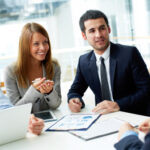
Course Manual 12: Vision Setting
What Distinguishes A Mission Statement From A Vision Statement?
You must first grasp what your vision statement is not before coming up with one. Contrast it with a mission statement to avoid confusion. These statements are grounded in the present and intended to explain the purpose of the organization to both internal and external stakeholders.
In contrast to mission statements, vision statements focus on the future and are written more for the company’s staff than for its clients.
According to Paige Arnof-Fenn, founder and CEO of Mavens & Moguls, a global strategic marketing consulting firm, “the mission is about where you are now and why you exist, whereas the vision is about your aspirations for the future and how you will get there.” The team should be inspired by the goal to change the world and contribute to a cause greater than themselves.
“A vision statement looks at the fulfillment of that goal,” explained Jessica Honard, co-owner of North Star Messaging + Strategy, a copywriting and messaging business that caters to entrepreneurs. “A mission statement focuses on the purpose of the company.
Although your organization’s mission and vision statements should both be fundamental components of your business, your vision statement should act as your business’s compass.
Aspiration is a vision. A mission may be put into practice, according to Jamie Falkowski, managing director of Day One Agency, a marketing and communications firm.


What Influences Your Vision?
Determining who will contribute to the creation of a vision statement is the first step in the writing process. It is easy enough to compile the opinions of every employee in a small corporation. To ensure that you record a variety of staff voices in a larger organization, you might need to be more selective.
Brandon Shockley, director of research at the branding and marketing agency 160over90, suggests holding a series of workshops with important stakeholders who represent different parts of your company to achieve this. You can form teams to draft different iterations of the statement while getting input from the rest of the business.
Individual stakeholder interviews are another method Falkowski recommends as a successful strategy to promote candor among all parties involved and to get accurate and sincere input. As the foundation for a vision statement, staff members can find recurring themes and paint a verbal or visual picture of the organization’s future.
Using your vision statement
It’s important to decide early on where and how your business will use its vision statement. As a result, the procedure will become more than just an intellectual one, according to Shockley. If a vision statement is never genuinely incorporated into company culture, it provides little worth to display it in the lobby or promote it on social media.
Shockley advised that you should be considering your vision business statement as a component of your strategy plan. “It is an internal communication tool that assists in uniting and motivating your team to accomplish company objectives.”
A vision statement ought to be seen as a dynamic document that will be reviewed and updated as a result. Most importantly, it needs to be addressed to your staff.
“You’ll never be able to carry out the vision if your staff don’t get into it,” warned Keri Lindenmuth, marketing manager for the Kyle David Group, a provider of digital and computer solutions. “Your staff should believe in the vision statement. Then and only then will they make choices and do things that are consistent with the mission of your company.”
Holding corporate seminars and brainstorming sessions is one technique to assist employees in claiming ownership of the goal. Encourage staff members to think of ways they may apply the vision statement’s values to their daily work at these meetings. After that, when staff members are observed pursuing the vision, you can recognize and reward them.
Writing A Vision Statement: Steps
It may seem like an onerous undertaking to write the ideal vision statement, but it doesn’t have to be. It’s not necessary to invent the wheel in order to create a potent vision statement. Instead, Alison Brehme, CEO of Virtual Corporate Wellness, a supplier of employee health and wellness programs, advises using the knowledge you currently have to direct your job.
A firm’s mission, purpose, goals, and values are all taken into consideration while developing a company vision, according to Brehme. Include these ideas and convictions in your vision statement.
In order to figure out how you might set your company apart from your competitors’, Lindenmuth suggests also looking at their vision statements.
A vision statement should be brief, no more than one or two sentences. You want everyone in your business to be able to swiftly repeat it and, more significantly, understand it, as Falkowski argues. A vision statement, however, must be more than just a catchy slogan. Falkowski remarked, “[It] can be clever and distinctive, but this is for your team and culture, not for marketing a particular product.”
If you feel that your vision cannot be fully expressed in a brief vision statement, don’t worry. A lengthier version can be made, but it shouldn’t be the one that is made public.
Let’s face it: Most corporate leaders, let alone boards of directors, won’t be able to succinctly summarize their vision in one or two sentences. Shannon DeJong, owner of the brand consultancy House of Who, remarked, “That’s OK. “Prepare a comprehensive version of your vision that is only to be seen by the leadership. Consider the lengthy version as your go-to guide for understanding why you started your company in the first place.
Taylor advised beginning by outlining the boldest objectives for your company. “Zooming out on what your organization and the world will look like if you achieve your long-term goals will help you review them in a collaborative setting. The core of your vision statement is actually that zoomed-out image of your success.
By probing inquiries about the essence of the business, such as what deliverables they most enjoyed working on, the partners they loved working with, and the environment they aspired to create while cooperating, Taylor said her team developed a foundational understanding of their corporate vision.
Since this kind of statement creates your organization’s vision for the influence your business makes on the world, it is crucial to begin with the big questions, according to Taylor.
When creating a vision statement, Honard advises considering questions that take into account the size and influence your organization will eventually have. She employs the following inquiries to help clients come up with their vision statement:
• What long-term effects do I hope my brand will have on my neighborhood, my sector, or the entire world?
• How will my brand eventually engage with consumers and clients?
• How will the culture of my company affect the lives of the people who work there?
After you’ve responded to these inquiries, Honard added, “you’ve built a pathway between your present and your future.”
Once you’ve gathered all the data and started writing, don’t be scared to dream big. For the time being, don’t worry about practicality; what at first seems impossible may eventually be accomplished with the proper team and technologies. Work on developing a vision statement that captures the unique characteristics of your company and its goals.
There is nothing wrong, according to Shockley, with a vision statement that is bold, distinctive, or even unpopular. “A vision statement is likely to have average results if it outlines a universal aim that everyone can support. Delivering a great experience is a goal that may be achieved in any setting, whether a hospital, bank, or health club.
Taylor advises making a brand vision board if you’re interested in developing your idea further. The motto of your business, a “who we are” and “what we do” section, a business vision statement, a list of your ideal clientele and their problems, your content mission statement, advertisements, products, and SEO keywords are all included on a vision board.
Anyone in a company can refer to a vision board as a one-page business plan to rapidly recall the important ideas that guide the work, according to Taylor.
Resources And Templates For Vision Statements
If you are still having trouble coming up with a vision statement and do not have the budget to engage a professional, you may readily access a variety of worksheets and templates that are available for download and provide a framework for doing so. You can improve your vision statement by using the following five worksheets:
• Smartsheet: Vision statement worksheet
• Diggles Creative: Brand vision worksheet
• Whole Whale: Nonprofit vision and mission statement worksheet
• Lone Star College System: Worksheets for developing mission and vision statements
• Khorus: Mission, vision and values worksheets
You can establish your company’s main values, priorities, and goals with the aid of these free tools, which provide detailed instructions. This will help you get closer to expressing your own vision. You can use them individually or with your staff as a whole.

Advice On How To Write Your Vision Statement
A vision statement should inspire creativity while offering direction and clarity. It will help your business decide on its course and establish its priorities while pushing your staff to improve. Above all, a vision statement ought to be inspiring to everyone who works for your organization, not just the top executives.
The most challenging aspect of writing a vision statement is frequently come up with language that accurately captures your principles and illuminates your company’s identity without seeming too general. Starting with a clear and distinctive vision statement will help you set your company apart from the competition.
According to DeJong, “vision statements should show how the world will be transformed as a result of your business’s involvement in it.” For a vision statement to be effective, in her opinion, it must be supported by genuine enthusiasm. “So many CEOs take unnecessary risks with their vision, which is a major error when trying to build a brand that people genuinely care about,” says the author.
Here’s a quick summary of things to do when formalizing a vision statement that captures the distinctiveness of your firm:
• Make predictions for the next five to ten years
• Set high goals and great dreams
• Incorporate the present tense
• Speak in plain, succinct, and jargon-free language
• Give it a passionate, motivating feel
• Align it with the objectives and values of your company
• Establish a strategy for informing your staff members about your vision statement
• Get ready to devote time and money to the goal you set
Your finished vision statement should provide a clear indication of the direction your business is going in. According to Honard, many of her customers have used their vision statements to guide their overarching future objectives. For instance, they’ve expanded their marketing efforts to help them achieve their goals, changed their focus to more clearly represent the results they want, or put more emphasis on a certain element of their brand. All of these elements are currently helping them achieve their goals.
Workshop Exercises
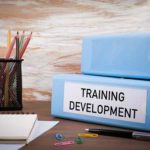
Optimization Overview Exercises
01. Baseline Assessment : Explain in your own words how this process will directly impact upon your department?
02. Understanding Structure : Explain in your own words how this process will directly impact upon your department?
03. Structural Assessment : Explain in your own words how this process will directly impact upon your department?
04. Team Structure : Explain in your own words how this process will directly impact upon your department?
05. Executive Leadership : Explain in your own words how this process will directly impact upon your department?
06. Resource Optimization : Explain in your own words how this process will directly impact upon your department?
07. Best Practices : Explain in your own words how this process will directly impact upon your department?
08. Tribe Leads : Explain in your own words how this process will directly impact upon your department?
09. Skills Assessment : Explain in your own words how this process will directly impact upon your department?
10. Employee Buy-In : Explain in your own words how this process will directly impact upon your department?
11. Goal-Setting : Explain in your own words how this process will directly impact upon your department?
12. Vision Setting : Explain in your own words how this process will directly impact upon your department?
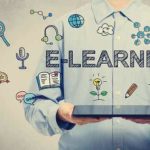
SWOT & MOST Analysis Exercises
01. Undertake a detailed SWOT Analysis in order to identify your department’s internal strengths and weaknesses and external opportunities and threats in relation to each of the 12 Optimization Overview processes featured above. Undertake this task together with your department’s stakeholders in order to encourage collaborative evaluation.
02. Develop a detailed MOST Analysis in order to establish your department’s: Mission; Objectives; Strategies and Tasks in relation to Optimization Overview . Undertake this task together with all of your department’s stakeholders in order to encourage collaborative evaluation.
Project Studies
Project Study (Part 1) – Customer Service
The Head of this Department is to provide a detailed report relating to the Optimization Overview process that has been implemented within their department, together with all key stakeholders, as a result of conducting this workshop, incorporating process: planning; development; implementation; management; and review. Your process should feature the following 12 parts:
01. Baseline Assessment
02. Understanding Structure
03. Structural Assessment
04. Team Structure
05. Executive Leadership
06. Resource Optimization
07. Best Practices
08. Tribe Leads
09. Skills Assessment
10. Employee Buy-In
11. Goal-Setting
12. Vision Setting
Please include the results of the initial evaluation and assessment.
Project Study (Part 2) – E-Business
The Head of this Department is to provide a detailed report relating to the Optimization Overview process that has been implemented within their department, together with all key stakeholders, as a result of conducting this workshop, incorporating process: planning; development; implementation; management; and review. Your process should feature the following 12 parts:
01. Baseline Assessment
02. Understanding Structure
03. Structural Assessment
04. Team Structure
05. Executive Leadership
06. Resource Optimization
07. Best Practices
08. Tribe Leads
09. Skills Assessment
10. Employee Buy-In
11. Goal-Setting
12. Vision Setting
Please include the results of the initial evaluation and assessment.
Project Study (Part 3) – Finance
The Head of this Department is to provide a detailed report relating to the Optimization Overview process that has been implemented within their department, together with all key stakeholders, as a result of conducting this workshop, incorporating process: planning; development; implementation; management; and review. Your process should feature the following 12 parts:
01. Baseline Assessment
02. Understanding Structure
03. Structural Assessment
04. Team Structure
05. Executive Leadership
06. Resource Optimization
07. Best Practices
08. Tribe Leads
09. Skills Assessment
10. Employee Buy-In
11. Goal-Setting
12. Vision Setting
Please include the results of the initial evaluation and assessment.
Project Study (Part 4) – Globalization
The Head of this Department is to provide a detailed report relating to the Optimization Overview process that has been implemented within their department, together with all key stakeholders, as a result of conducting this workshop, incorporating process: planning; development; implementation; management; and review. Your process should feature the following 12 parts:
01. Baseline Assessment
02. Understanding Structure
03. Structural Assessment
04. Team Structure
05. Executive Leadership
06. Resource Optimization
07. Best Practices
08. Tribe Leads
09. Skills Assessment
10. Employee Buy-In
11. Goal-Setting
12. Vision Setting
Please include the results of the initial evaluation and assessment.
Project Study (Part 5) – Human Resources
The Head of this Department is to provide a detailed report relating to the Optimization Overview process that has been implemented within their department, together with all key stakeholders, as a result of conducting this workshop, incorporating process: planning; development; implementation; management; and review. Your process should feature the following 12 parts:
01. Baseline Assessment
02. Understanding Structure
03. Structural Assessment
04. Team Structure
05. Executive Leadership
06. Resource Optimization
07. Best Practices
08. Tribe Leads
09. Skills Assessment
10. Employee Buy-In
11. Goal-Setting
12. Vision Setting
Please include the results of the initial evaluation and assessment.
Project Study (Part 6) – Information Technology
The Head of this Department is to provide a detailed report relating to the Optimization Overview process that has been implemented within their department, together with all key stakeholders, as a result of conducting this workshop, incorporating process: planning; development; implementation; management; and review. Your process should feature the following 12 parts:
01. Baseline Assessment
02. Understanding Structure
03. Structural Assessment
04. Team Structure
05. Executive Leadership
06. Resource Optimization
07. Best Practices
08. Tribe Leads
09. Skills Assessment
10. Employee Buy-In
11. Goal-Setting
12. Vision Setting
Please include the results of the initial evaluation and assessment.
Project Study (Part 7) – Legal
The Head of this Department is to provide a detailed report relating to the Optimization Overview process that has been implemented within their department, together with all key stakeholders, as a result of conducting this workshop, incorporating process: planning; development; implementation; management; and review. Your process should feature the following 12 parts:
01. Baseline Assessment
02. Understanding Structure
03. Structural Assessment
04. Team Structure
05. Executive Leadership
06. Resource Optimization
07. Best Practices
08. Tribe Leads
09. Skills Assessment
10. Employee Buy-In
11. Goal-Setting
12. Vision Setting
Please include the results of the initial evaluation and assessment.
Project Study (Part 8) – Management
The Head of this Department is to provide a detailed report relating to the Optimization Overview process that has been implemented within their department, together with all key stakeholders, as a result of conducting this workshop, incorporating process: planning; development; implementation; management; and review. Your process should feature the following 12 parts:
01. Baseline Assessment
02. Understanding Structure
03. Structural Assessment
04. Team Structure
05. Executive Leadership
06. Resource Optimization
07. Best Practices
08. Tribe Leads
09. Skills Assessment
10. Employee Buy-In
11. Goal-Setting
12. Vision Setting
Please include the results of the initial evaluation and assessment.

Project Study (Part 9) – Marketing
The Head of this Department is to provide a detailed report relating to the Optimization Overview process that has been implemented within their department, together with all key stakeholders, as a result of conducting this workshop, incorporating process: planning; development; implementation; management; and review. Your process should feature the following 12 parts:
01. Baseline Assessment
02. Understanding Structure
03. Structural Assessment
04. Team Structure
05. Executive Leadership
06. Resource Optimization
07. Best Practices
08. Tribe Leads
09. Skills Assessment
10. Employee Buy-In
11. Goal-Setting
12. Vision Setting
Please include the results of the initial evaluation and assessment.

Project Study (Part 10) – Production
The Head of this Department is to provide a detailed report relating to the Optimization Overview process that has been implemented within their department, together with all key stakeholders, as a result of conducting this workshop, incorporating process: planning; development; implementation; management; and review. Your process should feature the following 12 parts:
01. Baseline Assessment
02. Understanding Structure
03. Structural Assessment
04. Team Structure
05. Executive Leadership
06. Resource Optimization
07. Best Practices
08. Tribe Leads
09. Skills Assessment
10. Employee Buy-In
11. Goal-Setting
12. Vision Setting
Please include the results of the initial evaluation and assessment.

Project Study (Part 11) – Logistics
The Head of this Department is to provide a detailed report relating to the Optimization Overview process that has been implemented within their department, together with all key stakeholders, as a result of conducting this workshop, incorporating process: planning; development; implementation; management; and review. Your process should feature the following 12 parts:
01. Baseline Assessment
02. Understanding Structure
03. Structural Assessment
04. Team Structure
05. Executive Leadership
06. Resource Optimization
07. Best Practices
08. Tribe Leads
09. Skills Assessment
10. Employee Buy-In
11. Goal-Setting
12. Vision Setting
Please include the results of the initial evaluation and assessment.

Project Study (Part 12) – Education
The Head of this Department is to provide a detailed report relating to the Optimization Overview process that has been implemented within their department, together with all key stakeholders, as a result of conducting this workshop, incorporating process: planning; development; implementation; management; and review. Your process should feature the following 12 parts:
01. Baseline Assessment
02. Understanding Structure
03. Structural Assessment
04. Team Structure
05. Executive Leadership
06. Resource Optimization
07. Best Practices
08. Tribe Leads
09. Skills Assessment
10. Employee Buy-In
11. Goal-Setting
12. Vision Setting
Please include the results of the initial evaluation and assessment.
Program Benefits
Operations
- Employee Utilization
- Capacity Planning
- Process Improvement
- Systems Understanding
- Involved Commitment
- Rising Productivity
- Clear Assignments
- Personal Effectiveness
- Overcoming Inertia
- Negative Entropy
Management
- Engaged Workforce
- Increased Trust
- Heightened Teamwork
- Productive Meetings
- Idea Generation
- Role Clarity
- Tasking Formula
- BOP Understanding
- Strategic Direction
- Shared Vision
Human Resources
- Improved Morale
- Reduced Conflict
- Infrastructure Knowledge
- Management Processes
- Managing Change
- Heightened EQ
- Transparent Systems
- Team Building
- Change Culture
- Solution Ownership
Client Telephone Conference (CTC)
If you have any questions or if you would like to arrange a Client Telephone Conference (CTC) to discuss this particular Unique Consulting Service Proposition (UCSP) in more detail, please CLICK HERE.
























